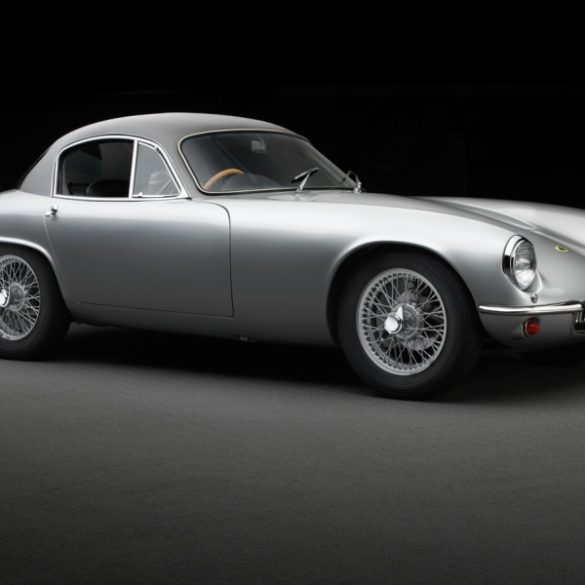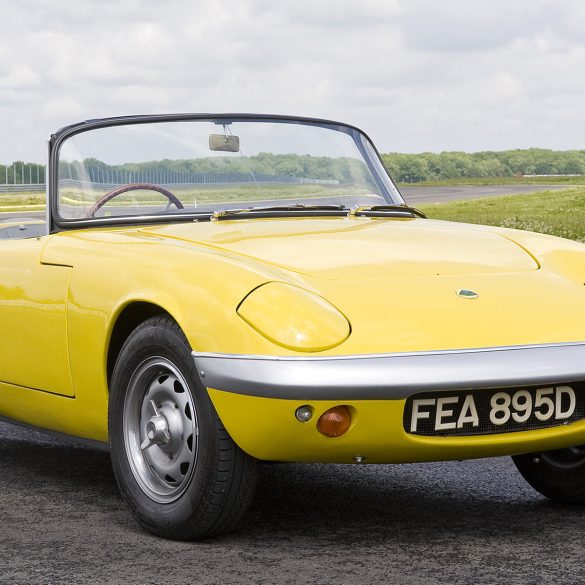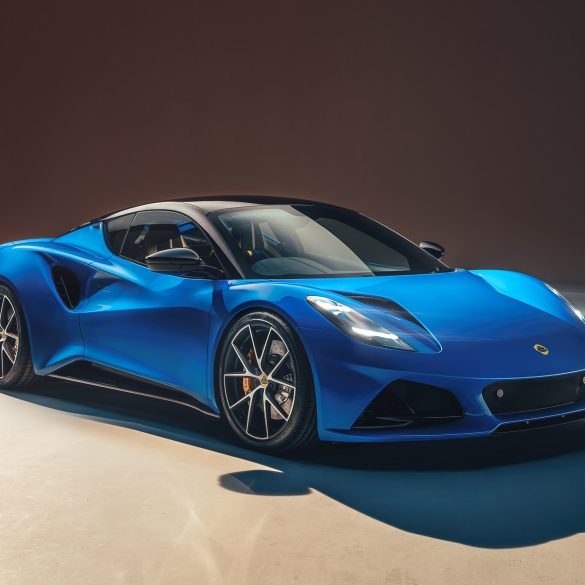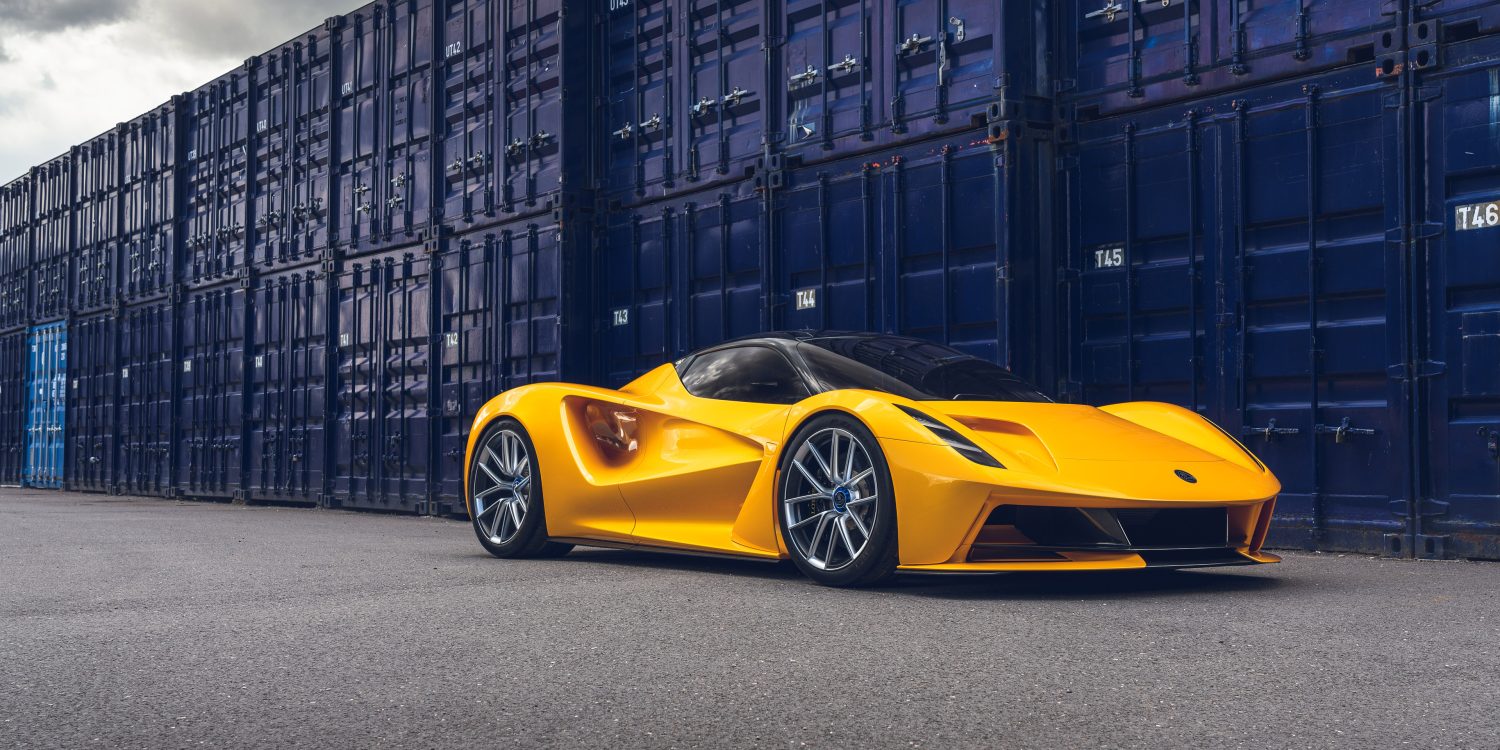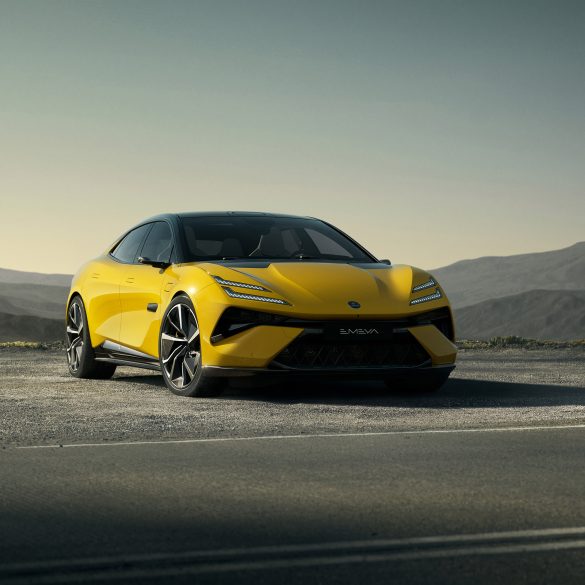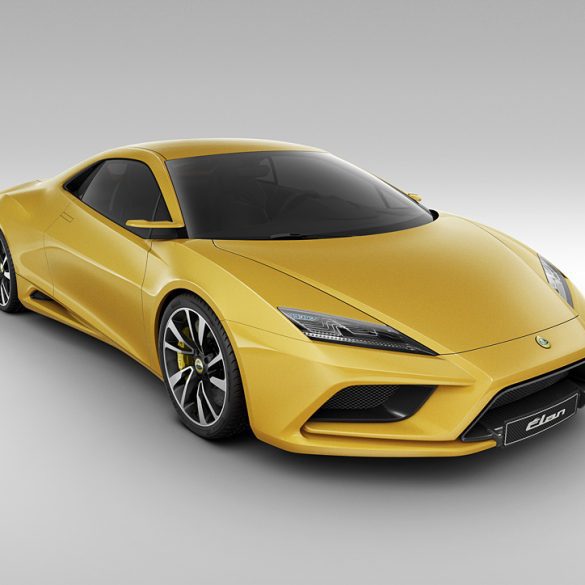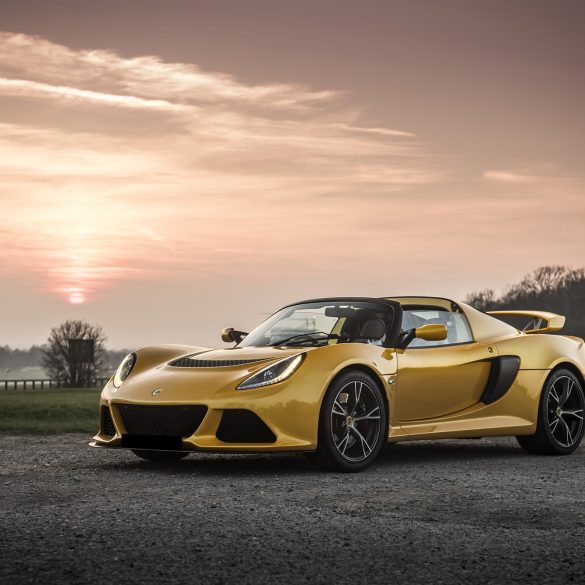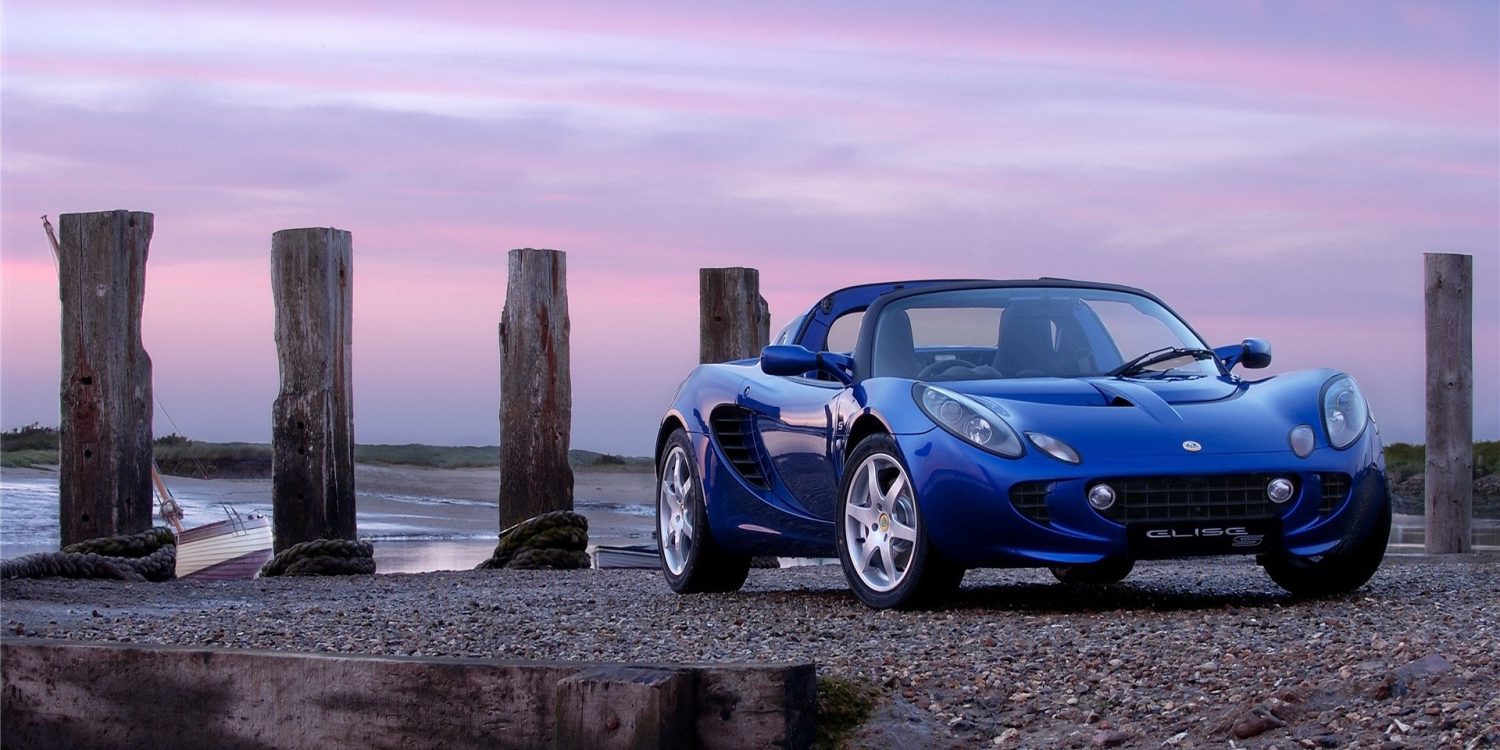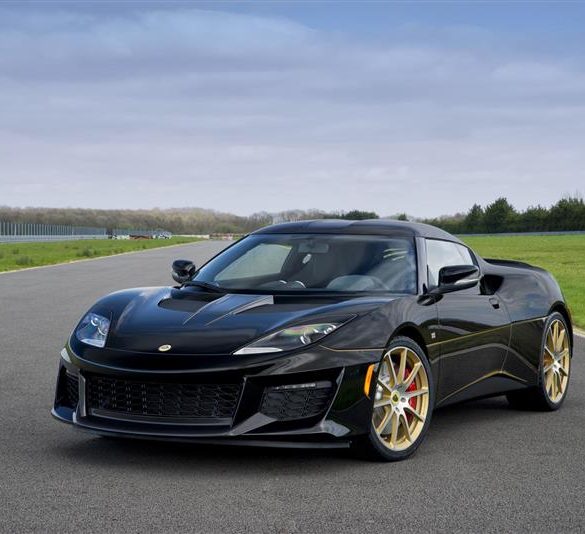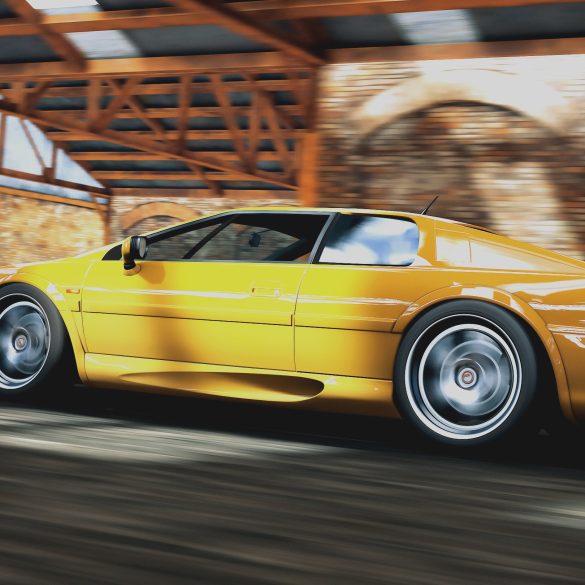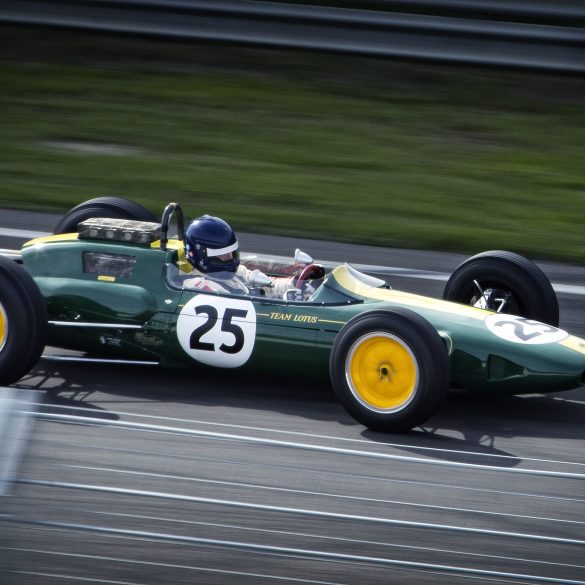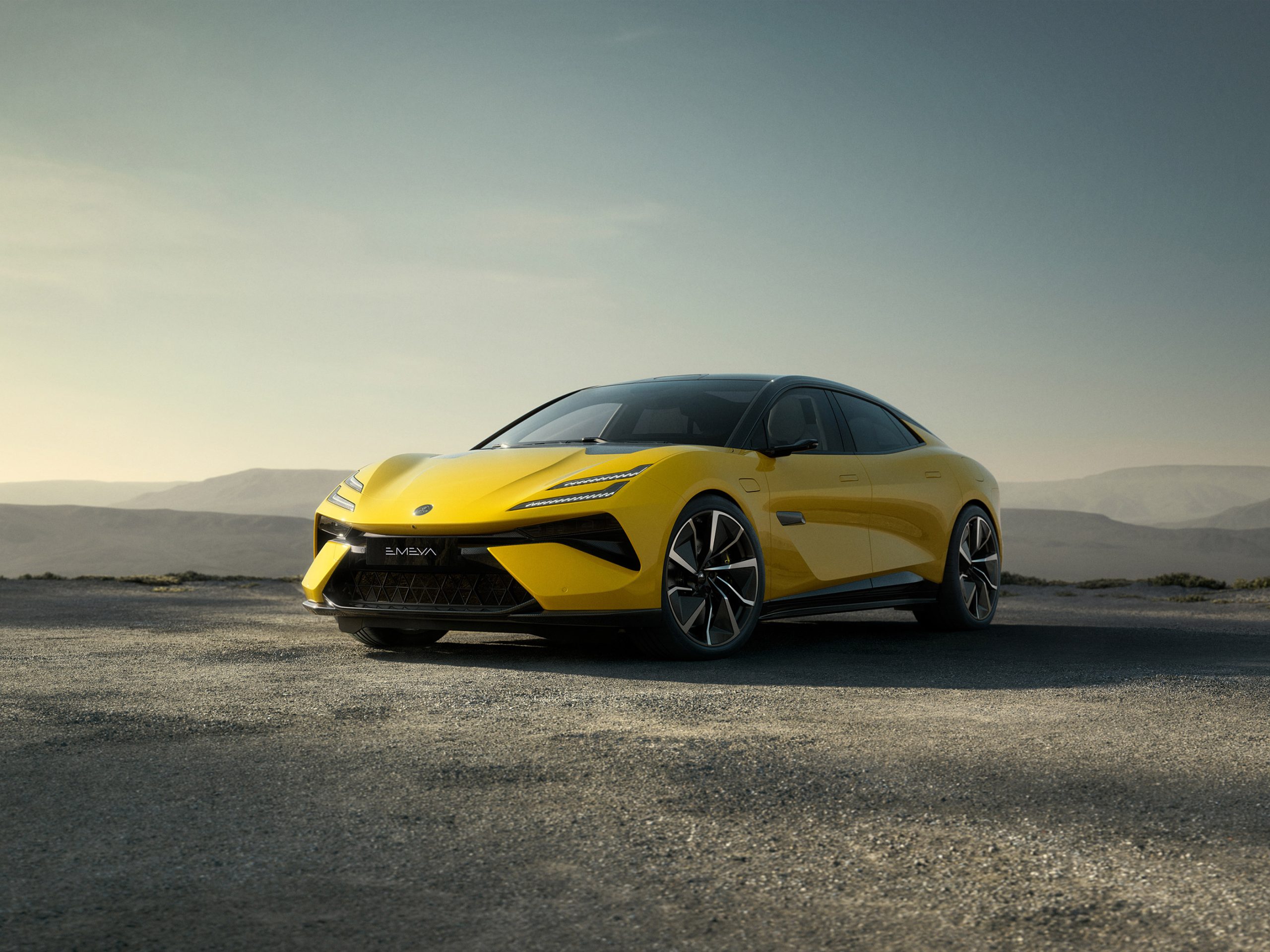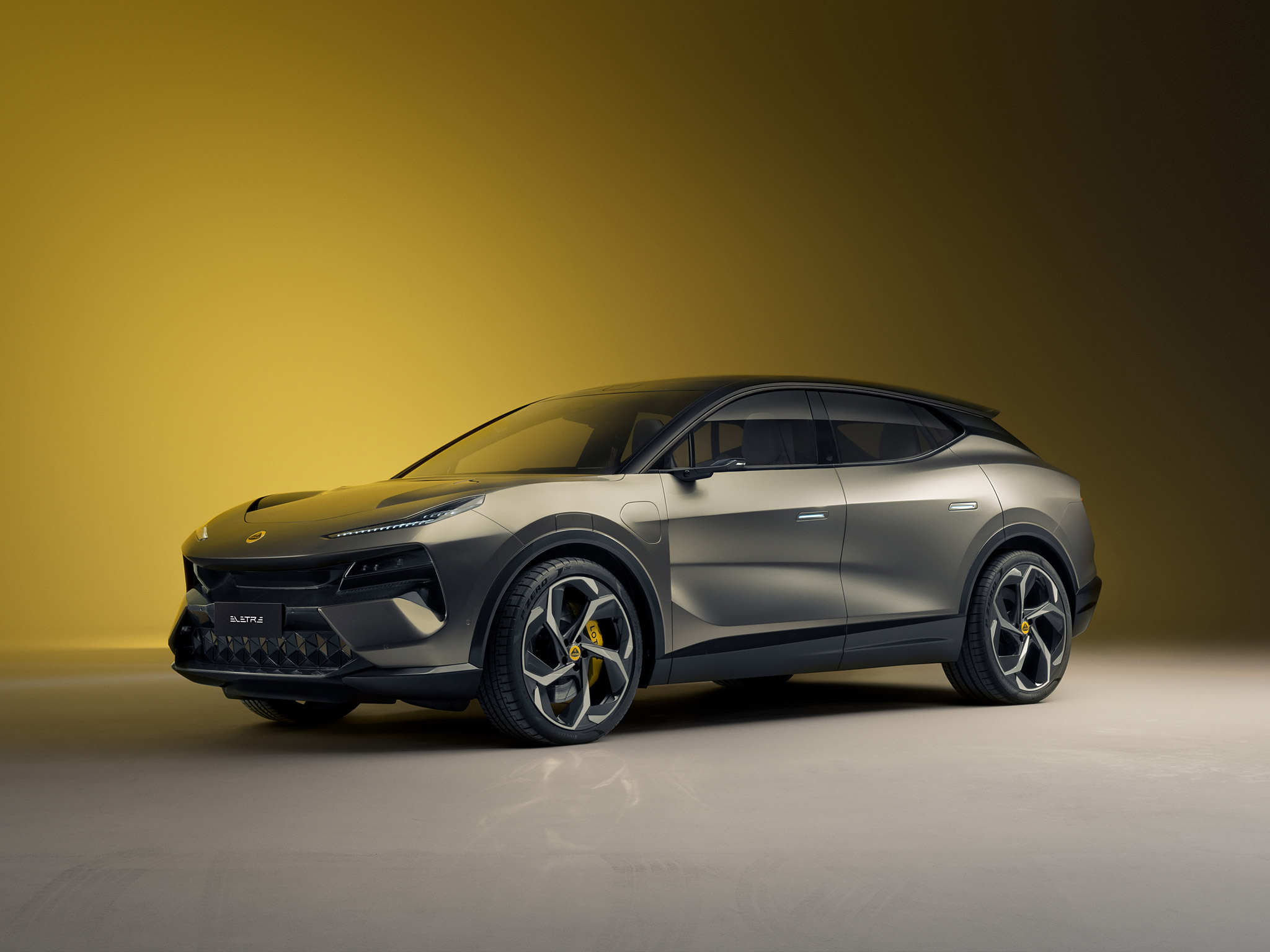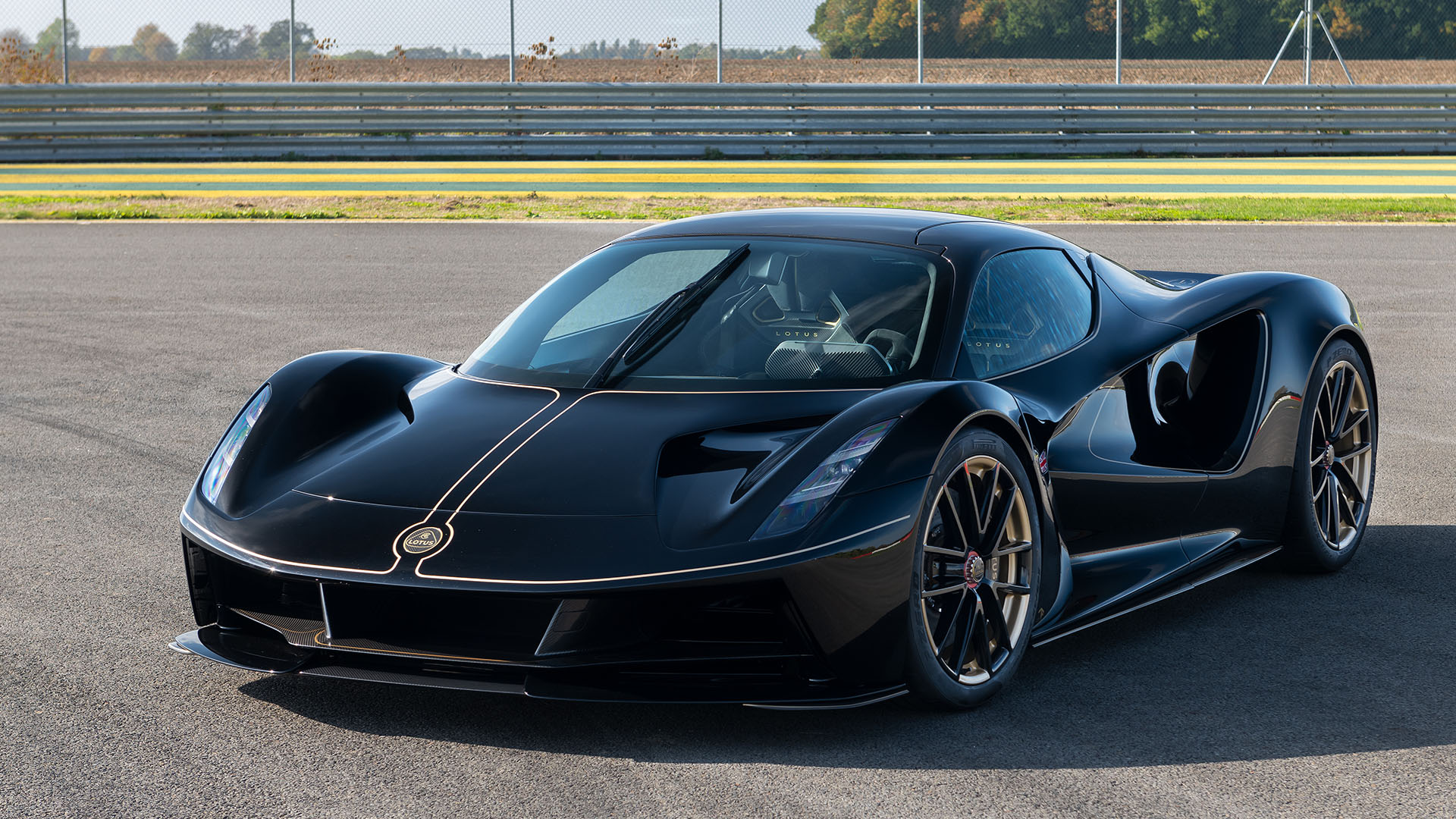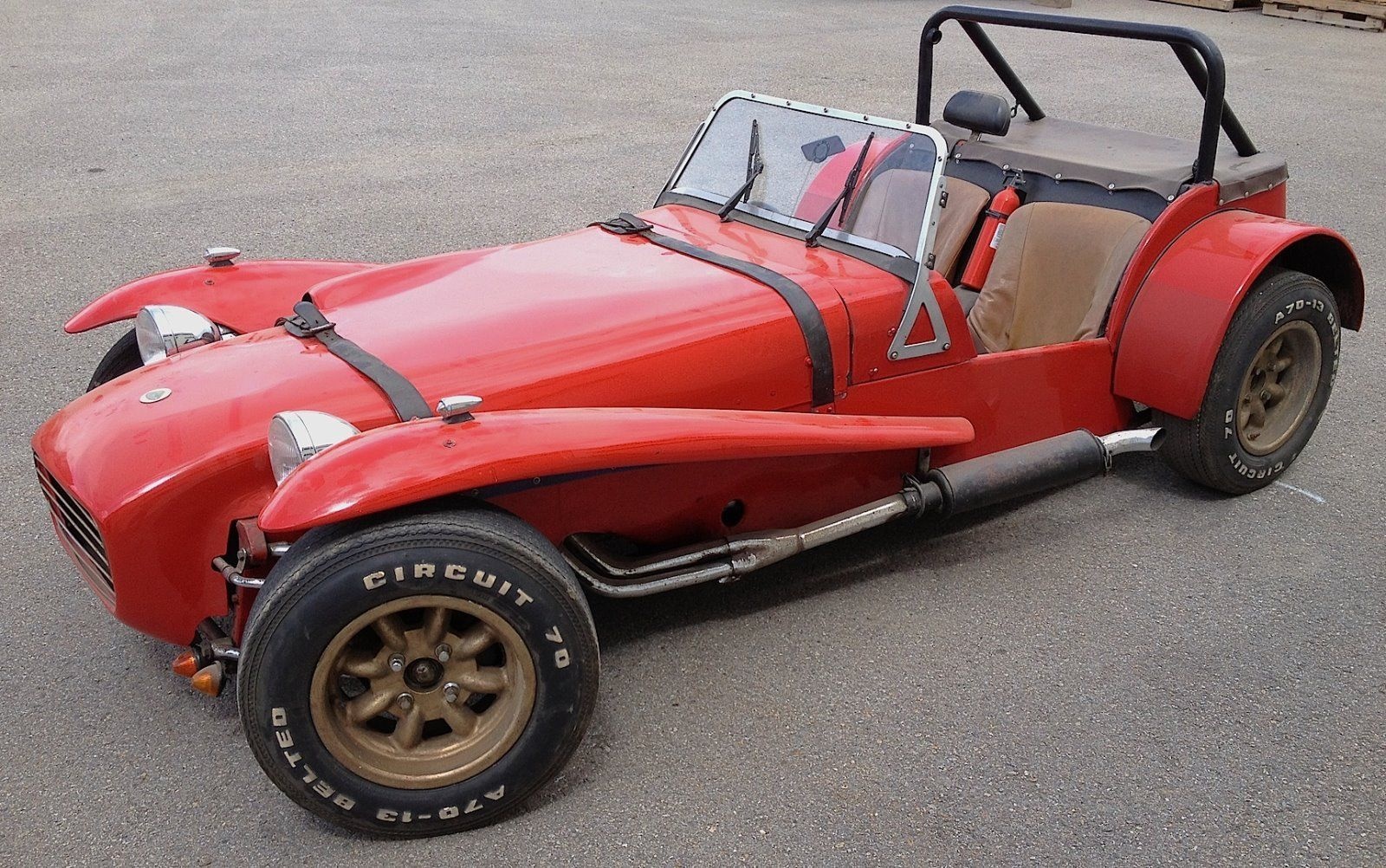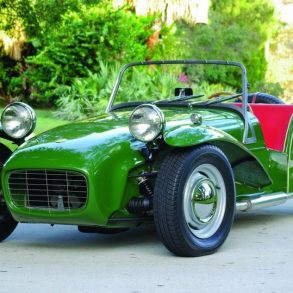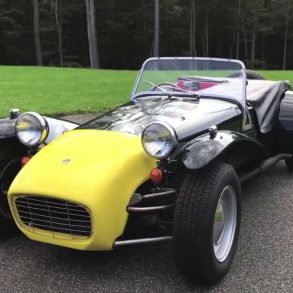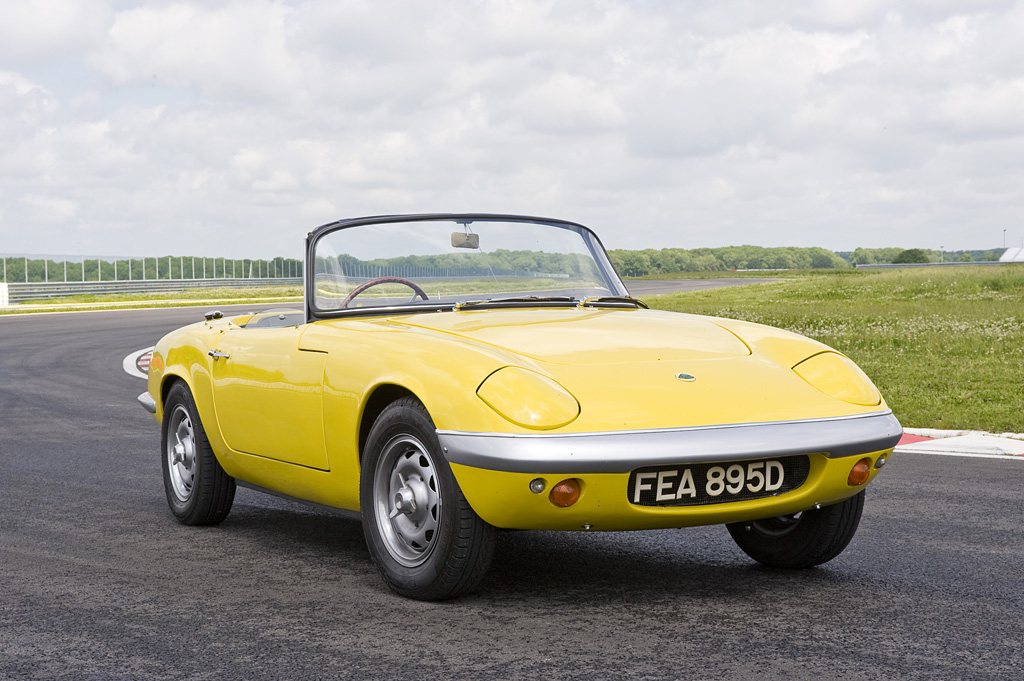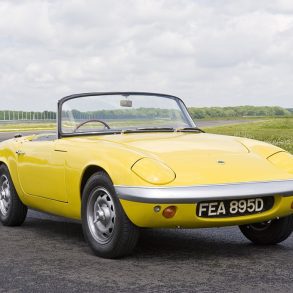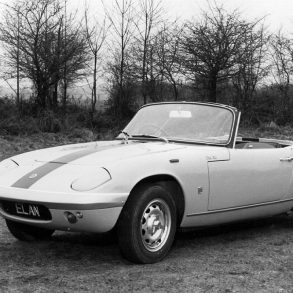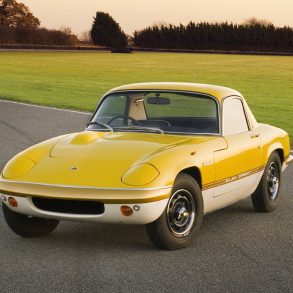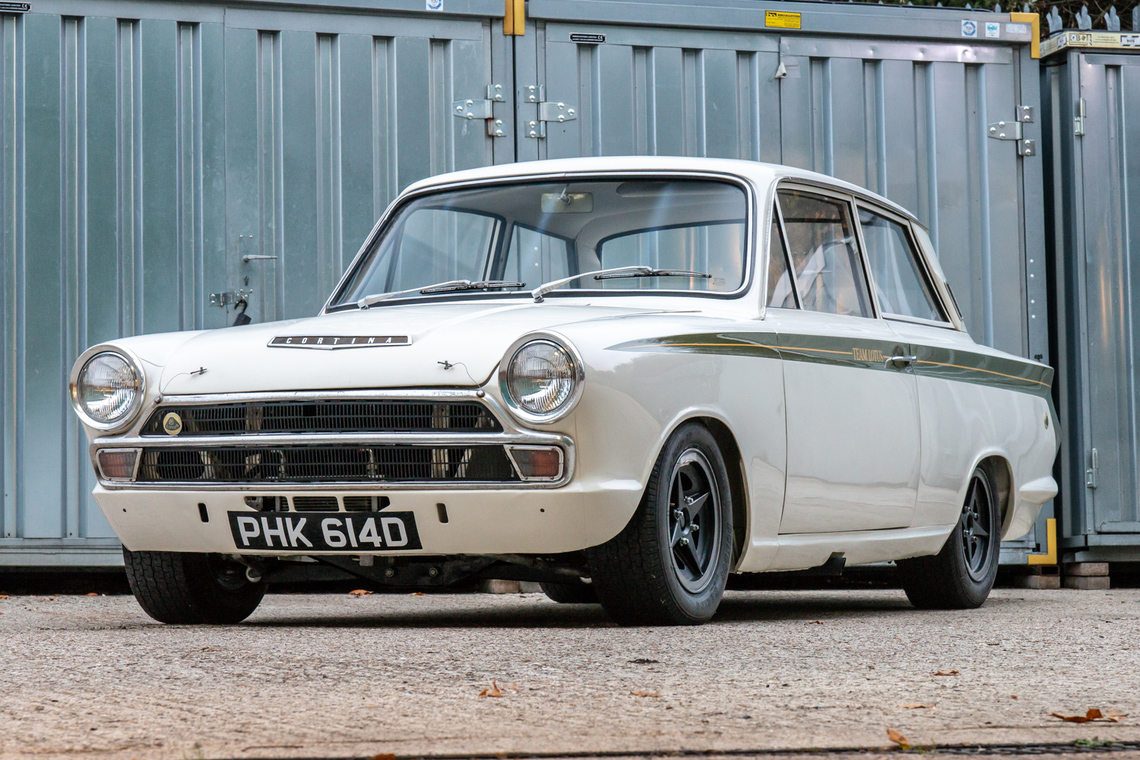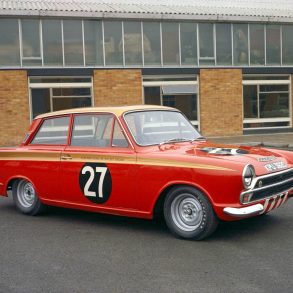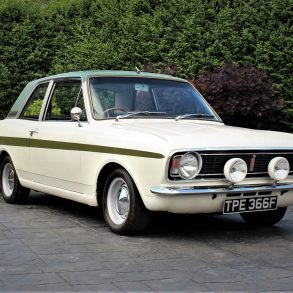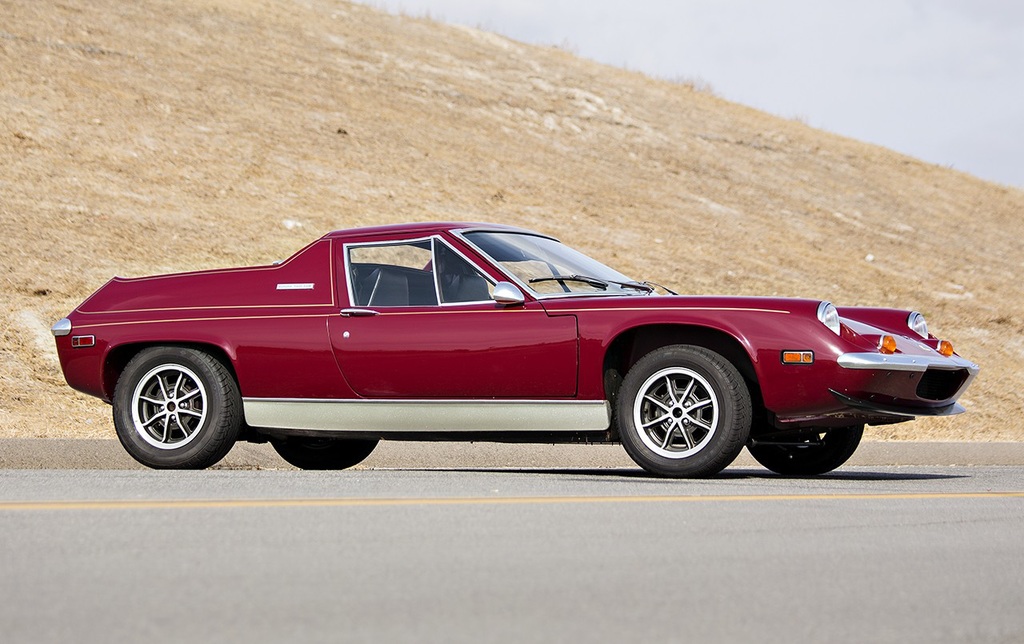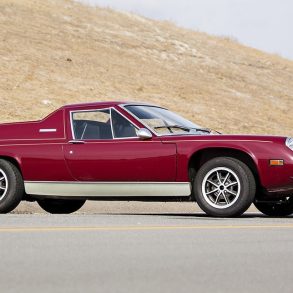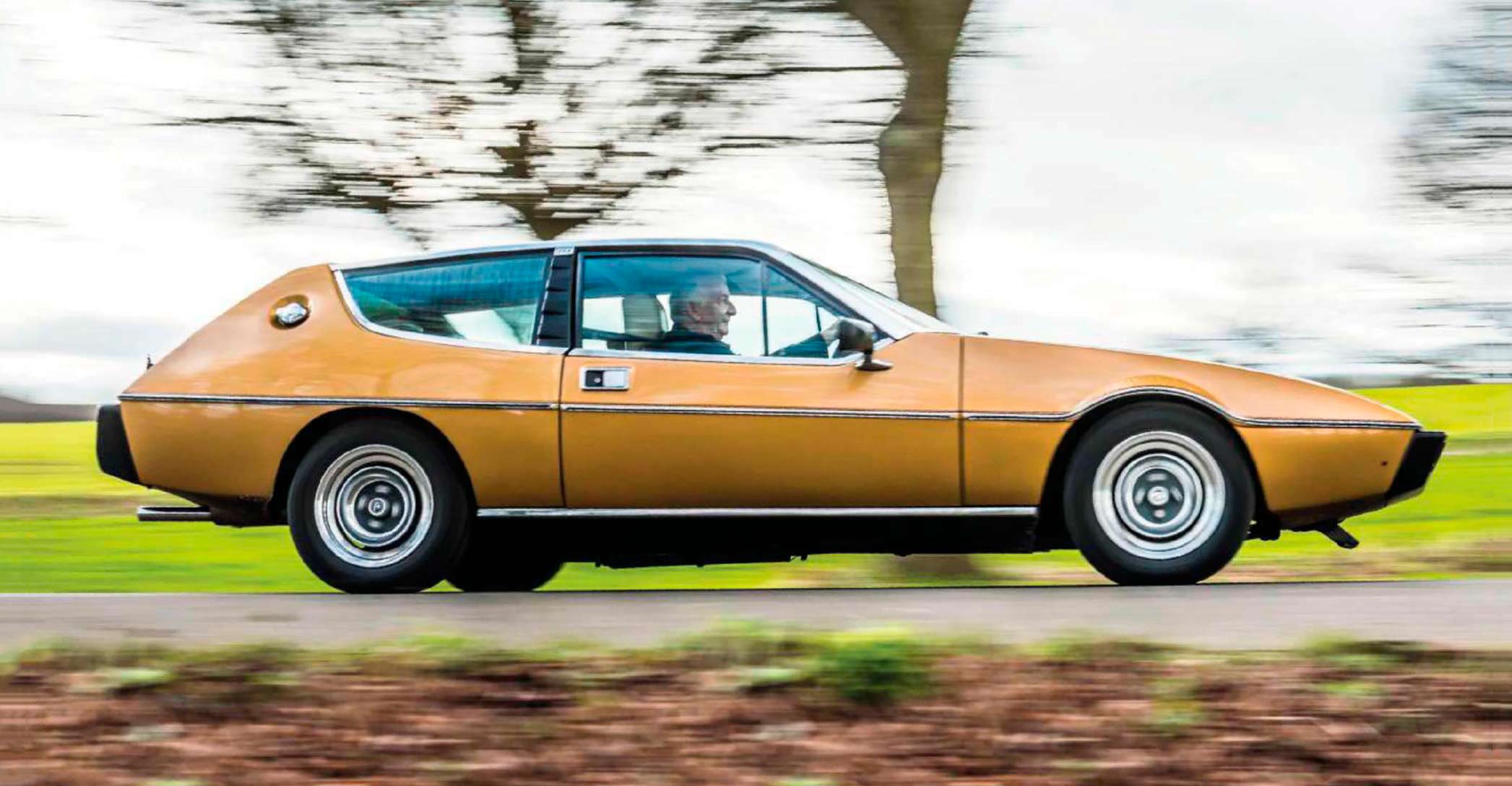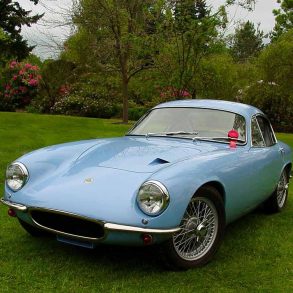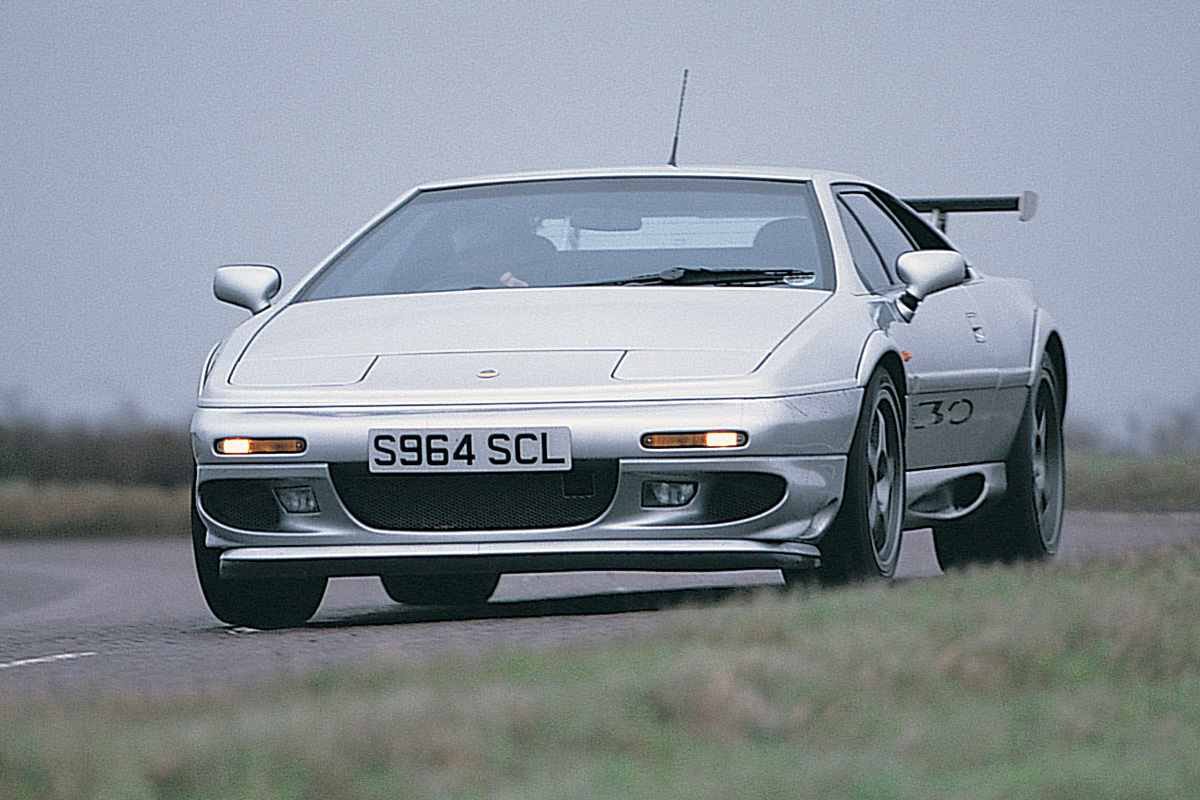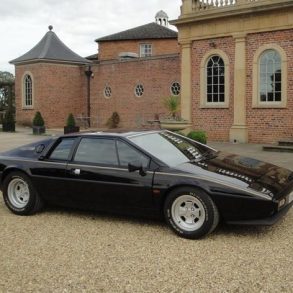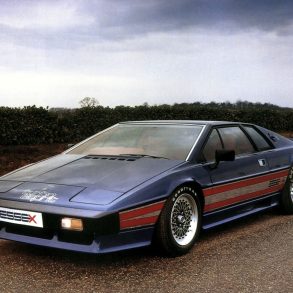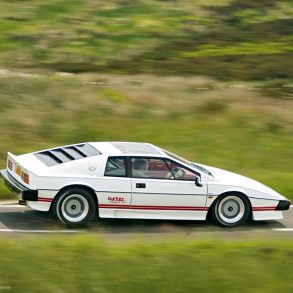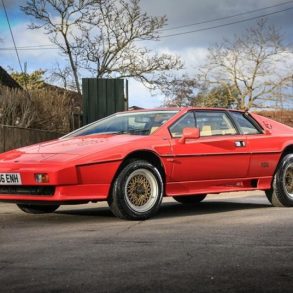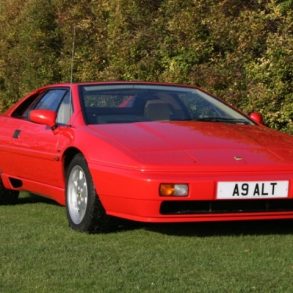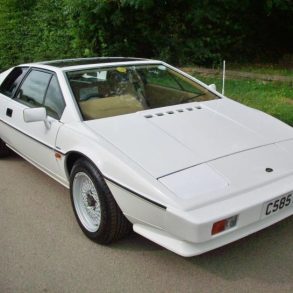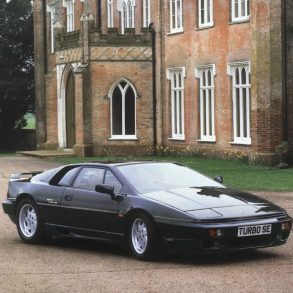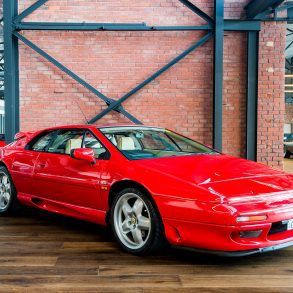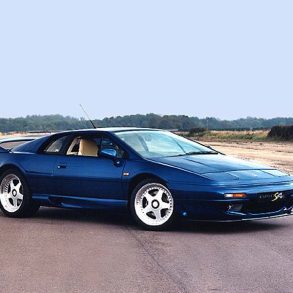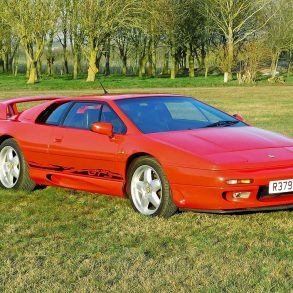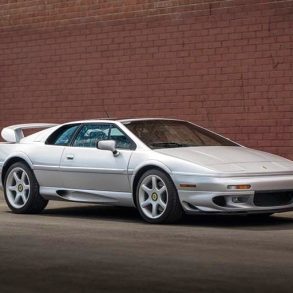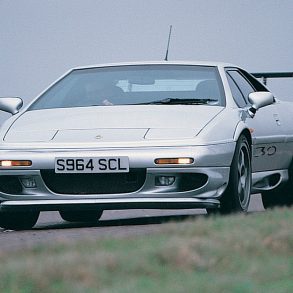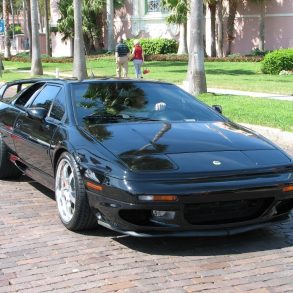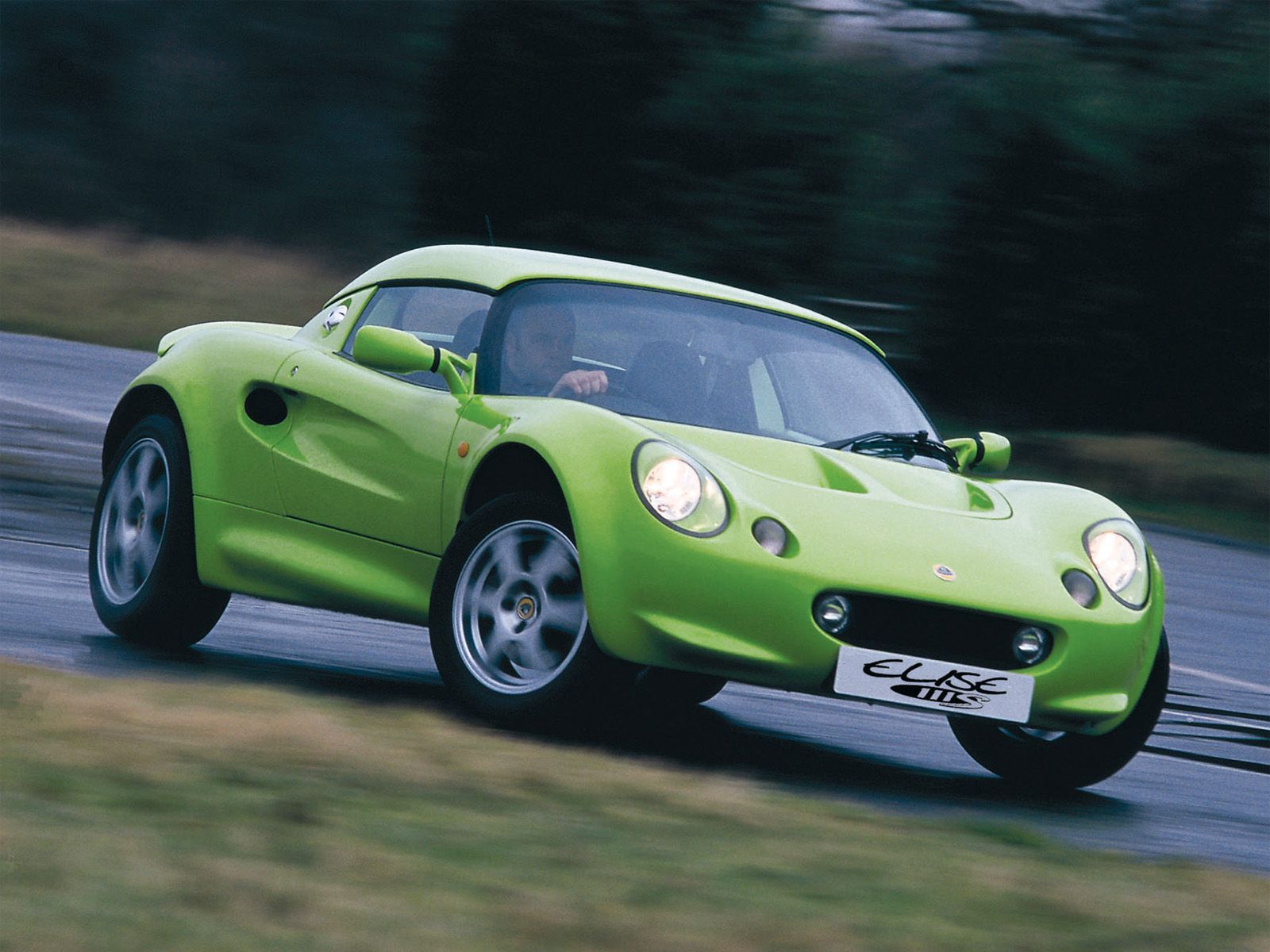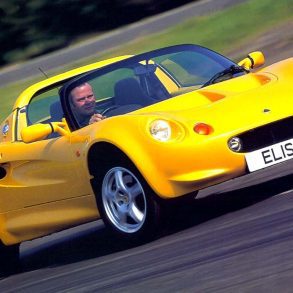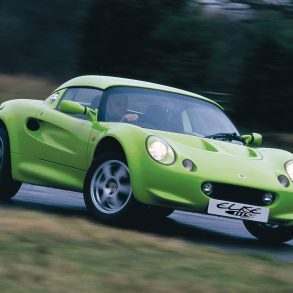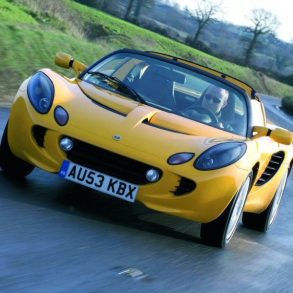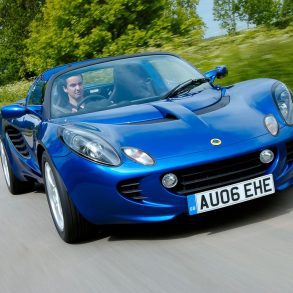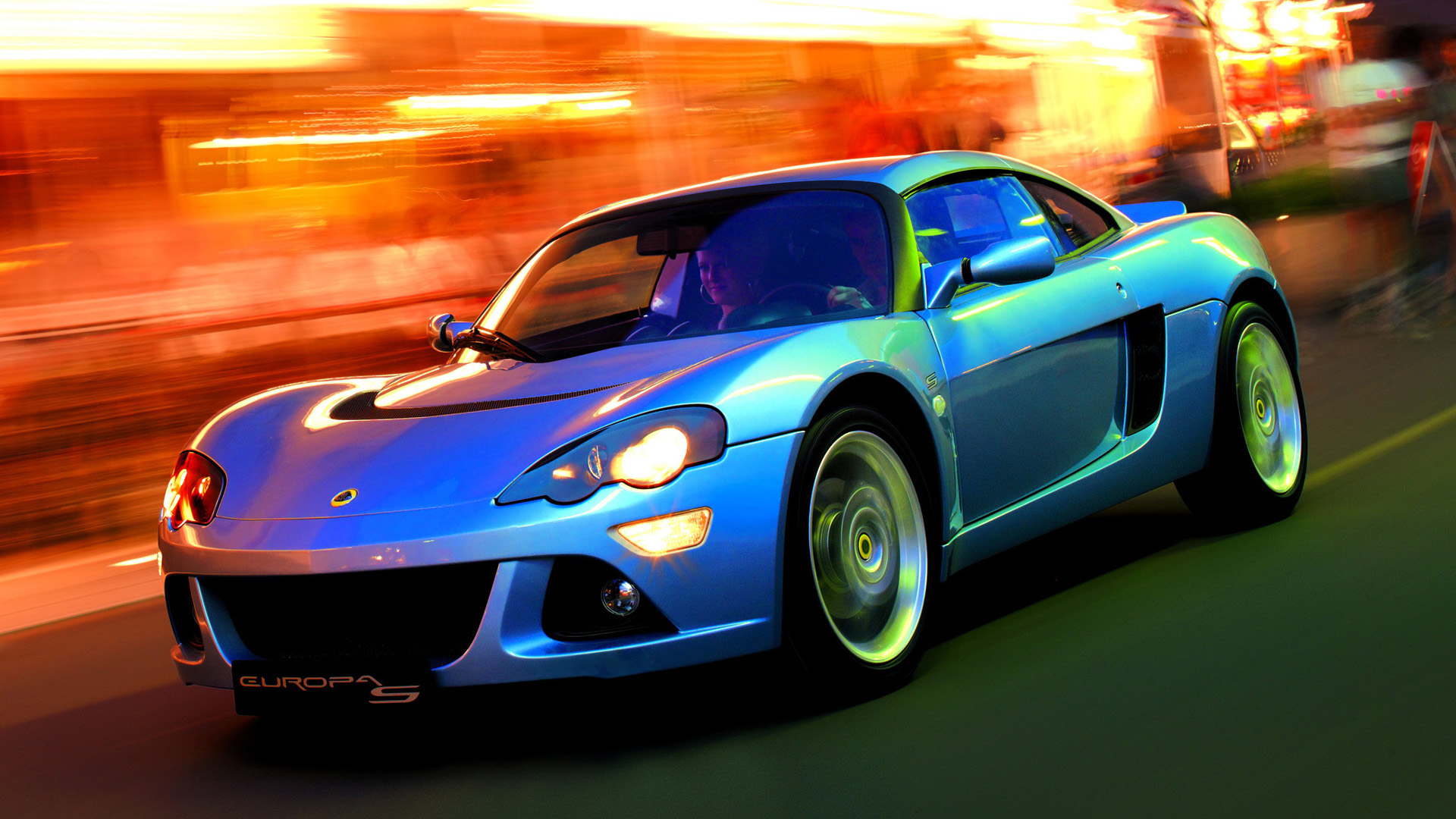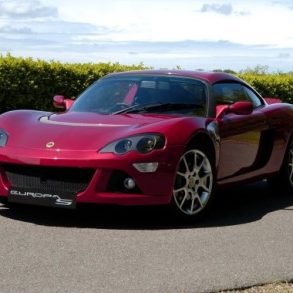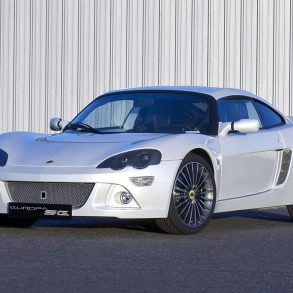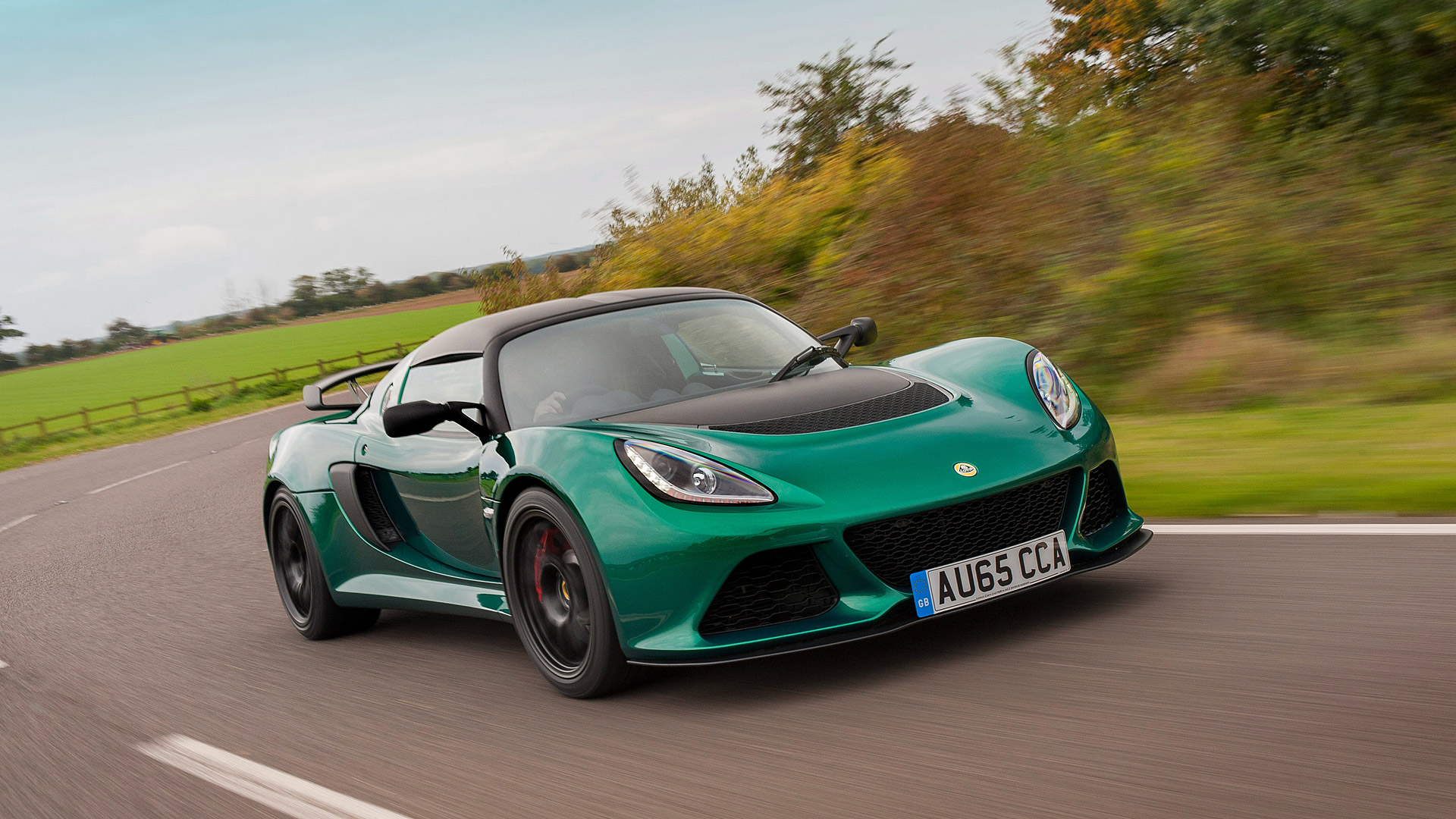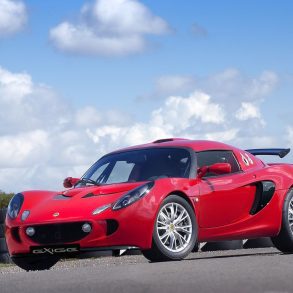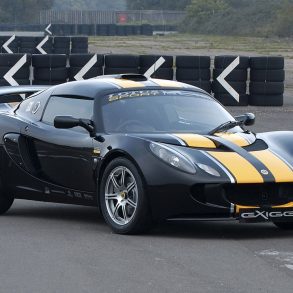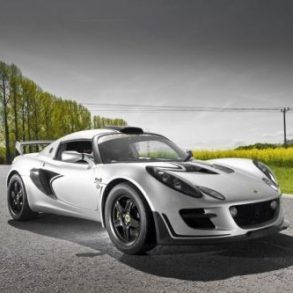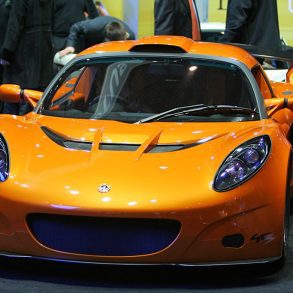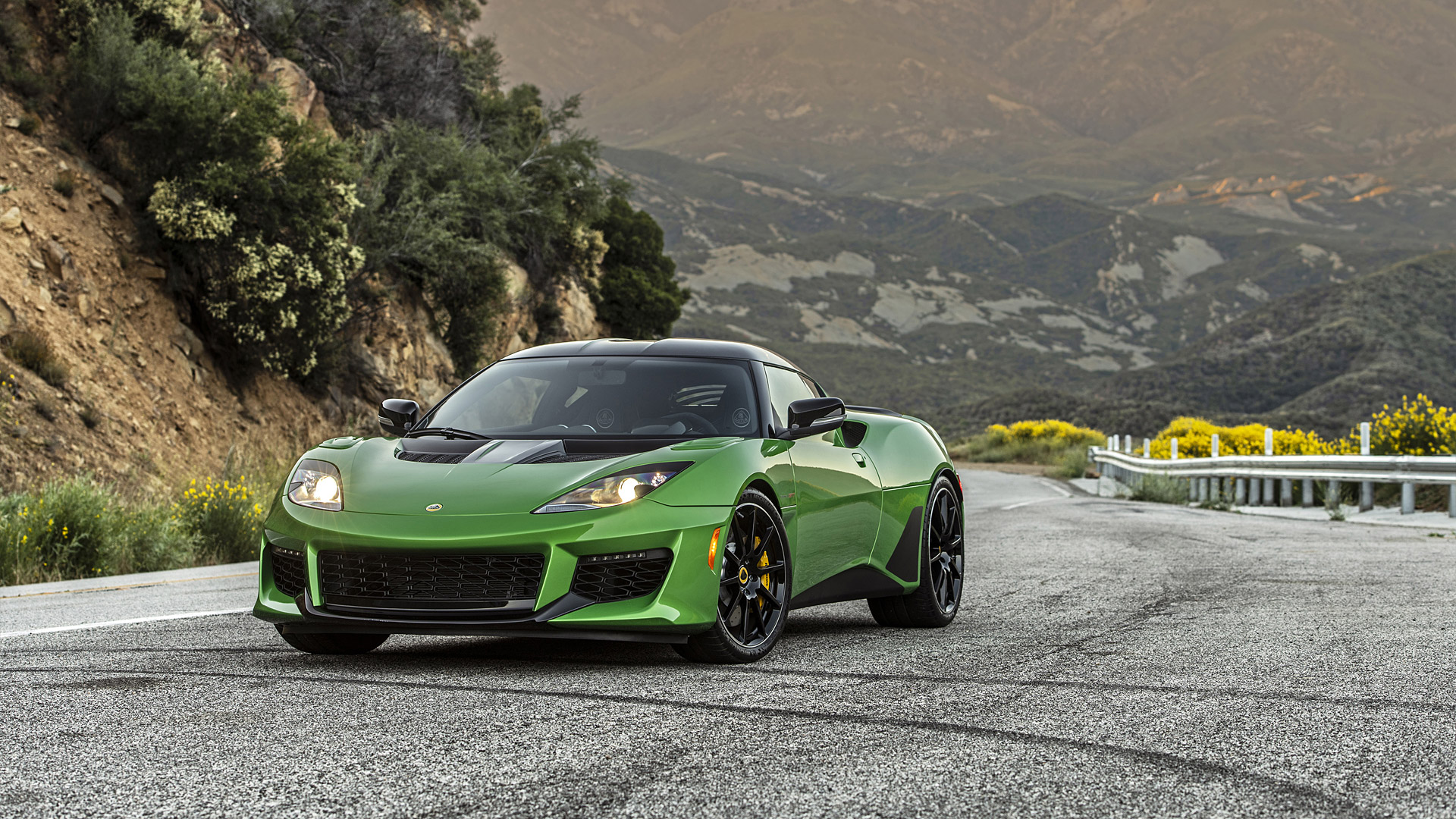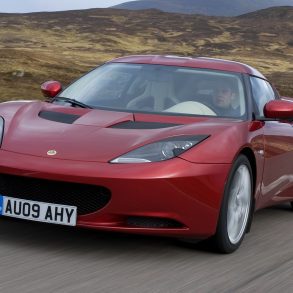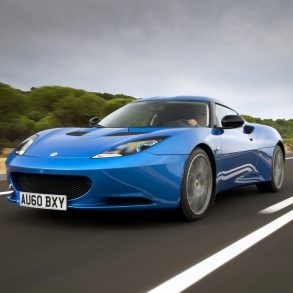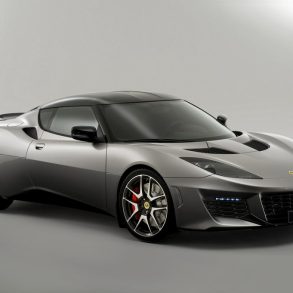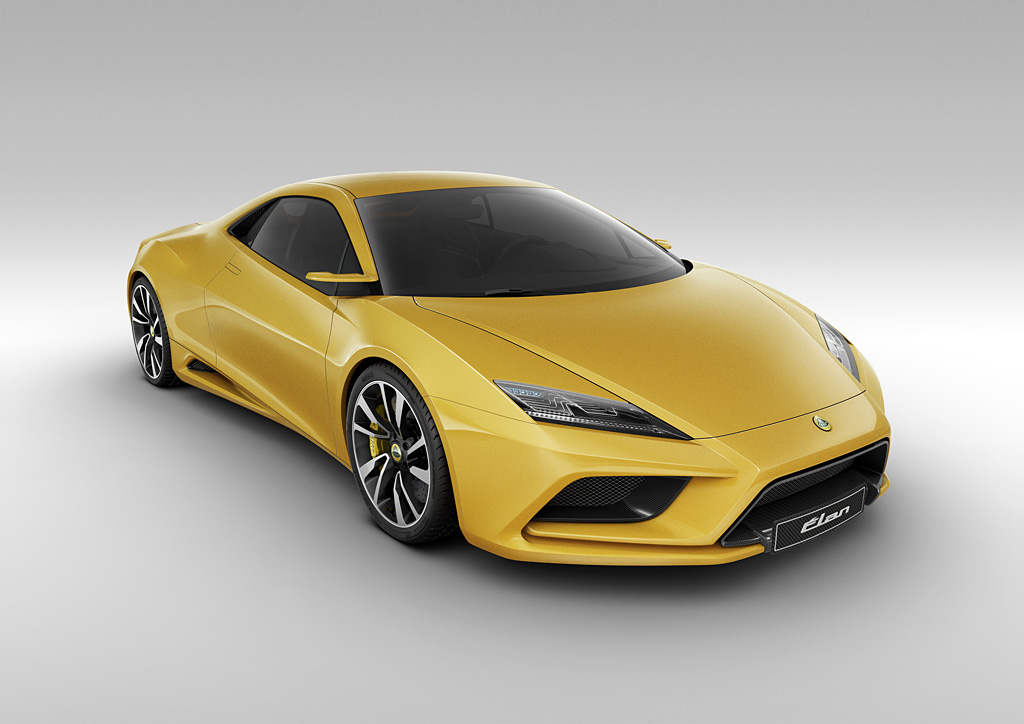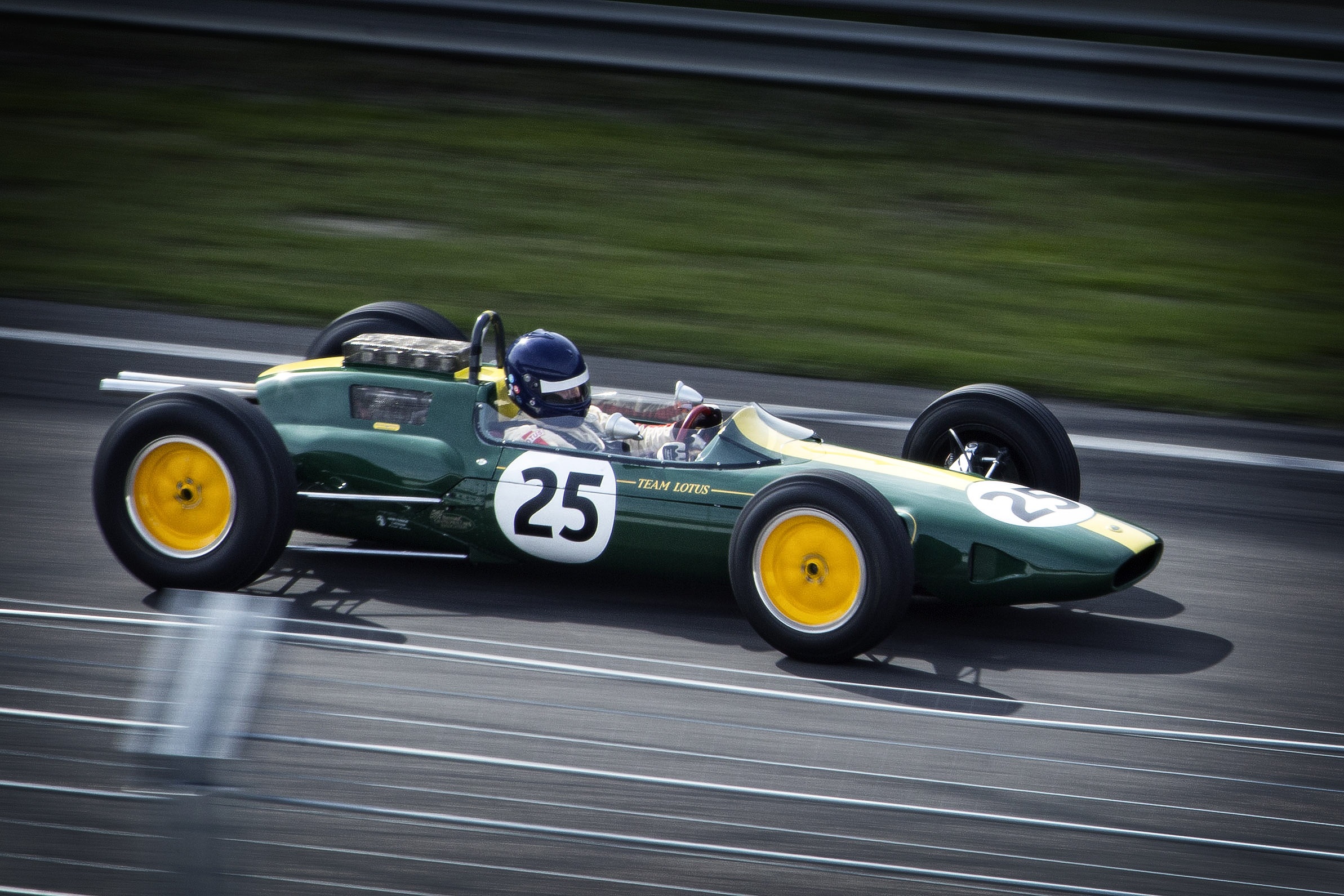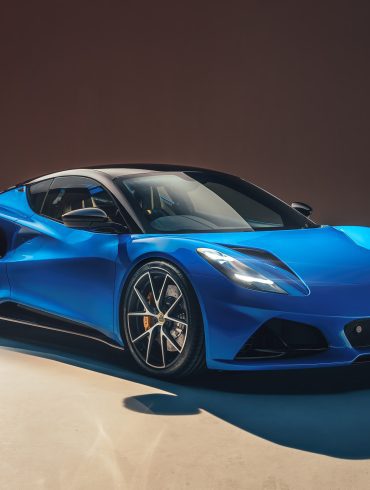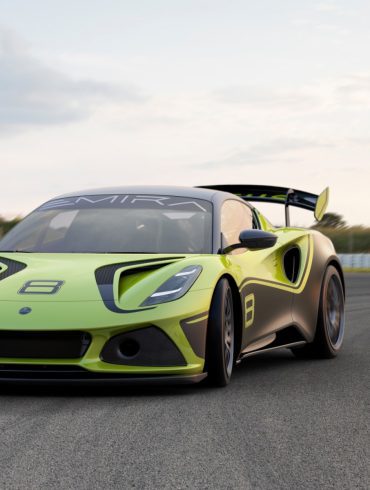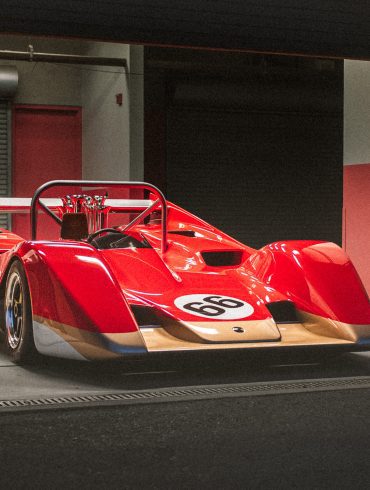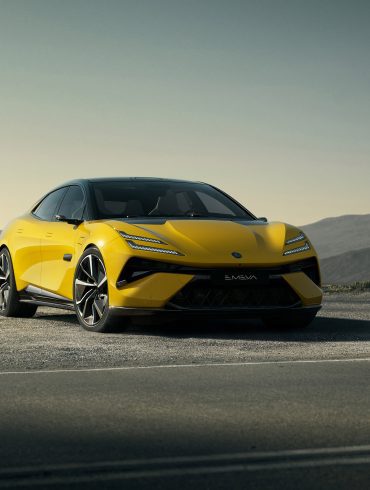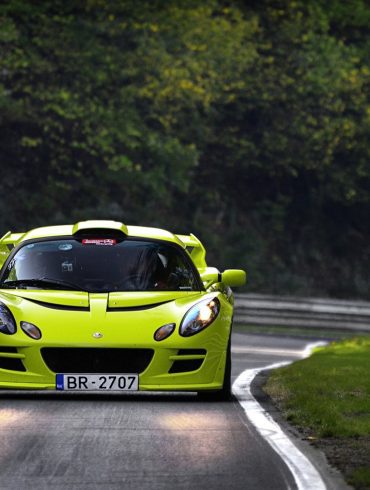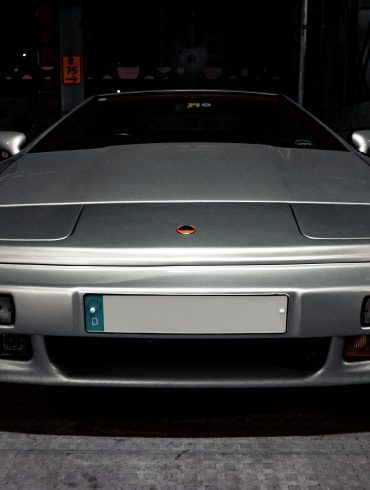Lotus Models
Model Deep Dives / Current Models / Legacy Models / Concept Cars / Race Cars
Lotus Model List. Every Lotus Ever Made.
Nobody Does Lightweight Greatness Like Lotus
Colin Chapman was a canny Brit whose credo was that simplicity, lightness, and streamlining wins the race. After a modest start in the late 1940s souping-up tiny Austin Sevens, he formed Lotus Cars in 1952 and won fame with aluminum-bodied sports-racers that proved giant-killers despite small engines and somewhat fragile natures. Lotus soon expanded into road cars with the stark, speedy Seven roadster, followed in 1959 by the elegant Elite coupe, the world’s first production car with fully unitized fiberglass construction. But the Elan would showcase Chapman’s philosophy that lighter is better.
In 1962, Chapman changed the shape of racing with rear-engine Formula 1 and Indianapolis cars. They made Lotus the decade’s dominant power in international open-wheel competition. That same year brought an equally revolutionary roadgoing Lotus, the Elan. Like the Elite, it was a petite fiberglass-bodied two-seater with a front four-cylinder engine, all-disc brakes, rack-and-pinion steering, and all-coil independent suspension with rear MacPherson struts. Also per Lotus tradition, the Elan was sold in both assembled and kit form (the latter avoiding high taxes in Britain). The carmaker continues to be a small volume manufacturer with a current lineup made up of only 3 models.
Current Models
Lotus Emeya
Lotus Emira
Lotus Evija
Lotus Eletre
Legacy Models
Lotus Seven (1957-1973)
Lotus Elan (1962–1975)
Lotus Elan M100 (1989–1995)
Lotus Cortina (1963 - 1966)
Lotus Europa (1966 - 1975)
Lotus Elite Type 14 (1957 - 1963)
Lotus Elite Type 75 (1974 - 1982)
Lotus Éclat (1975 -1982)
Lotus Excel (1982-1992)
Lotus Esprit (1976-2004)
Lotus Elise (1996–2021)
Lotus Europa S (2006-2010)
Lotus Exige (2000-2021)
Lotus Evora (2010-2021)
Lotus Emeya
The Lotus Emiya (pronounced "eh-MEE-ya") is poised to shake up the electric sports car world. Building on the design language established by the Evija hypercar, the Emiya promises to infuse the brand's legendary agility and driver-focused philosophy into a sleek EV package. Developed in partnership with Geely and set to be built in China, the Emiya will sit on a dedicated sports car platform. Power output is predicted to range between 470-880 horsepower and it will likely feature all-wheel drive. The Emiya represents a massive leap for Lotus as it transitions to a fully-electric future. It's a chance to prove EVs can be as thrilling as their gas-powered ancestors, and to redefine the sports car experience for the 21st century.
Lotus Emeya Variants
Lotus Emeya (2025 - Present)
Lotus Emeya S (2025 - Present)
Lotus Emeya R (2025 - Present)
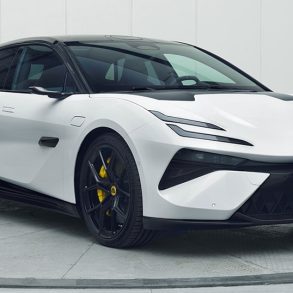
Lotus Emeya (Base)
2025 - Present
The entry-level Emiya, likely focusing on a balance between performance and range, offering a taste of the Emiya experience at a more accessible price point.
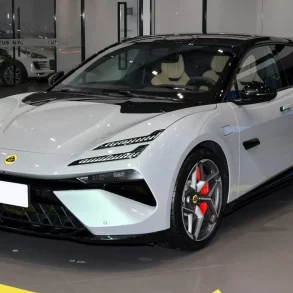
Lotus Emeya S
2025 - Present
The "sweet spot," a higher-spec Emiya with greater power, sharper handling, and upgraded components for enthusiasts demanding more from their EV sports car.
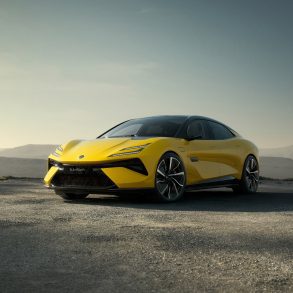
Lotus Emeya R
2025 - Present
The range-topper, an even more track-focused Emiya, boasting extreme power, lightweight construction, and possibly motorsport-inspired aerodynamics.
Lotus Eletre
The Lotus Eletre marks a radical new chapter for the brand. As their first-ever SUV and a fully electric one at that, it challenges expectations of what a Lotus vehicle can be. The Eletre's sculpted design language takes cues from the Evija hypercar, with sharp angles, dramatic vents, and a sculpted body that emphasizes its low, wide stance. Active aerodynamics, including deployable elements, are a key part of its focus on maximizing performance and range. With power output exceeding 600 horsepower, the Eletre aims to be one of the world's fastest production SUVs. A focus on intelligent all-wheel drive and advanced torque vectoring will be crucial in delivering signature Lotus agility in this heavier package. The Eletre represents Lotus taking a calculated risk, betting on the growing luxury SUV market to secure its future. It's a chance to attract a new customer base while proving that a Lotus SUV can still be a Lotus.
Lotus Eletre Variants
Lotus Eletre (2024 - Present)
Lotus Eletre S (2024 - Present)
Lotus Eletre R (2024 - Present)
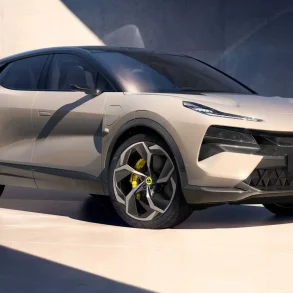
Lotus Eletre (Base)
2024 - Present
The "entry-level" Eletre would still likely boast impressive power and range, focusing on a comfortable luxury experience mixed with engaging Lotus driving dynamics.
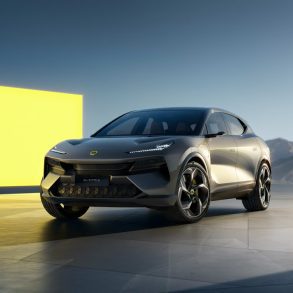
Lotus Eletre S
2024 - Present
Expect a step up in performance with this model, featuring more potent power figures, sharper handling with sportier suspension tuning, and visual cues to emphasize its performance edge.
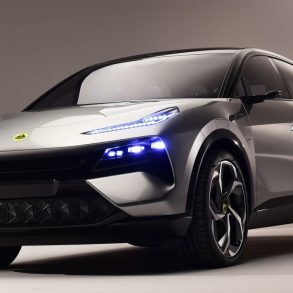
Lotus Eletre R
2024 - Present
The range-topper, an even more track-focused Eletre, boasting extreme power, lightweight construction, and possibly motorsport-inspired aerodynamics.
Lotus Evija
The Lotus Evija, pronounced "E-vi-ya," marks a significant milestone not only for Lotus Cars but for the automotive world at large. As Lotus's first foray into the electric hypercar market, the Evija represents the dawn of a new era, blending the brand's storied heritage of lightweight sports cars with cutting-edge electric vehicle technology. Unveiled in 2019, the Evija is a bold statement of intent, showcasing Lotus's ambition to lead in the realm of high-performance electric vehicles. This blog post explores the groundbreaking design, performance, and technological innovations that make the Lotus Evija a pioneering hypercar.
Lotus Evija Variants
Lotus Evija (2023 - Present)
Lotus Evija Fittipaldi (2023)
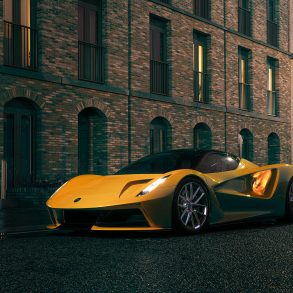
Lotus Evija
2023 - Present
The car features two electric motors to achieve its power output, and the battery is placed in the middle of the car where a typical internal combustion mid-engine car would have its beating heart, meaning this helps with weight distribution.
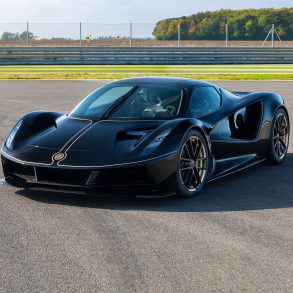
Lotus Evija Fittipaldi
2023
A tribute to legendary driver Emerson Fittipaldi and his 1972 F1 Championship victory. Limited to just eight examples, it adds unique touches to the Evija. This includes a striking black and gold livery inspired by Fittipaldi's iconic John Player Special Lotus 72 race car.
Lotus Seven
The Lotus Seven was a small, simple, lightweight two-seater open-top sports car produced by the British manufacturer Lotus Cars (initially called Lotus Engineering) between 1957 and 1972. It was designed by Lotus founder Colin Chapman and has been considered the embodiment of the Lotus philosophy of performance through low weight and simplicity. The original model was highly successful with more than 2,500 cars sold, due to its attraction as a road legal car that could be used for clubman racing. After Lotus ended production of the Seven, Caterham bought the rights and today Caterham make both kits and fully assembled cars based on the original design. The Lotus Seven design has spawned a host of imitations on the kit car market, generally called Sevens or sevenesque roadsters.
Lotus Seven Variants
Lotus Seven (1957-1960)
Lotus Seven S2 (1961-1967)
Lotus Super Seven S2 (1961-1967)
Lotus Seven S3 (1968-1969)
Lotus Seven S4 (1970-1973)
Lotus Seven
1957 – 1960
Launched in 1957 the 7 was a simple and lightweight sports car that sold as a kit for the British market. It made no concessions to passenger comfort, instead focusing on performance and low cost.
Lotus Seven S2
1961 - 1967
The Lotus Seven S2 followed in 1960. There were a number of differences between it and the Series 1, including Less tubing in the spaceframe, aluminium nose replaced with fibreglass. Other tweaks also.
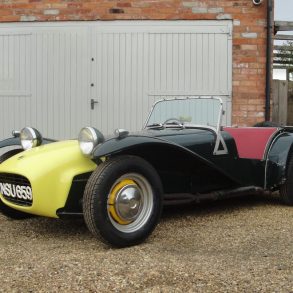
Super Seven S2
1961 - 1967
The Super Seven initially used the larger Cosworth modified 1,340cc Ford Classic engine and later examples were fitted with 1,498cc or 1,599cc engines. This is where things got really fun.
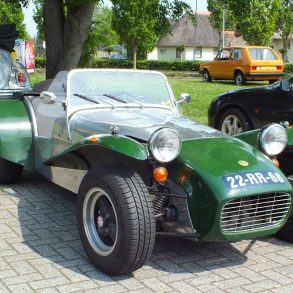
Lotus Seven S3
1968 - 1969
The Seven S3 was released in 1968. The nose-cone and wheel arches were originally aluminium parts, but these were replaced in the later S2 and S3 models with painted or self-coloured fibreglass.
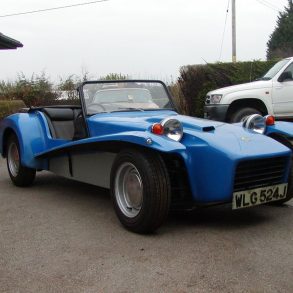
Lotus Seven S4
1970 – 1973
In 1970, Lotus radically changed the shape of the car to create the slightly more conventional sized Series 4 (S4), with a squarer fibreglass shell replacing most of the aluminium bodywork.
Lotus Elan
In October 1962, the Lotus Elan sports car, also known as the Type 26, was launched at the Earls Court Motor Show in London as the Elan 1500. Colin Chapman visualised the Elan as being a replacement for the Lotus Seven and the Elite, built as a glass fibre monocoque construction. By the time it reached the prototype stage, it was agreed that it would incorporate a steel backbone chassis construction, which meant that the Elan would be not only light and rigid, but also much easier to manufacture than its predecessor. The innovative folded-steel backbone chassis stiffened the shell while adding a minimum of extra weight. With light and tactile steering as well as soft, long-travel suspension the combination was that the Elan one of the best-handling cars ever, with a compliant ride too. It had all-disc brakes, rack-and-pinion steering, and all-coil independent suspension with rear MacPherson struts. For the engine, it used a new dual-overhead camshaft conversion of its new oversquare small ‘four’ and this Lotus 1558cc engine, developing 105 hp at 5,700 rpm. The Elan evolved over a dozen years, gaining a bit more power, a companion coupe, and nicer appointments, even a stretched “+2” coupe series.
Lotus Elan Variants
Lotus Elan (S1) (1962 - 1964)
Lotus Elan 1600 (S1) (1962 - 1964)
Lotus Elan S2 (1962 - 1964)
Lotus Elan S2 SE (1966)
Lotus Elan S3 (1966 - 1968)
Lotus Elan S2 SE (1966 - 1968)
Lotus Elan S4 (1968 - 1971)
Lotus Elan S4 SE (1968 - 1971)
Lotus Elan Sprint (1971 - 1973)
Lotus Elan +2 (1967 - 1969)
Lotus Elan +2S (1971 - 1974)
Lotus Elan M100 (1989 - 1995)
Lotus Elan 2 (S2) M100 (1996 - 1999)
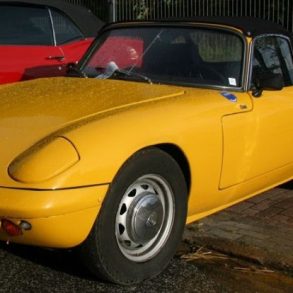
Lotus Elan 1500
1962 – 1964
The Elan was the first Lotus sports car to combine a steel chassis with a fibreglass body. 22 1500cc Elans were produced. After the S2 was released the Elan 1500 and 1600 models were typically referred to as the S1.
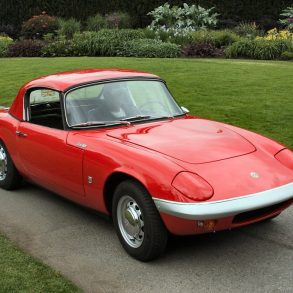
Lotus Elan 1600
1962 – 1964
After just 22 cars the engine was enlarged and the car was re-designated the Elan 1600. Under the hood is the “1600” version of the Lotus double overhead cam conversion for the English Ford 116-E. Optional hardtop was offered.
Lotus Elan S2
1962 – 1964
Most S1 faults were overcome when the Elan Series 2 was launched. The Series 2 were fitted with larger disc brakes and an uprated interior. The earliest S2 cars were hard to distinguish from S1 except for those interior changes.
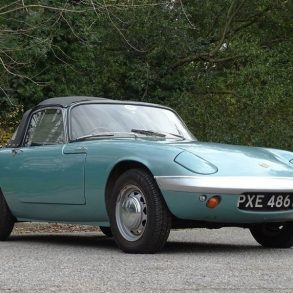
Lotus Elan S3
1966 – 1968
Both Types, 36 & 45, were offered initially in S3 form. Elans were originally built as Roadsters, but a FHC was offered from 1965 with the S3 model. The S3 interiors had electric windows and permanent window frames.
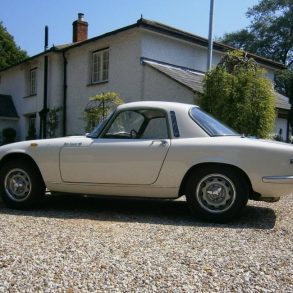
Lotus Elan S3 SE
1966 – 1968
The S3 continued to employ the rugged Ford-derived twin-cam motor, developing 105bhp (118bhp was available from the SE model) with twin Weber 40DCOE carburettors and a four-speed gearbox.
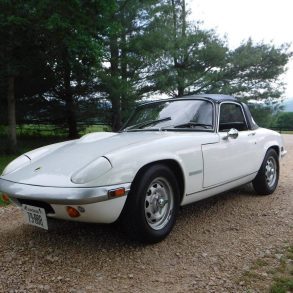
Lotus Elan S4
1966 – 1971
The S4 saw a number of improvements over the S3. Flush dashboard rocker switches, updated integrated rear lamp cluster with reversing lights, wider wheel arches and much more.
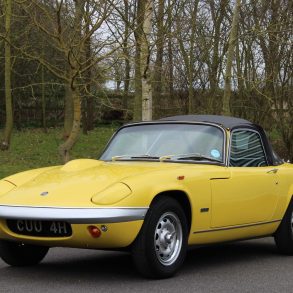
Lotus Elan S4 SE
1966 – 1971
“SE” additions included electric windows, updated rear lamp cluster, two speed wipers, enlarged flared wheel arches, negative earth electrics, dual circuit brakes and revised engine heads and Stromberg carburettors.
Lotus Elan Sprint
1971 - 1973
In 1971 Lotus released the Sprint as the ultimate Elan. It used the big-valve cylinder head in conjunction with striking paint schemes that celebrated the success of Lotus Players F1.
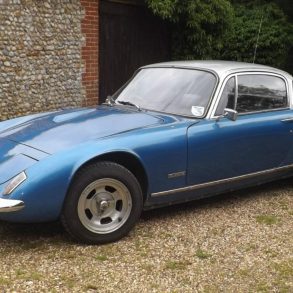
Lotus Elan +2
1967 – 1969
An Elan +2 was introduced in 1967 with a longer wheelbase and wider track, and two small rear seats, suitable for children. It was larger and considerably more luxurious, marketed to the established family with children.
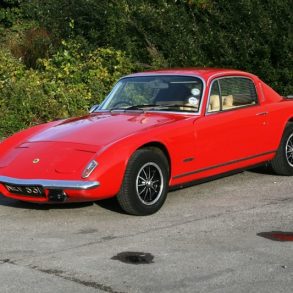
Lotus Elan +2S
1971 – 1974
In 1971 +2S was upgraded to include the Big Valve engine, and then named the +2S 130. Later models of the +2S 130 were provided with a 5-speed Austin Maxi based gearbox, which greatly improved its high speed cruising.
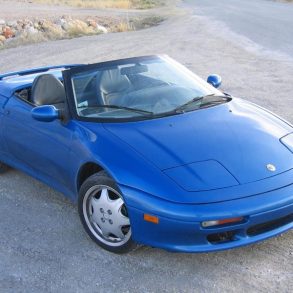
Lotus Elan M100
1989 – 1995
The Lotus M100 Elan was launched in August 1989, reviving the Elan nameplate after 14 years. A two-seater convertible sports car, designed in-house by Lotus, it featured an engine and manual transmission.
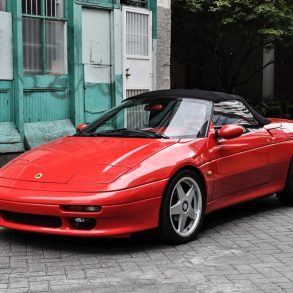
Lotus Elan Series 2 (S2) M100 Elan
1996 – 1999
The Lotus Elan Series 2 (S2) M100 represents a refined iteration of one of the most celebrated roadsters in Lotus's storied history. Building upon the foundation laid by the original M100 Elan, the Series 2 enhancements were aimed at elevating the driving experience and exclusivity of this front-wheel-drive sports car.
Lotus Cortina
Produced in the U.K. between 1963 and 1970, the Ford Lotus Cortina or as most people knew it, the Lotus Cortina came about when Ford and Lotus decided to combine efforts to create a homologation special built to race. They wanted a small, high-powered sports saloon that could compete on track. Ford developed a new inline four, twin-cam engine with 1577 cc displacement and 110hp, four-speed transmission, and suspension tuning from Lotus. With its light, stiff monocoque shell, MacPherson strut front suspension and highly tunable oversquare engine it was an instant success. The Ford-Lotus Cortina was dominant in competition events, the peak being Jim Clark winning the British Saloon Car Championship in 1964. The production Lotus-Ford Cortina was sold through Ford dealers as ‘The Consul Cortina Sports Special’. Approximately 7,400 cars were made over its production life.
Lotus Cortina Variants
Lotus Cortina Mk1 (1963 - 1966)
Lotus Cortina Mk2 (1963 - 1966)
Lotus Cortina Mk1
1963 - 1966
The Lotus Cortina was an exhilarating drive, with torquey, lively acceleration, firm handling, adequate brakes, excellent visibility and, in Aeroflow form, good ventilation. A classic fun car.
Lotus Europa
1964 was the year Colin Chapman set about creating the birth of one of the lowest slung coupes ever made – the Lotus Europa. With Lotus 7 production waning, Colin Chapman was looking for a car to replace the now legendary 7. To replace the it a similarly simple car was needed that could be serviced at non-specialist garages and to be relatively cheap to buy. The Europa became the first truly roadable mid-priced, mid-engined, street car produced. It was marketed as a low-cost alternative to the front-engine Lotus Elan. A glass-fiber body draped over a steel backbone chassis with 4 wheel independent suspension. Unbelievable handling and roadholding they were often described by motorcar journalists as the nearest thing to a Formula car for the street.
Lotus Europa Variants
Lotus Europa S1 (1966 - 1968)
Lotus Europa S2 (1969 - 1970)
Lotus Europa Twin Cam (1971 - 1975)
Lotus Europa John Plater Special (1972)
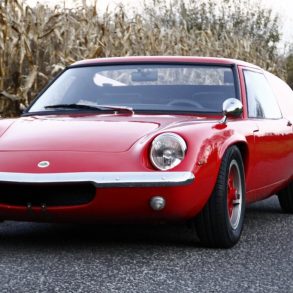
Lotus Europa S1
1966-1968
Launched in December 1966. The S1 had a modified Renault 16 1470 cc inline-four engine and a 4-speed gearbox. Minimalist construction was used throughout the first-series Europa. The Series 1 is known as the better drivers car due to its solid construction. Our favorite pick.
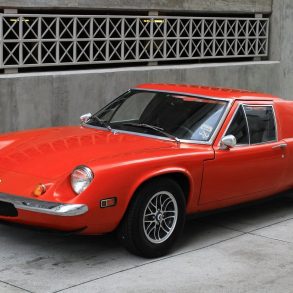
Lotus Europa S2
1969-1970
The Series 2 brought changes to the body, interior, and engine. The body was no longer bonded to the frame and was now conventionally attached with bolts. This made body repairs easier but lost some of the stiffness of the first series. It got a new, more comfortable interior and new dash.
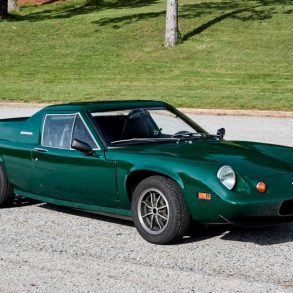
Europa Twin Cam
1971-1975
The third-series Europa featured a redesigned body shell helping improve rearward visibility. The Renault engine was replaced by the more powerful 1558cc Lotus-Ford twin-cam motor. Originally known as the Europa Twin-Cam, the Series 3 was renamed the Europa Special.
Lotus Elite, Éclat & Excel
Lotus Elite Variants
Lotus Elite Type 14 (1957 - 1963)
Lotus Elite Type 75 (1974 - 1982)
Lotus Elite Type 83 (1980)
Lotus Éclat Variants
Lotus Éclat S1 (1975 -1982)
Lotus Éclat Riviera (1980 - 1982)
Lotus Excel Variants
Lotus Excel (1982-1992)
Lotus Elite Type 14
1957-1963
The Lotus Elite was introduced in 1957 and was a truly driver-oriented offering. The world’s first fiberglass monocoque production car, had a stressed-skin fiberglass unibody. Rare, fast and very fun. Best ever.
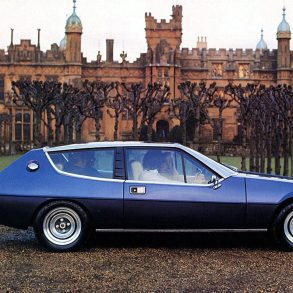
Lotus Elite Type 75
1974-1982
Elite II as it was known was designed to be a luxury 4-seat GT. It replaced the Elan Plus 2 and was a shooting brake design. There were four variations you could buy, a 501, 502, 503 and 504.
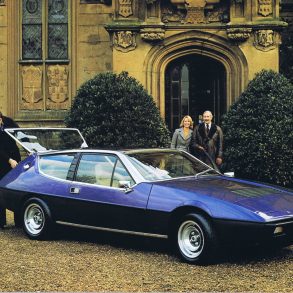
Lotus Elite Type 83
1980
In 1980 the Type 75 was replaced by the Elite Mark 2 Type 83. This version received a larger 2,174 cc Lotus 912 engine. The chassis was now galvanised steel and it got a new Getrag Type 265 gearbox.

Lotus Éclat S1
1975-1982
Éclat was a fastback version of Elite II. The fastback body style offered more practicality with storage in the trunk. The initial S1 had several issues regarding the chassis that impacted resale values.

Lotus Éclat Riviera
1980 – 1982
In 1981 Lotus introduced the Type 84, called the Lotus Eclat S 2.2 Riviera. This model, which was available for two years, came with a removable roof panel, aircon, vented bonnet and rear spoiler. 223 units made.
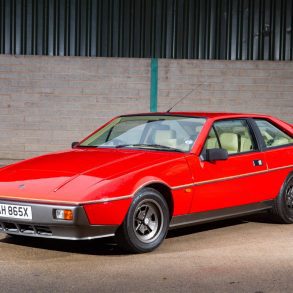
Lotus Excel
1982 – 1992
Lotus Excel GT, re-engineered Éclat. In 1982, the Eclat was developed into the Lotus Excel which used the same engine, but a modified version of the chassis, altered bodywork, new gearbox, driveline, and brakes.
Lotus Esprit
In all there, were over 24 variants and derivatives of the Eprit between 1976 and 2004. The list below shows the production models (excluding the GT1 and GT2 cars). Lotus made 10,675 Esprit’s in the car’s 28 year history. There were 5,829 Giugiaro’s style Esprit’s and 4,846 Steven’s Esprit’s made. Below is a list of the Esprit models including production date, engine power, top speed, acceleration and production numbers and other distinguishable features. For more information, check out our ultimate guide to the Lotus Esprit.
Lotus Esprit Variants
Lotus Esprit S1 (1975-1978)
Lotus Esprit S2 (1978-1981)
Lotus Esprit S2.2 (1980-1981)
Lotus Essex Turbo Esprit (1980-1981)
Lotus Turbo Esprit (1981-1986)
Lotus Turbo Esprit HC (1986-1987)
Lotus Esprit NA (1987-1990)
Lotus Esprit S3 (1981-1987)
Lotus Esprit Turbo SE (1989-1993)
Lotus Esprit X180-R (1991)
Lotus Esprit Turbo S4 (1993-1996)
Lotus Esprit Sport 300 (1992-1995)
Lotus Esprit S4s (1995-1997)
Lotus Esprit GT3 (1997-1999)
Lotus Esprit V8 (1996-2004)
Lotus Esprit V8 GT (1997-2001)
Lotus Esprit V8 SE (1997-2004)
Lotus Esprit Sport 350 (1999-2001)
Lotus Esprit 02 (2002-2004)
Lotus Esprit X180-R (Race)
Lotus Esprit X180-R1 (Race)
Lotus Esprit GT1 (Race)
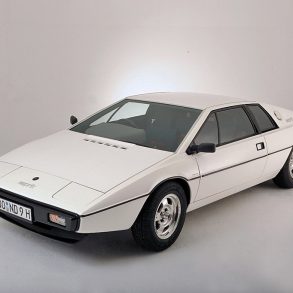
Lotus Esprit S1
1975-1978
The first Esprit had a Type 907 inline-4 which produced 160 bhp in European markets and 140 bhp in America. The engine was supported by a steel chassis and covered in a sleek fiberglass body.
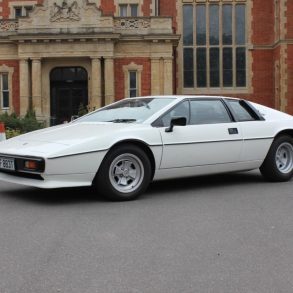
Lotus Esprit S2
1978-1981
By 1978, the Esprit was upgraded Series Two specification including a new front spoiler and rear valance. There were also new alloy wheels, wider seats and new instrument cluster.
Lotus Esprit S2.2
1980-1981
The S2.2 was a stop-gap model introduced in May 1980 whose only major difference from the S2 was a 2.2 L type 912 engine. Engine power output was unchanged but torque rose from 140 lb/ft to 160 lb/ft.
Essex Turbo Esprit
1980-1981
February 1980 to April 1981. Limited-edition Turbo was designated the Essex Commemorative Lotus Esprit Turbo, also known as the Type 82, and was only available in its sponsor’s blue, red, and silver.
Lotus Turbo Esprit
1981-1986
April 1981 to October 1986. Cheaper ‘production’ version, with reduced trim spec; except for earliest models, all have wet-sump lubrication, BBS wheels. Higher compression ratios for the engines was indicated by the ‘HC’ moniker.
Lotus Turbo Esprit HC
1986-1987
October 1986 to October 1987. The final incarnations of the Giugiaro-styled Esprit had higher compression ratios for the engines was indicated by the ‘HC’ moniker. High-compression version (up from 7.5:1 to 8:1), with Mahle forged pistons.
Lotus Esprit NA
1987-1990
October 1987 to September 1990. In the latter part of 1987, Lotus produced 2 Esprit models, the top of the range Esprit Turbo and the cheaper Normally Aspirated “Esprit”. The cars were virtually identical visually. Known as the Steven’s Esprits.
Lotus Esprit S3
1981-1987
April 1981 to October 1987. Significant chassis/suspension changes (as per Essex Turbo) plus many cosmetic revisions. The S3 received an upgraded 2.2 liter Type 912 engine. The S3 gained the new larger bumpers but kept the simpler sill line.
Lotus Esprit Turbo SE
1989-1993
The SE had a 2.2 liter turbo “charcooled” engine (first fuel injection water cooled model). The Lotus Esprit Turbo SE produced 264 hp and hit 60 mph in 4.7 seconds and hit 160 mph top speed. There was also a “Highwing” that was same as SE.
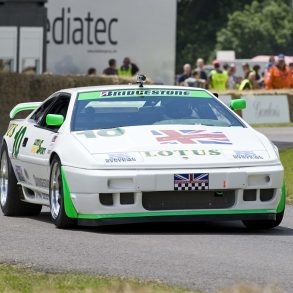
Lotus Esprit X180-R
1991
The type 105 SCCA car encouraged Lotus to make a new road-going Supercar. Thus the X180R was born. It was based on the the Type 105 having 285 hp. Twenty of these replicas were produced and sold as race-ready, road-going cars.
Lotus Esprit Turbo S4
1993-1996
With power steering, ABS as standard and an updated roomier cabin, the S4 was the first Esprit that could really be used everyday. Performance was on a par with the outgoing SE but the styling had been updated for the 90s with a sleeker front spoiler and more aero rear wing.
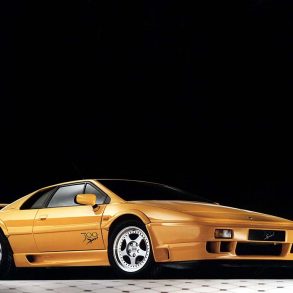
Lotus Esprit Sport 300
1992-1995
For customers that missed out on the very limited production run of X180Rs, the 300 Sport was offered in 1993. It essentially offered the same package as the X180R racecar. It got a full roll cage, harness and fire extinguisher as well as more power and better handling.
Lotus Esprit S4S
1995-1997
The 1995 Esprit S4S combined the best parts of the comfortable S4 and the rapid Sport 300 to produce a very attractive package. Power fell between the two others at 285bhp with a short overboost facility to 300bhp. The S4S was widely acclaimed as an amazing car.
Lotus Esprit GT3
1997-1999
The last iteration of the four-cylinder Esprit was the GT3, a turbocharged, charge cooled variant with the 2.0 L Type 920 which had previously been used only in Italian market cars. The GT3 was produced alongside the Esprit V8. Got some updates for MY 1998.
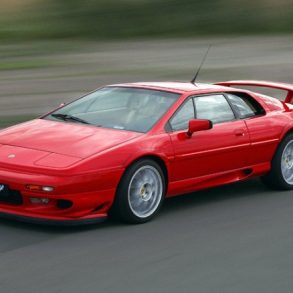
Lotus Esprit V8
1996-2004
1996 was the year that saw the Esprit finally gain the V8 it had deserved for so long. The exterior was left pretty much alone except for some bigger wheels. The addition the twin-turbo V8 saw a big increase in performance. In 1998 the V8 range was split into SE and GT models.
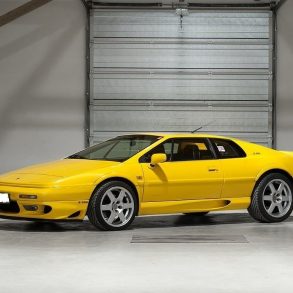
Lotus Esprit V8 GT
1997-2001
Launched in December 1966. The S1 had a modified Renault 16 1470 cc inline-four engine and a 4-speed gearbox. Minimalist construction was used throughout the first-series Europa. The Series 1 is known as the better drivers car due to its solid construction. Our favorite pick.
Lotus Esprit V8 SE
1997-2004
The Esprit finally got the V8 it had deserved for so long. The exterior was left pretty much alone except for some bigger wheels. The new twin-turbo V8 saw a big increase in performance. In 1998 range split into SE and GT models.
Esprit Sport 350
1999-2001
The Esprit Sport 350 was hailed as the fastest, and the best, Esprit of them all. 160 lbs in weight was shaved from the standard V8. This saving helped the Sport 350 become a performance monster. The Sport 350 received even wider rear tires.
Lotus Esprit 02
2002-2004
To celebrate 30 years of this performance car, Lotus has given the Esprit a facelift. The redesigned rear panel and light cluster carry over some of the Elise design elements. The front got the lip spoiler from the Sport 350.
Lotus Elise
The Lotus Elise introduced a range of technologies that revolutionised the automotive industry; such as a chassis made from extruded and bonded aluminium, a composite energy absorbing front crash structure and lightweight composite body panels. The whole car weighed in at half the weight of an average family saloon. This light weight bestowed the car with phenomenal acceleration and handling. In 1996 the Lotus Elise was easily pulling 1g in steady state cornering with standard production tyres and a 0-100km/h in 5.9 seconds. The Elise was first unveiled at the Frankfurt Motorshow in 1995 before entering production with first deliveries in August 1996. That Elise introduced a range of technologies such as a chassis made from extruded and bonded aluminium, a composite energy absorbing front crash structure and lightweight composite body panels. In 2000 Lotus introduced the second generation Elise. This evolutionary car, arguably one of the most important cars in Lotus’ fifty-two year history, added to the technology introduced on the Elise in 1996.
Lotus Elise Variants
Series 1 Elise Variants
Lotus Elise Series 1 (1996 - 2001)
Lotus Elise 111S (1999 - 2001)
Lotus Elise Sport 135 (1998 - 1999)
Lotus Elise Sport 160 (2000)
Lotus Elise Sport 190 (1999 - 2000)
Lotus 50th Anniversary Elise (1999)
Lotus Type 49 Elise (1996 - 2001)
Lotus Type 79 Elise (1999)
Lotus Elise Millenium (2000)
Lotus 340R (2000)
Lotus Elise GT1 (1997 - 1998)
Series 2 Elise Variants
Lotus Lotus S2 Elise (2000 - 2007)
Lotus Lotus S2 Elise 111 (2002 - 2004)
Lotus Lotus S2 Elise 111 S (2002 - 2004)
Lotus Elise S2 111R (2004 - 2008)
Lotus Elise (2008) (2008 - 2011)
Lotus Elise SC (2008 - 2011)
Lotus Elise S (S2) (2007 - 2008)
Lotus Elise R (2008)
Lotus Elise S2 Sport 135 (2002)
Lotus Elise S2 Sport 190 (2002)
Lotus Elise S2 Type 72 (2002)
Lotus Elise S2 Type 25 (2002)
Lotus Elise S2 Type 135R (2003)
Lotus Elise S2 Type 23 (2003)
Lotus Elise Racer (S2) (2005)
Lotus Elise S2 Type 49 (2002)
Lotus Elise S2 Type 99T (2003)
Lotus Elise S2 72D (2007)
Lotus Elise S 40th Anniv. (2007 - 2008)
Lotus Elise S2 California (2008)
Lotus Elise Type 25 Jim Clark (2008)
Lotus Elise S2 Club Racer (2009)
Lotus Sport 2-Eleven (2007 - 2011)
Series 3 Elise Variants
Lotus Elise S3 (2011)
Lotus Elise SC RGB (2011)
Lotus Elise R (2011)
Lotus Elise SC (2011)
Lotus Elise SC Final (2011)
Lotus Elise S (2012)
Lotus Elise Club Racer (2012)
Lotus Elise Cup 220 (2015 - 2021)
Lotus Elise Sprint (2017 - 2018)
Lotus Elise Sprint 220 (2017 - 2018)
Lotus Elise Sport 220 (2017 - 2021)
Lotus Elise S 20th Anniv. (2015)
Lotus Elise 250 Special(2016 - 2017)
Lotus Elise Race 250 (2016 - 2017)
Lotus Elise Cup 250 (2016 - 2017)
Lotus Elise Cup 250 (2017 - 2018)
Lotus Elise Cup 250 GP (2018)
Lotus Elise Cup 260 (2018)
Lotus Elise Sport 240 Final (2021)
Lotus Elise Cup 250 Final (2021)
Lotus Elise Series 1
1996-2001
The original Elise was designed as a sports car to be appreciated by real driving enthusiasts, fashion leaders and those who really appreciate technology and innovation. The whole car weighed in at half the weight of an average family saloon.
Lotus Elise 111S
1999-2001
The original Elise, called the Series 1 was augmented by a faster edition called the 111S, named after the Lotus type-number of the Elise — M111. Powered by a more powerful 1.8-litre K series VVC engine, and a close-ratio gearbox.
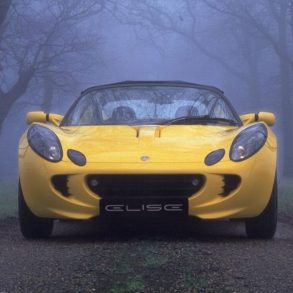
Lotus S2 Elise
2000-2007
Series 2 Elise launched October 2000 was an updated Series 1 using a modified version of the Series 1 chassis to meet new European crash regulations. Same K-series engine with new Lotus ECU. Rated at 120 hp.
Lotus S2 Elise 111
2002-2004
111 and 111S are basically the same car. They include a more powerful 156 hp VVC engine, closer ratio gearbox, new exhaust muffler with round tailpipes and flap valve; intake resonator box; oil/water heat exchanger.
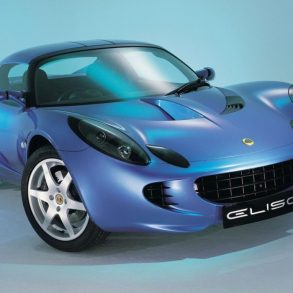
Lotus S2 Elise 111 S
2002-2004
This car is identical to the 111 but features leather seats and trim, an upgraded stereo and carpets. The VVC engine and the close-ratio gearbox combine to give aggressive power delivery and rate of acceleration.
Lotus Elise S2 111R
2004-2008
In 2004, Lotus took to bold move and brought the Elise overseas to America. At the same time they secured a deal with Toyota to power the new car with the same 2ZZ-GE engine from the Celica GT-S.
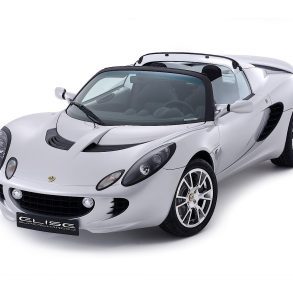
Lotus Elise (2008)
2008-2011
Lotus continued to provide a naturally aspirated Elise producing 189 hp (141 kW). For 2008, the Lotus Elise gets revised gauges and a few new accessories. It has the Lotus-tuned 1.8-liter 4-cylinder that gets variable cam timing.
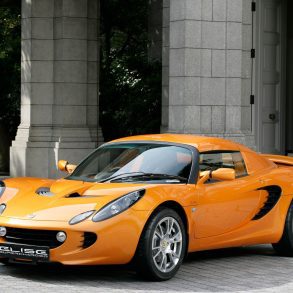
Lotus Elise SC
2008-2011
This is the most powerful production version of the Elise to date with 217 hp. A new non-intercooled installation of the current Elise’s 1.8-litre 2-ZZ VVTL-i engine. It has sharp steering, quick responses, huge grip.
Lotus Elise S (S2)
2007-2008
As the new entry-level car, the Elise S was not fastest Elise but the acceleration, performance and handling was class leading. Lotus shoehorned in a 1.8-liter VVT Toyota engine.
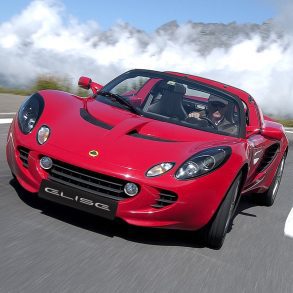
Lotus Elise R
2008
The 111R renamed Elise R. Part of the US federalization program meant minor changes across the board to update the Elise. Not much to see here in terms of improvements
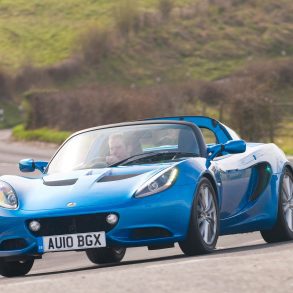
Lotus Elise S3
2011
The 2011 Elise range got a design refresh as well as a number of technical improvements. The highlight was a new 1ZR-FAE 1.6 litre engine with Valvematic and Dual VVT-I technology
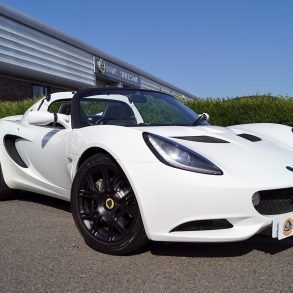
Lotus Elise SC RGB
2011
Made in celebration the legendary input of Roger Becker (RGB) who retired in January 2010 following 44 years of service. Lotus made a series of Lotus Elise and Lotus Exige cars in bespoke spec.
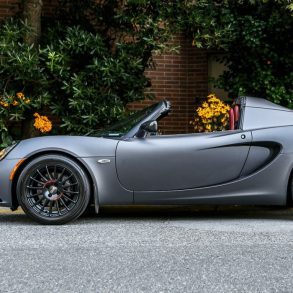
Lotus Elise R (S3)
2011
1.8 liter, 4-cylinder engine with 194 hp and 133 ft.-lbs. of torque. The North American model also gets additional updates like the evolution body design incorporating new front clamshell, rear bumper and engine cover and the new 6 speed close ratio gearbox. Touring Pack and Sports pack.
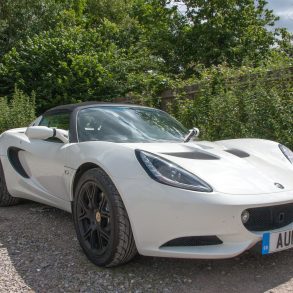
Lotus Elise SC
2011
The 2011 Elise range for the US and Canadian markets also got the Lotus Elise SC with its 1.8 liter supercharged 4-cylinder engine with 218 hp and 156 ft.-lbs. The sweetest ride and best performing Elise in the range in our opinion. Lots of updates like the R and base Elise also in terms of design and upgrade options.
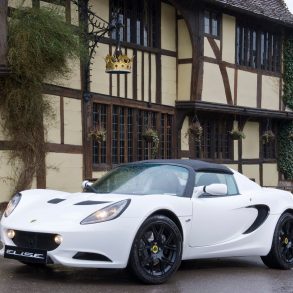
Lotus Elise SC Final
2011
With only 15 units made, this final edition is rare. It has a supercharged 217 bhp engine, exclusive matte black paint detailing on the rear transom panel, roll hoop cover, hardtop and door mirror housings and an unprecedented level of standard equipment, makes a big statement.
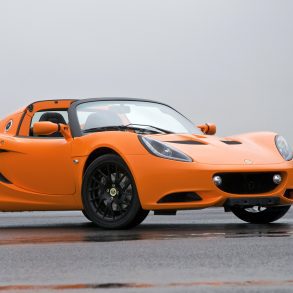
Lotus Elise S
2012
The ‘S’ designation now only applies to supercharged models in the Lotus range, and this Elise comes with a suitably blown 1.8-litre engine. The supercharged engine – a Toyota-sourced four-cylinder, as we’re used to with modern-day Elises – produces 1bhp less but 28 lb/ft more than the unit in the previous-gen SC.
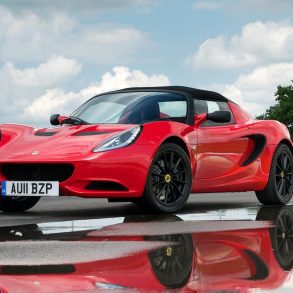
Lotus Elise Club Racer
2012
The engineers behind the Elise Club Racer took a stripped-to-the-bare-bone approach. For the first time ever an Elise variant comes complete with a Sport setting for the DPM (Dynamic Performance Management) allowing even the less experienced sports car drivers to feel at the top of their game.
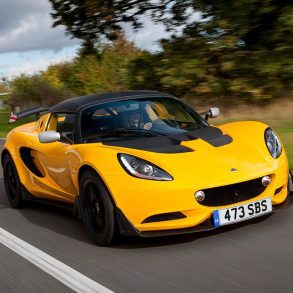
Lotus Elise Cup 220
2015-2021
At the 2015 Geneva Motor Show, Lotus revealed a high performance version of the Elise called the Cup 220. The Cup 220 is a more track focused and hardcore version of the standard Elise. A redesigned, lighter, front clam panel with wider apertures for improved cooling, saves 8.7kg. Other weight saved too.
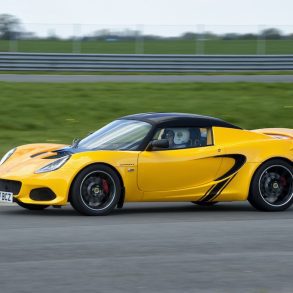
Lotus Elise Sprint
2017-2018
New iteration of handbuilt Lotus sports car launched with Sprint edition. Sprint adds carbon fiber to cut 41 kg and hit 798 kg dry weight. New front and rear design, and significant interior upgrades. Part of the regular lineup. Biggest weight cut to the car since the introduction of the first-generation Elise.
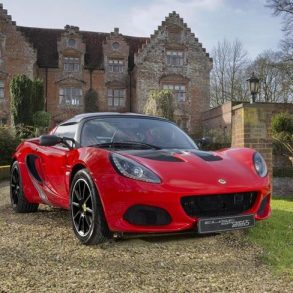
Lotus Elise Sprint 220
2017-2018
The engineers behind the Elise Club Racer took a stripped-to-the-bare-bone approach. For the first time ever an Elise variant comes complete with a Sport setting for the DPM allowing even the less experienced drivers to feel good.
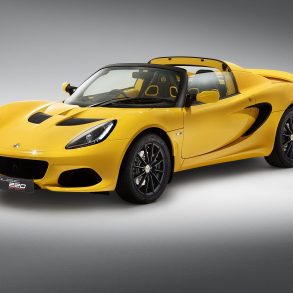
Lotus Elise Sport 220
2017-2021
The Elise Sport 220 builds on the many celebrated Elise virtues, blending agility, power, balance and communication into one compact expression of pure driving joy. It is the current base model available. The entry level Elise is still near perfect.
Lotus Elise Special Editions & Race Model Variants
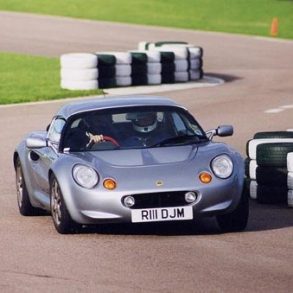
Lotus Elise Sport 135
1998-1999
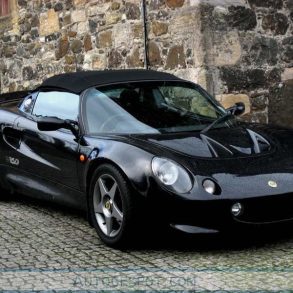
Lotus Elise Sport 160
2000
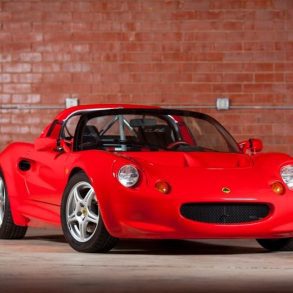
Lotus Elise Sport 190
1999-2000
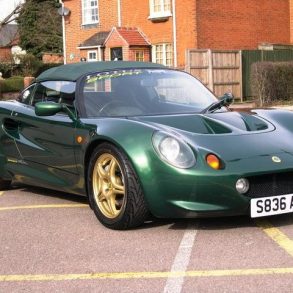
50th Anniv. Elise
1999
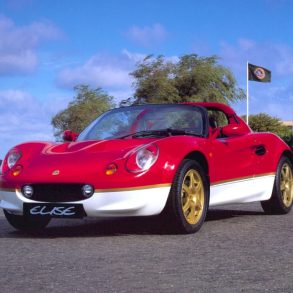
Lotus Type 49 Elise
1996-2001
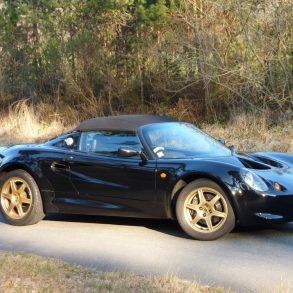
Lotus Type 79 Elise
1999
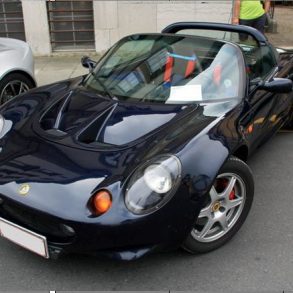
Elise Millenium
2000
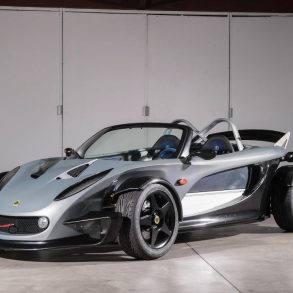
Lotus 340R
2000
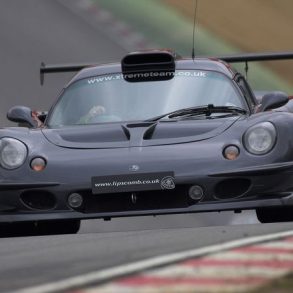
Lotus Elise GT1
1997-1998
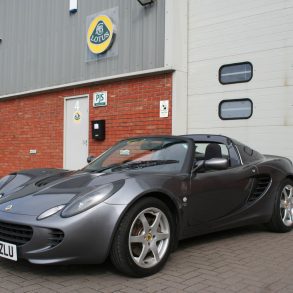
Elise S2 Sport 135
2002

Elise S2 Sport 190
2002
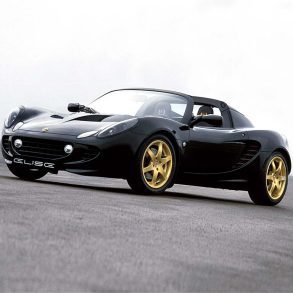
Elise S2 Type 72
2002
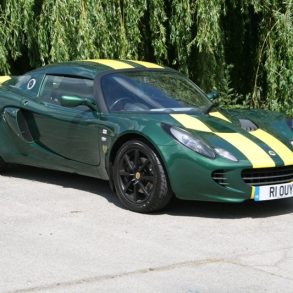
Lotus Elise S2 Type 25
2002
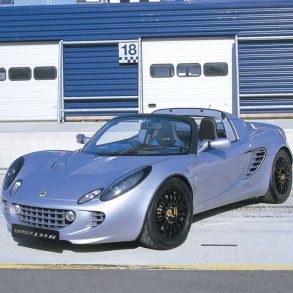
Lotus Elise S2 Type 135R
2003
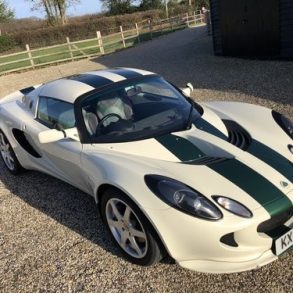
Lotus Elise S2 Type 23
2003
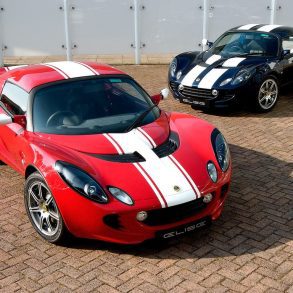
Lotus Elise Sports Racer (S2)
2005
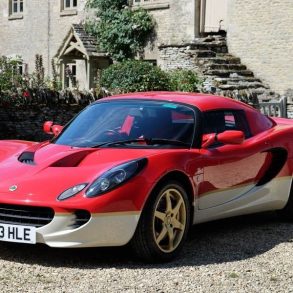
Lotus Elise S2 Type 49
2002
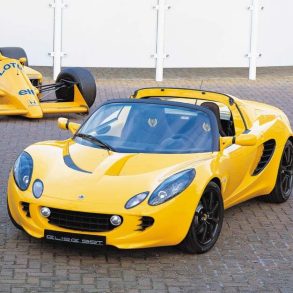
Lotus Elise S2 Type 99T
2003
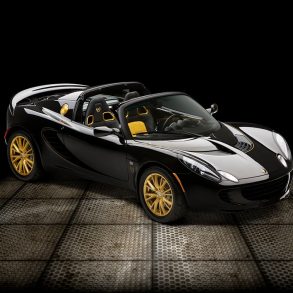
Lotus Elise S2 72D
2007
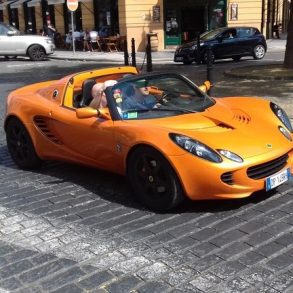
Lotus Elise S 40th Anniv
2007-2008
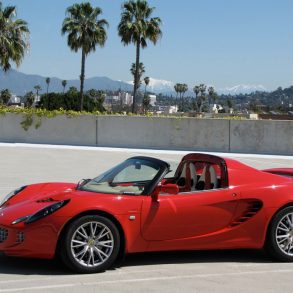
Lotus Elise S2 California
2008
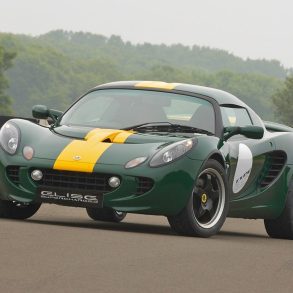
Lotus Elise Type 25 Jim Clark
2008
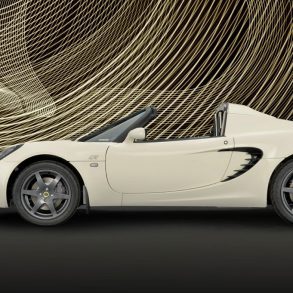
Lotus Elise S2 Club Racer
2009
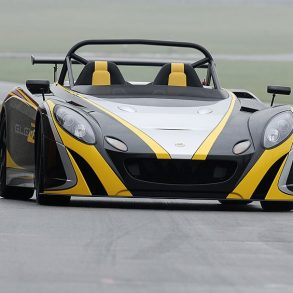
Lotus Sport 2-Eleven (Track)
2007-2011
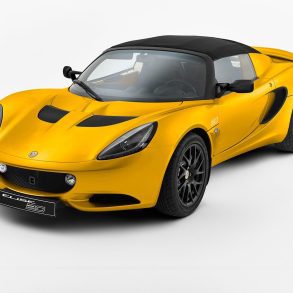
Elise S 20th Anniversary
2015
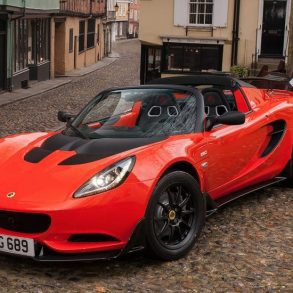
Lotus Elise Cup 250
2016-2017
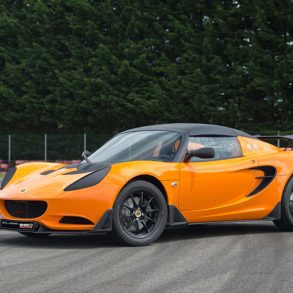
Lotus Elise Race 250
2016-2017
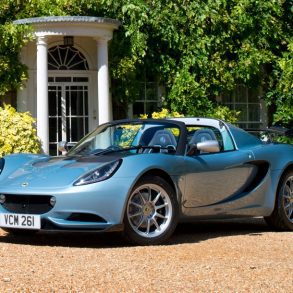
Lotus Elise 250 Special
2016-2017
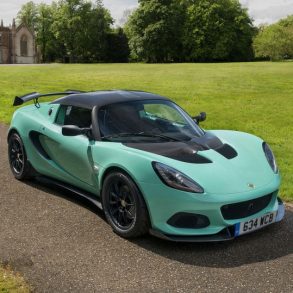
Lotus Elise Cup 250
2017-2018
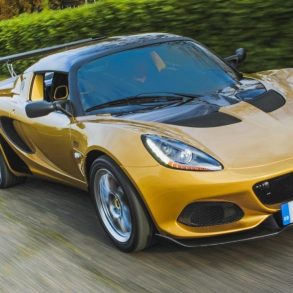
Lotus Elise Cup 260
2018
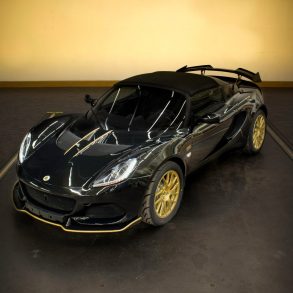
Elise Cup 250 GP
2018
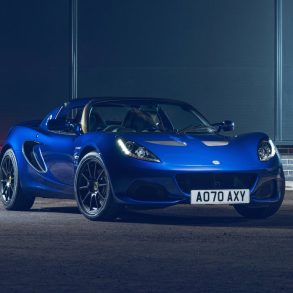
Elise Sport 240 Final Edition
2021
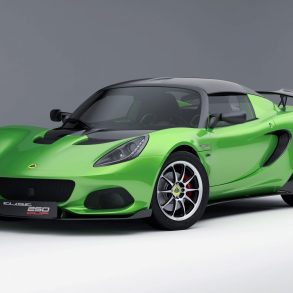
Lotus Elise Cup 250 Final Edition
2021
Lotus Europa S
The Lotus Europa S was a Grand Tourer (GT) inspired two-seater. It was designed to be more a touring and cruising car with the same Lotus driving DNA Too. It had higher levels of practicality and refinement to complement the simplicity of the Elise and Exige models. While it was just 995 kg and had a decent engine, the car just wasn’t that good and it sold poorly. An mid-life update called the SE was a big improvement but by that stage the Europa S’s fate was sealed.
Lotus Europa S Variants
Lotus Europa S (2006 - 2008)
Lotus Europa SE (2008 - 2010)
Lotus Europa S
2006 - 2008
The new Lotus Europa S, a Grand Tourer (GT) inspired two-seater will provide Lotus customers with a spectacular sportscar with significantly enhanced levels of touring and cruising capability. The reviews were weak and the car never sold well. A disappointment.
Lotus Europa SE
2008 - 2010
Weak sales of the Europa S meant Lotus went back to work and created the Europa SE, which ended up replacing the S. It had an upgraded engine, new cast alloy wheels, upgraded suspension and brakes. The interior and exterior were also tweaked.
Lotus Exige
The Lotus Exige is essentially the coupé version of the Lotus Elise which has been in production since 2000. The first Exige was based on the Elise and was known as the Exige Mk1. The philosophy behind the Exige was simple: more power, more grip and more downforce for those looking for a real track car.
Lotus Exige Variants
Series 1 Exige Variants
Lotus Exige Series 1 (2000 - 2002)
Series 2 Exige Variants
Lotus Exige (S2) (2004 - 2006)
Lotus Exige S (2006 - 2008)
Lotus Exige S 240 (2008–2011)
Lotus Exige S 240 (2010 - 2011)
Lotus Sport Exige (2005)
Lotus Exige 240R (2005)
Lotus Exige Espionage (2005)
Lotus Exige GT3 Prototype (2005)
Lotus Exige S 265E (2006)
Lotus Lotus Exige S British GT (2006)
Series 2 Exige cont.
Lotus Exige GT3 Concept (2007)
Lotus Exige Cup Tri-Fuel (2008)
Lotus Exige S Club Racer (2008)
Lotus Exige S Sprint (2008)
Lotus Lotus Sport Exige S (2009)
Lotus Exige Scura/Stealth (2009)
Lotus Exige S Type 72 (2010)
Lotus Exige S RGB Special (2010)
Lotus Exige Matte Black Final (2011)
Lotus Exige S 260 Final Edition (2011)
Lotus Exige Cup / Cup 240 (2006)
Lotus Exige Cup 255 (2007)
Lotus Exige Cup 260 (2008)
Lotus Exige Cup 260 (2009)
Lotus Exige Cup 260 (2010)
Series 3 Exige Variants
Lotus Exige S V6 (2012 - 2015)
Lotus Exige S V6 Roadster (2013 - 2016)
Lotus Exige Sport 350 (2015 - 2021)
Lotus Exige Sport 380 (2016 - 2021)
Lotus Exige Sport 410 (2018 - 2021)
Lotus Exige R - GT (2012)
Lotus Exige V6 Cup (2013 - 2015)
Lotus Exige V6 Cup R (2013 - 2016)
Lotus Exige V6 360 Cup (2015 - 2021)
Lotus Exige S Club (2015 - 2021)
Lotus Exige V6 350 SE (2016)
Lotus Exige Cup 380 (2016 - 2021)
Lotus Exige Cup 430 (2017 - 2021)
Lotus Exige Race 380 (2017)
Lotus Exige 70th Anniversary (2018)
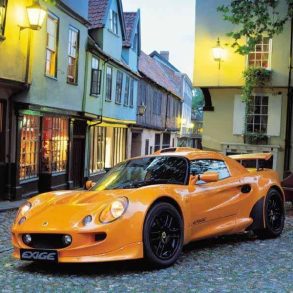
Lotus Exige (S1)
2000-2002
The original Exige was launched in 2000 with a naturally aspirated 1.8 L Rover K Series Inline-four engine in VHPD (Very High Performance Derivative) tune. It produces 177 bhp at 7,800 rpm in standard form.
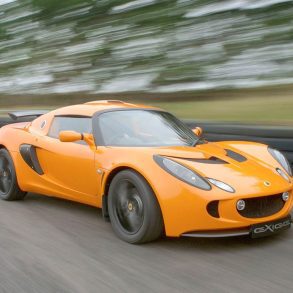
Lotus Exige (S2)
2004–2006
After an absence from the marketplace for 2 years, Lotus is reintroducing the Lotus Exige. The second generation Exige, unveiled as a world debut at the Geneva Motorshow in 2004. Better in every way.
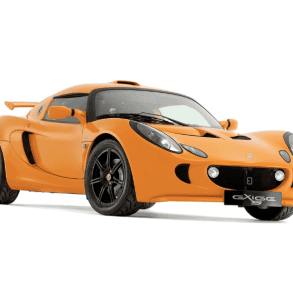
Lotus Exige S
2006 – 2008
With 121.4 bhp per liter it was one of most powerful production cars in the world for its engine size. Because the basic car is so immensely strong but lightweight 2057 lbs, a power to weight ratio of 233.2 bhp/ton.
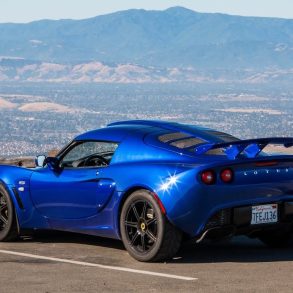
Lotus Exige S 240
2008–2011
In 2008, the Exige S was replaced by the Exige S 240. Power output increased to 240 bhp. The S 240 also received upgraded AP Racing brakes from the Exige Cup 240. 0-60 mph improved to 4.0 seconds.
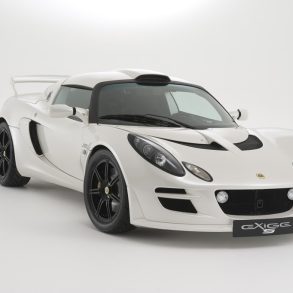
Lotus Exige S 240
2010 – 2011
The 2010 Exige S240 introduces a few key enhancements to update the appearance and improve aerodynamic performance. A restyled front end and new larger, low drag rear wing, not only reduces drag.
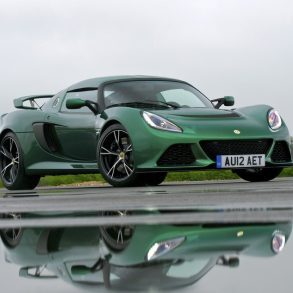
Lotus Exige S V6
2012-2015
The new Exige, introduced at the IAA in Frankfurt in September 2011. The dramatic styling overhaul sees a completely new look for the Exige. The engine was upgraded to a supercharged V6 supplied from Toyota.
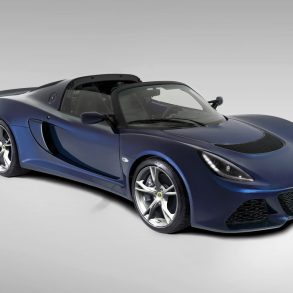
Exige S V6 Roadster
2013-2016
Exige S Roadster combines its coupé twin’s mesmerizing grunt and handling with an open air experience that makes the driver feel all the more at one with the road. First time the Exige was offered with a soft top.
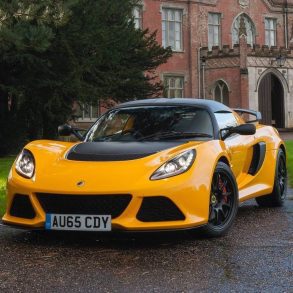
Exige Sport 350
2015-2021
The new Exige Sport 350 is the next model in the range to mark the reintroduction of the renowned ‘Sport’ naming designation. It delivers a lighter and even more performance-focused driving experience.
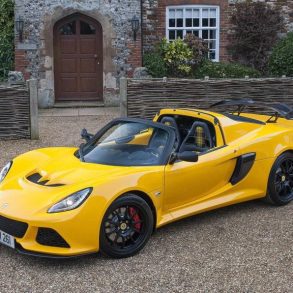
Exige Sport 350 Roadster
2016-2021
The Exige Sport 350 is the next model in the range to mark the reintroduction of the renowned ‘Sport’ naming designation. It delivers a lighter and even more performance-focused driving experience.
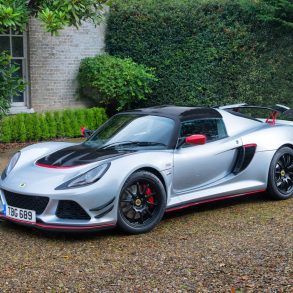
Lotus Exige Sport 380
2016-2021
The Exige Sport 380 is faster, lighter and more powerful than the previous Exige iterations. To date, the Exige Sport 380 is the fastest sports car that comes with a Hethel V6 engine. Supercar performance.
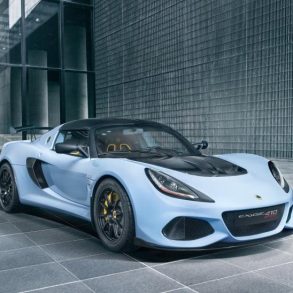
Lotus Exige Sport 410
2018-2021
The Lotus Exige Sport 410 boasts a recalibrated version of the ubiquitous supercharged Toyota 3.5L V6 engine. Class-leading power to weight ratio of 389 hp/tonne. Both coupe and roadster.
Lotus Exige Special Editions & Race Model Variants
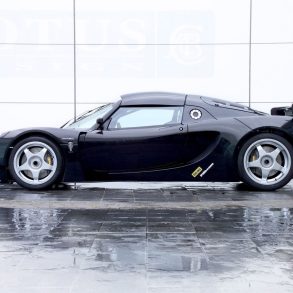
Lotus Sport Exige
2005
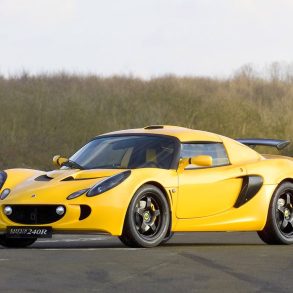
Lotus Exige 240R
2005
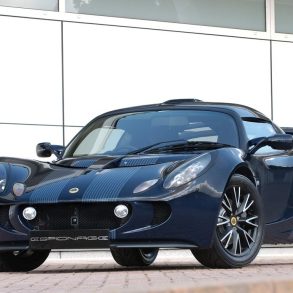
Exige Espionage
2005
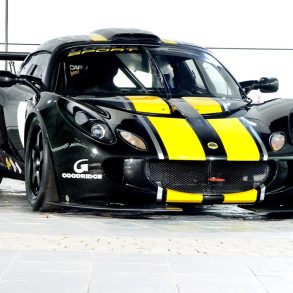
Exige GT3 Prototype
2005
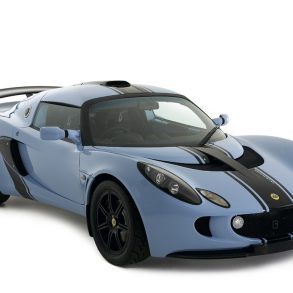
Lotus Exige S Club Racer
2008
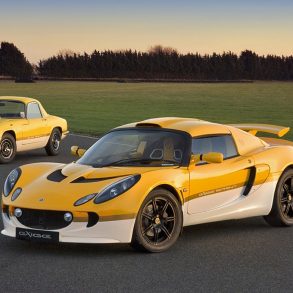
Lotus Exige S Sprint
2008
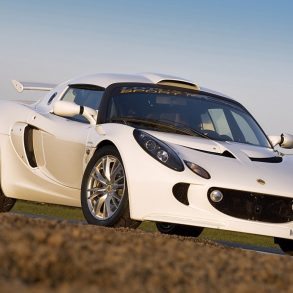
Lotus Exige Cup 260
2008
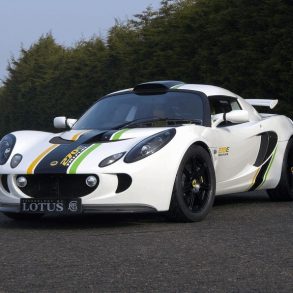
Exige Cup 270E Tri-Fuel
2008
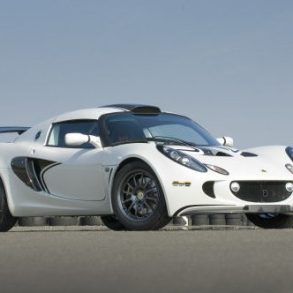
Lotus Exige Cup 260
2009
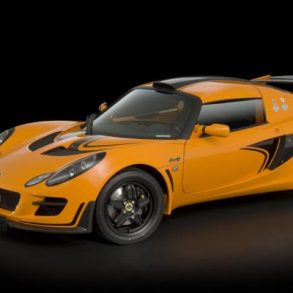
Lotus Exige Cup 260
2010
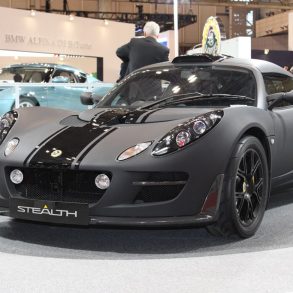
Lotus Exige Scura
2009
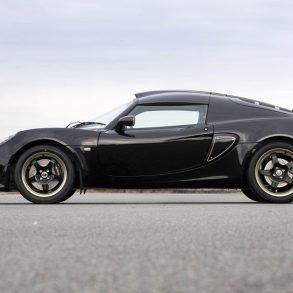
Exige S Type 72
2010
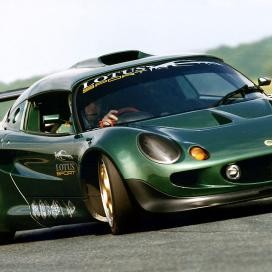
Lotus Sport Exige S
2009
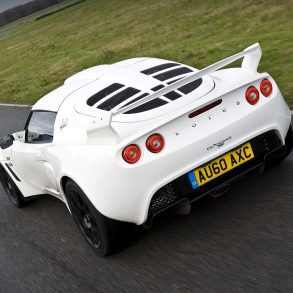
Exige S RGB Special Edition
2010
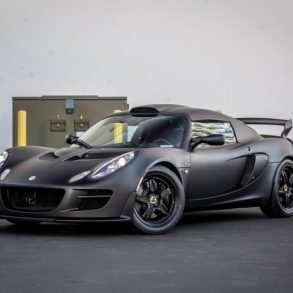
Lotus Exige Matte Black Final
2011
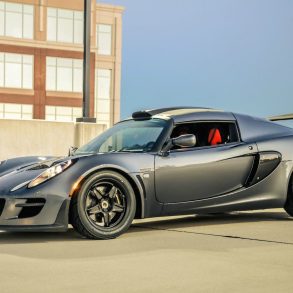
Lotus Exige S 260 Final
2011
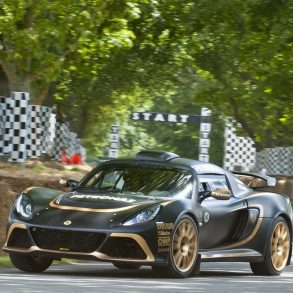
Lotus Exige R-GT
2012
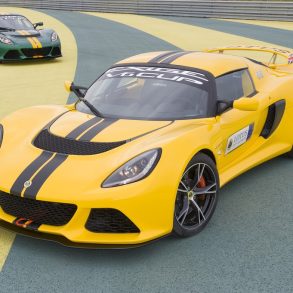
Lotus Exige V6 Cup
2013-2015
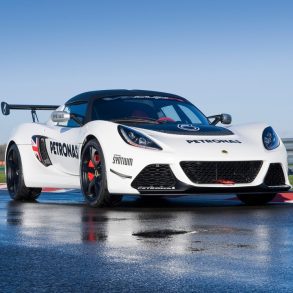
Exige V6 Cup R
2013-2016
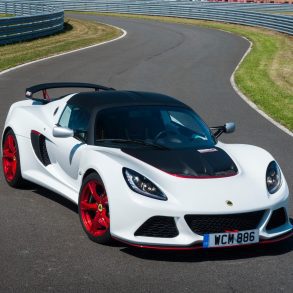
Exige V6 360 Cup
2015-2021
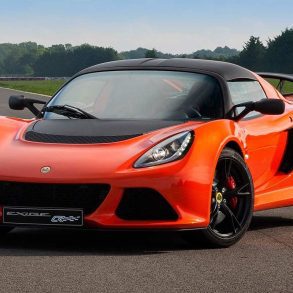
Lotus Exige S Club Racer
2015-2021
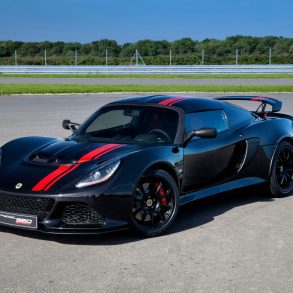
Lotus Exige V6 350 SE
2016
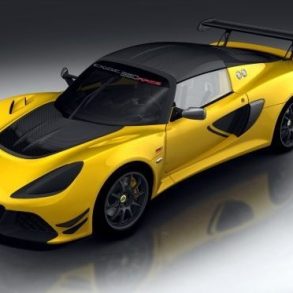
Lotus Exige Race 380
2017
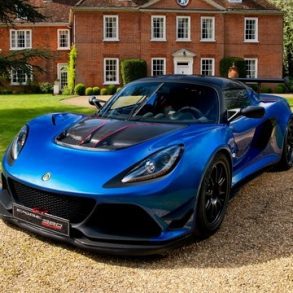
Lotus Exige Cup 380
2016-2021
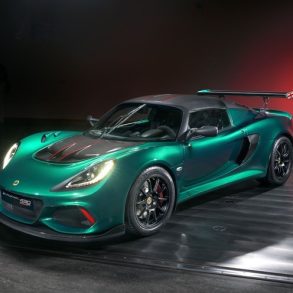
Lotus Exige Cup 430
2017-2021
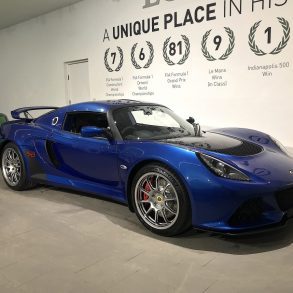
Exige 70th Anniv.
2018
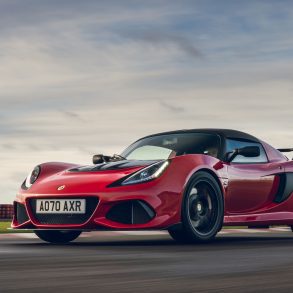
Exige Sport 420 Final Edition
2021
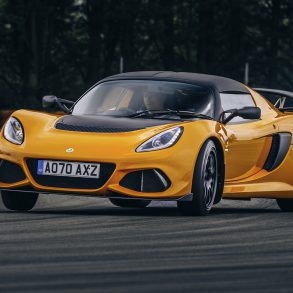
Exige Sport 390 Final Edition
2021
Lotus Evora
The Lotus Evora was the first all-new Lotus for nearly 15 years. It was built to take on the likes of the Porsche Cayman and 911 and when it launched in 2009 as a 2010 MY car the world took notice. The Evora was the world’s only mid-engined 2+2. The Evora is constructed on a lightweight aluminum tub with an additional front crash structure also made from aluminum, along with a steel rear subframe which houses the drivetrain. The model was intended to be a more refined and practical version of the less-than-civilized Elise/Exige. Retaining the important characteristics which make a Lotus car unique, the Evora is a balanced, mid-engined, lightweight car that is a pleasure to drive with a profile that is undeniably made-in-Hethel. In 2012, the Evora received its first major refresh – significant at the time, as the Elise/Exige were phased out, making the Evora the only model in Lotus’ lineup. With the launch of the Emira, the Evora now goes to the history books.
Lotus Evora Variants
Lotus Evora (2010-2015)
Lotus Evora S (2010-2015)
Lotus Evora GTE Road Car (2011)
Lotus Evora S Carabinieri (2011)
Lotus Evora 414E Hybrid (2012)
Lotus Evora 400 (2016-2021)
Lotus Evora Sport 410 (2017)
Lotus Evora GT430 (2017)
Lotus Evora GT430 Sport (2017)
Lotus Evora GT410 Sport (2018)
Lotus Evora GT410 (2020 – 2021)
Lotus Evora GT (2020 – 2021)
Lotus Evora
2010-2015
The first Evora launched with 276 bhp and 252 lb ft of torque and its performance was on par with the Cayman. It was a smooth engine with lots of mid range pickup, making the Evora a fun car for backroads. Zero to 62mph took 5.1 sec and top speed was 162 mph. handling is the name of its game.
Lotus Evora S
2010-2015
In 2010, Lotus unveiled a new variant of the Evora which was much more focused and more powerful than the regular version, called the Evora S. It got a supercharger. Lotus also upgraded the exhaust, recalibrated the suspension to be more aggressive. Performance improved.
Lotus Evora 400
2016-2021
The Evora 400 was launched at the 2015 Geneva Motor Show and replaced both the Evora and the Evora S in the model range for the 2016 MY. A new supercharger gets power up to 400 hp and thats 55 horsepower over the S model from 2014. It also gets lots of little tweaks across the board.
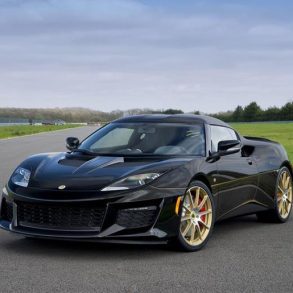
Evora Sport 410
2017
It is one of the two trim levels for the GT430. It features a more aero dynamic body and removes the GT430s rear wing for smoother airflow and to reduce drag. The Sport weighs 10 kg less. Like the GT430 this is a really rare model with a total of 60 units being made. A rare, extreme, race-ready Lotus.
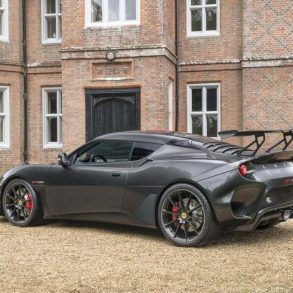
Lotus Evora GT430
2017
The ultimate Evora variant, the GT430. While the ‘GT430’ moniker correctly points out that this is the most powerful Lotus ever made at 430 horsepower, it is the less “in-your-face” details about the car which truly make it greater than the sum of its parts. The GT430 is a very serious car for very serious money.
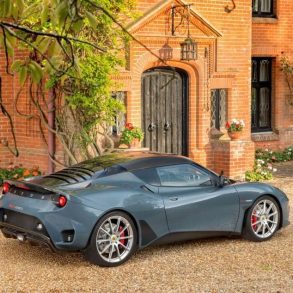
Lotus Evora GT430 Sport
2017
It is one of the two trim levels for the GT430. It features a more aero dynamic body and removes the GT430s rear wing for smoother airflow and to reduce drag. The Sport weighs 10 kg less. Like the GT430 this is a really rare model with a total of 60 units being made. A rare, extreme, race-ready Lotus.
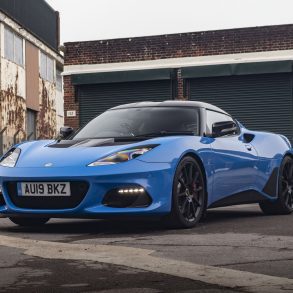
Lotus Evora GT410 Sport
2018
To celebrate its 70th anniversary Lotus unveiled the new Evora GT410 Sport, a more subtle GT430. It takes the GT430’s basic shape and adds new composite front and rear body panels minus some of the 430’s higher downforce pieces for a more-subtle shape. Quicker, lighter more aerodynamic.
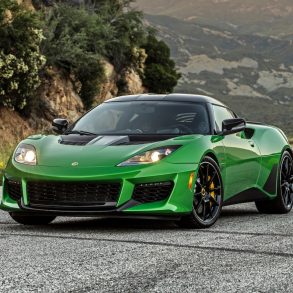
Lotus Evora GT
2020 – 2021
This car is made specifically for the North American market. For under $100k ($96,950 to be exact) you can get your hands on the most powerful street-legal Lotus available right now. Lotus also updated the exterior with front lip spoiler, wheel arch louvers, ducts behind the wheels, and a rear diffuser.
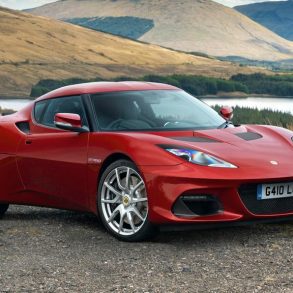
Lotus Evora GT410
2020 – 2021
A driver’s car, but now optimized for better everyday use. The company added a GT410 version of the car that adds refinement to the model that wasn’t there before. More tech features and sound deadening too in addition to reworked suspension for a more comfortable ride. This is Lotus’ newest model.
Lotus Evora Special Editions & Race Model Variants
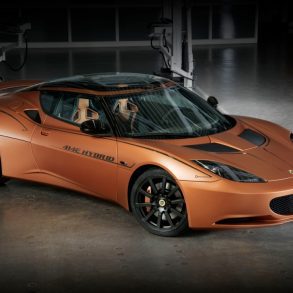
Evora 414E Hybrid
2012
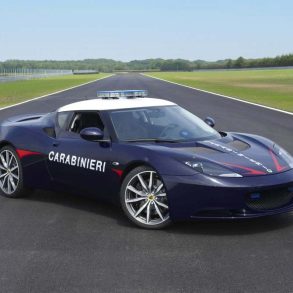
Evora S Carabinieri
2011
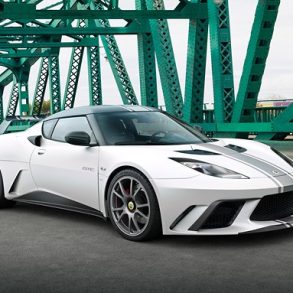
Evora GTE Road Car
2011
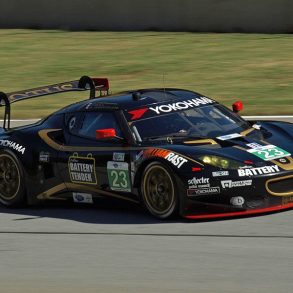
Evora LM GTE
2011-2012
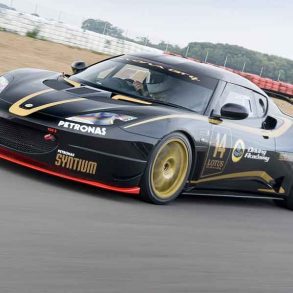
Evora Group GT4
2011 -2012
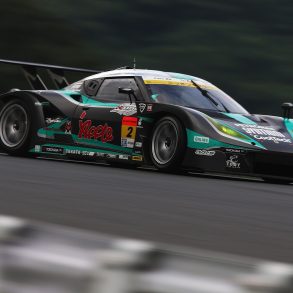
Lotus Evora GT300
2014 - 2021
Lotus Concept Cars
This is a list of concepts and prototype vehicles created by Lotus that never reached full production. When it comes to Lotus concept cars it is impossible not to talk about Paris 2010. The somewhat new Lotus CEO Dany Bahar addressed the crowd, announcing that Lotus would be entering a new era and in a matter of minutes, pulled the wraps off five all new cars, the Esprit, Elan, Elite, Elise and Eterne concept cars, each time with a gasp from the crowd as the next concept’s name was announced. This wasn’t just the introduction of a few concept cars. We were witnessing the complete and utter revitalization, rebranding and rebirth of a legendary car company. Unfortunately he didn’t last as CEO and we never saw any of these cars materialize. We created a separate page for all the Concept cars from Lotus.
Lotus Concept Car Variants
Lotus Esprit Concept (M70) (1972)
Lotus Etna Concept (1984)
Lotus M90 (Lotus X100) (1986)
Lotus Emotion (1991)
Lotus M120 (1998)
Lotus M250 Concept (2000)
Lotus Engineering APX (2006)
Lotus Exige GT3 Concept (2007)
Lotus Elan Prototype (2010)
Lotus Esprit Concept (2010)
Lotus Elite Prototype (2010)
Lotus Elise Prototype (2010)
Lotus Eterne Prototype (2010)
Lotus Evora Carbon Concept (2010)
Lotus Evora GTE Concept (2011)
Lotus Evora Enduro GT (2011)
Lotus Ethos (2011)
Lotus Evora GT Concept (2019)
Lotus E-R9 Concept (2021)
Lotus Emira GT4 Concept (2021)
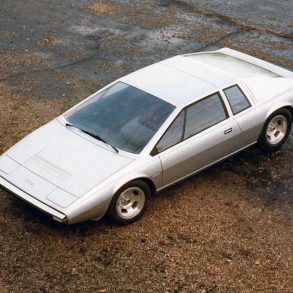
Lotus Esprit Concept (M70)
1972
Esprit started when Giorgetto Giugiaro showed the Italdesign M70 concept at the 1972 Turin Show. It had a radical ‘folded paper’ front end.
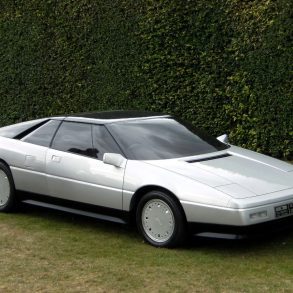
Lotus Etna Concept
1984
Depending on how you define the word, the Etna could have become the first British mid-engined ‘supercar’. Designed by Giorgetto Giugiaro.
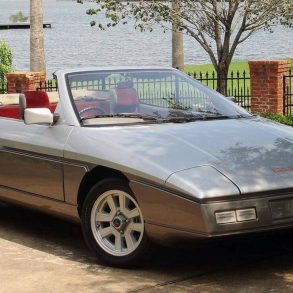
Lotus M90 (Lotus X100)
1986
The Lotus M90 (later renamed to Lotus X100) was a Toyota-based “new Elan”. It never happened. This was a development prototype.
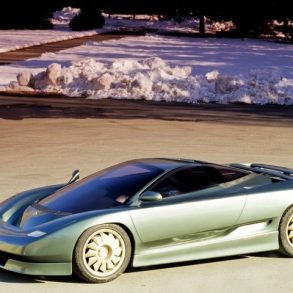
Lotus Emotion
1991
An Esprit-based concept. Rumor was Bertone originally created the Emotion as a design proposal for what was to become the Bugatti EB110.
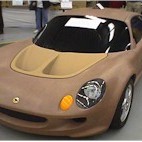
Lotus M120
1998
The little-known Project M120 was created to try to build a hardtop Elise coupé. Unfortunately, the project was suspended.
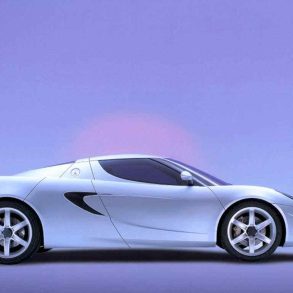
Lotus M250 Concept
2000
Conceived as a model to fit in the Lotus lineup between the Elise and Esprit. It had a 250hp, 3 litre V6 that was mid-mounted.
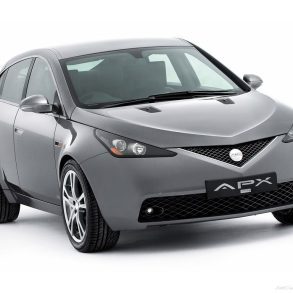
Lotus APX Concept
2006
APX by Lotus Engineering is the first example of a complete vehicle built on the innovative Versatile Vehicle Architecture (VVA).
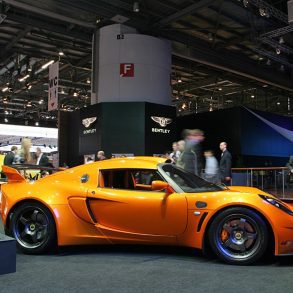
Lotus Exige GT3 Concept
2007
The Lotus Exige S is the latest addition to the Exige range and is a real sports car that redefines the term Extreme Performance.
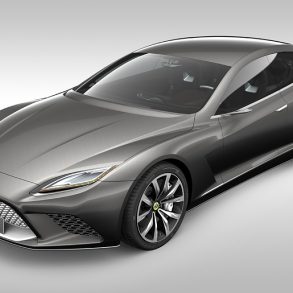
Lotus Eterne Concept
2010
The Eterne is a true four door, four seater sports GT. It’s the ultimate expression of refined style, sophistication and grace.
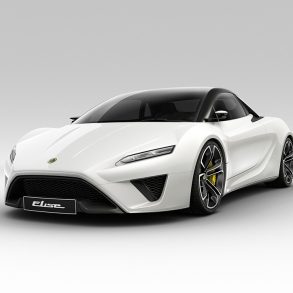
Lotus Elise Concept
2010
The Lotus Elise first appeared as a design study alongside the other Lotus concepts at the 2010 Paris Motor Show.
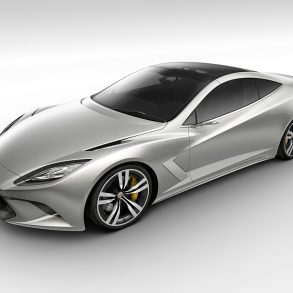
Lotus Elite Prototype
2010
We said “So here it is, the Lotus Elite, the first taste of what’s to come from Lotus in the future”. It’s too bad it all fell apart.
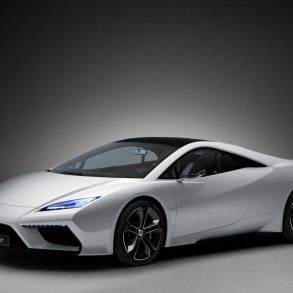
Lotus Esprit Concept
2010
As part of a five-car announcement at the 2010 Paris Motor Show, Lotus unveiled a completely redesigned Esprit.
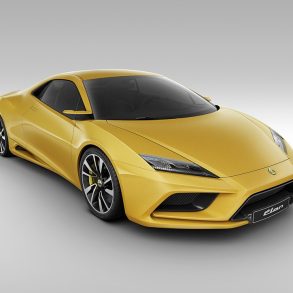
Lotus Elan Prototype
2010
The Elan was to be “the beating heart of the new Lotus lineup”. It’s a high performance sports car, that is clear, it’s a Lotus after all.
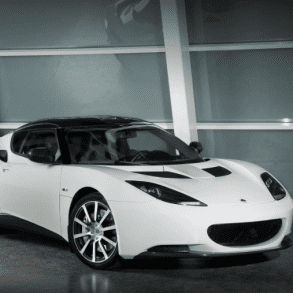
Lotus Evora Carbon Concept
2010
The Evora Carbon Concept car emphasises Lotus’ motorsport pedigree, utilising beautiful high quality materials with exposed carbon fibre and plush alcantara.

Lotus Evora GTE Road Car
2011
The Lotus Evora GTE Road Car Concept, revealed in 2011, was a thrilling hybrid of race car and street machine. It took inspiration from the Evora GTE race car.
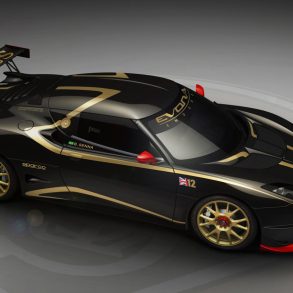
Lotus Evora Enduro GT
2011
An intriguing exploration of Lotus's potential off-road and rally racing. It featured a raised ride height, rally-inspired styling with a roof-mounted light pod, and a tough-looking body kit.
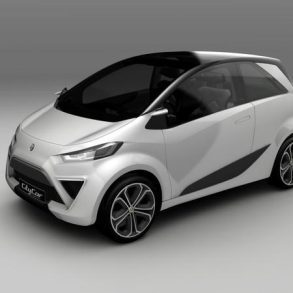
Lotus Ethos
2011
The Ethos featured a hybrid-electric powertrain, with a 1.2-liter three-cylinder engine serving as a range extender. Aimed to combine hybrid power with lightweight construction.
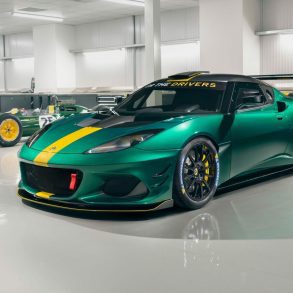
Lotus Evora GT Concept
2019
The first step in a return to international racing. One of the most famous names in motorsport showed the Evora GT4 Concept.
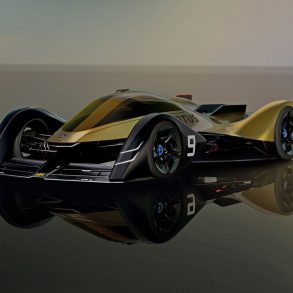
Lotus E-R9 Concept
2021
The Lotus E-R9 Concept is a dramatic futuristic design study envisioning the brand's endurance racing prospects for 2030. It showcases an advanced electric drivetrain powering each wheel individually.
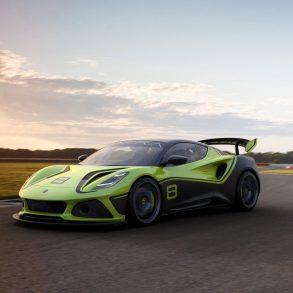
Lotus Emira GT4 Concept
2021
The Lotus Emira GT4 Concept is a track-focused evolution of the Emira sports car, designed to compete in GT4 racing series. It previews a potential return to GT racing and is a serious looking track weapon.
Lotus Race Cars
There have been many flavors of the Lotus racing machines over the years. Lotus first entered Formula One in 1958 and a Lotus Formula One car driven by Stirling Moss won the marque’s first Grand Prix in 1960 at Monaco. Major success came in 1963 with the Lotus 25, which won Team Lotus its first F1 World Constructors Championship. Lotus was also a major player in Indycars in the 1960s and for as long as I can remember with Formula F2, F3 and Formula Ford. There have been many other flavors of Lotus race cars over the years.
Lotus Race Car Variants
Lotus F1 Cars
Lotus 12 (F1) (1957)
Lotus 16 (F1) (1958 - 1960)
Lotus 18 (F1) (1960 - 1961)
Lotus 21 (F1) (1961)
Lotus 24 (F1) (1962)
Lotus 25 (F1) (1962 - 1964)
Lotus 33 (F1) (1964 - 1965)
Lotus 43 (F1) (1966)
Lotus 49 (F1) (1967 - 1970)
Lotus 63 (F1) (1969)
Lotus 72 (F1) (1970 - 1972)
Lotus 77 (F1) (1976)
Lotus 78 (F1) (1977 - 1978)
Lotus 79 (F1) (1978 - 1979)
Lotus 80 (F1) (1979)
Lotus 87 (F1) (1980 - 1982)
Lotus 88 (F1) (1981)
Lotus 91 (F1) (1982)
Lotus 92 (F1) (1983)
Lotus 93T (F1) (1983)
Lotus 94T (F1) (1983)
Lotus 95T (F1) (1984)
Lotus 97T (F1) (1985 - 1986)
Lotus 98T (F1) (1986 - 1987)
Lotus 99T (F1) (1987)
Lotus 100T (F1) (1988)
Lotus 101 (F1) (1989)
Lotus 102 (F1) (1990 - 1992)
Lotus 107 (F1) (1992 - 1994)
Lotus 109 (F1) (1994)
Lotus T127 (F1) (2010)
Lotus T128 (F1) (2011)
Lotus IndyCar Cars
Lotus 29 (IndyCar) (1963)
Lotus 34 (IndyCar) (1964)
Lotus 38 (IndyCar) (1965)
Lotus 42 (IndyCar) (1966-1967)
Lotus 56B (IndyCar) (1968)
Lotus 64 Ford (IndyCar) (1969)
Lotus 96T (IndyCar) (1984)
F2, F3, Formula Junior/Ford
Lotus 12 (F2) (1958)
Lotus 16 (F2) (1960 - 1961)
Lotus 18 (F3) (1960 - 1961)
Lotus 20 (F3) (1961)
Lotus 22 (F3) (1962 - 1965)
Lotus 27 (1963)
Lotus 31 (1964 - 1965)
Lotus 31 (F3) (1964)
Lotus 32 (1964 - 1965)
Lotus 35 (1965)
Lotus 35 (F3) (1965)
Lotus 39 (1965 - 1966)
Lotus 41 (F3) (1966)
Lotus 44 (1967)
Lotus 48 (1967)
Lotus 51 (1967 - 1969)
Lotus 55 (F3) (1968)
Lotus 59 (F2/F3) (1969 - 1970)
Lotus 61 (F Ford) (1969)
Lotus 69 (F2/F3/F Ford) (1970)
Lotus 70 (F5000/Form A) (1970)
Lotus 73 (F3) (1972 - 1973)
Lotus 74 (F2) (1973)
Misc Lotus Race Cars
Lotus Mark I (1948)
Lotus Mark II (1949 - 1950)
Lotus Mark III (1951)
Lotus Mark IV (1952)
Lotus Mark VIII (1953 - 1955)
Lotus Mark VI (1953 - 1957)
Lotus Mark IX (1954 - 1955)
Lotus 13 (Eleven S2) (1956 - 1958)
Lotus Eleven (1956 - 1957)
Lotus Mark X (1956 - 1958)
Lotus 14 (Elite) (1957 - 1963)
Lotus 15 (1958 - 1960)
Lotus 17 (1959)
Lotus 19 (1960 - 1962)
Lotus LX (Le Mans) (1960)
Lotus 23 (1962 - 1963)
Lotus 26R (1962 - 1966)
Lotus 30 (1964)
Lotus 40 (1965)
Lotus 47 (1966 - 1970)
Lotus Europa Type 62 (1969)
Lotus Esprit X180R (1991 - 1994)
Lotus Esprit Type 114 (1996 - 1997)
Lotus Exos T125 (2010)
Lotus Evora Type 124 (2010)
Lotus Evora GT4/Cup (2010)
Lotus Evora GT300
Lotus Evora GTE (2011)
Lotus T128 (Le Mans) (2012)
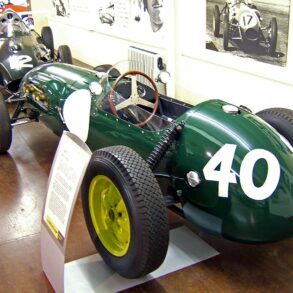
Lotus 12 (F1)
Season: 1957
The Lotus 12 was a Formula Two and Formula One racing car. Despite its engineering advances, the 12 was not a success in F1. In F2, the car won the class in the mixed F1/F2 1958 BRDC International Trophy.
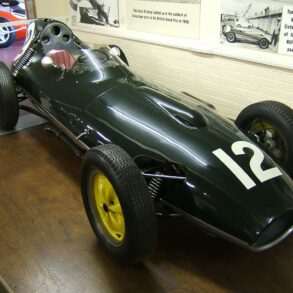
Lotus 16 (F1)
Season: 1958-1960
The Lotus 16 was constructed to compete in both the Formula One and Formula Two categories, and was the first Lotus car to be constructed for Formula One competition.
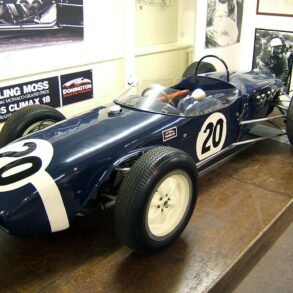
Lotus 18 (F1)
Season: 1960-1961
Lotus 18 was the first mid-engined car built by Lotus and was a marked improvement over Chapman’s early and only moderately successful front-engined formula cars. The 18 was replaced by the 21 in F1.
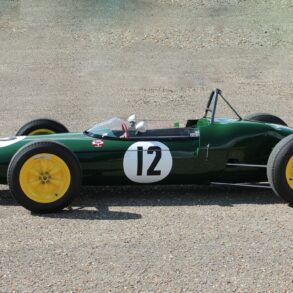
Lotus 21 (F1)
Season: 1961
The Lotus 21 had a tubular spaceframe structure skinned with fibreglass panels. Used by the works Lotus team, the 21 was the first works Lotus to win a Formula One Grand Prix
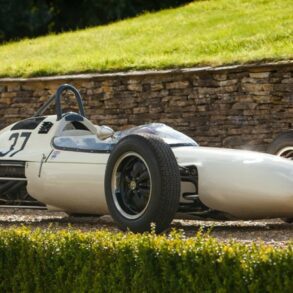
Lotus 24 (F1)
Season: 1962
Despite some early success in non-Championship Grands Prix, it was eclipsed by the technically superior Lotus 25 and rarely featured in the points in World Championship races.

Lotus 25 (F1)
Season: 1962-1964
It was the first fully stressed monocoque chassis to appear in Formula One. In the hands of Jim Clark it took 14 World Championship Grand Prix wins and propelled him to his 1963 World Championship title.
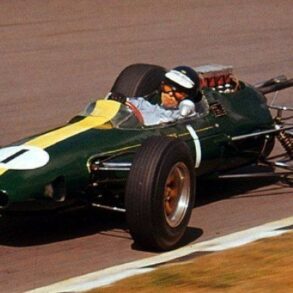
Lotus 33 (F1)
Season: 1964-1965
A development of the successful Lotus 25, in the hands of Jim Clark it won 5 World Championship Grands Prix in 1965, assisting Clark to his second World Championship.
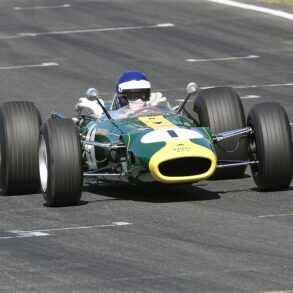
Lotus 43 (F1)
Season: 1966
The Lotus 43 was a Formula One racing car designed by Colin Chapman for the 1966 season. Hampered by its heavy and unreliable BRM engine, it won only one race, the 1966 United States Grand Prix.
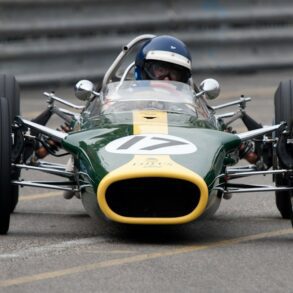
Lotus 49 (F1)
Season: 1967-1970
Designed around the Cosworth DFV engine and built for the 1967 season, the Lotus 49 won on debut. Graham Hill went on to win that year’s title and the car continued winning races until 1970.
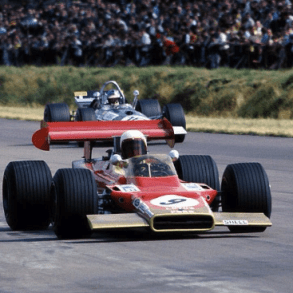
Lotus 63 (F1)
Season: 1969
The Lotus 63 was an experimental F1 car for the 1969 season. Like the Lotus 56 for the Indy 500 (and later F1), the 63 chassis was designed around a four wheel drive system. It was tested in a race in 1969.
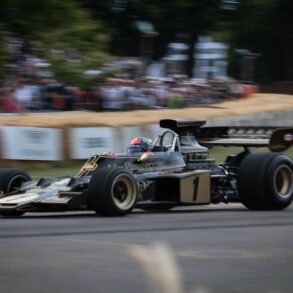
Lotus 72 (F1)
Season: 1970-1972
Introduced partway through 1970 the 72 was immediately competitive. Rindt was almost certainly going to win the championship but was killed in a qualifying crash (becoming F1’s only posthumous champion).
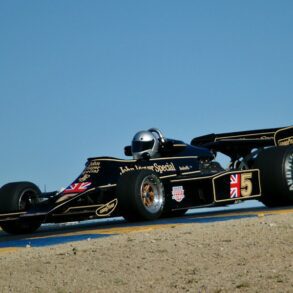
Lotus 77 (F1)
Season: 1976
The car was a stop-gap means to an end for Lotus after the failure of the Lotus 76 and the obsolescence of the Lotus 72. The 77 was slimmer and lighter than the the 72, with similarly powered Cosworth DFV.
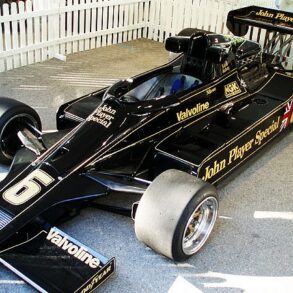
Lotus 78 (F1)
Season: 1977-1978
Known as the “wing car”, the Lotus 78 raced in 1977 and 1978. This was the car that started the F1 ground effects era. The breakthrough was Chapmans insights on low drag air penetration.
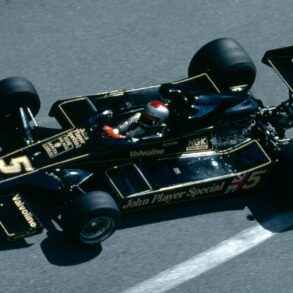
Lotus 79 (F1)
Season: 1978-1979
The Lotus 79 was the first F1 car to take full advantage of ground effects aero, pioneered by the Lotus 78. The 79 was almost unbeatable during 1978, winning Lotus the drivers and constructors championship.
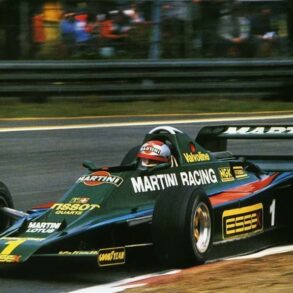
Lotus 80 (F1)
Season: 1979
In 1979, the 79 was to be replaced by the Lotus 80. It was designed to take ground effects to the absolute max. It was not competitive and the Lotus 79 was modified and took over for the rest of the season. A setback.
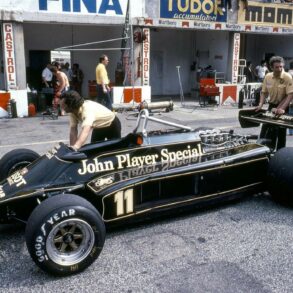
Lotus 87 (F1)
Season: 1980-1982
The 87 continued to leverage ground effects and this time added a stiffer, carbon fiber and kevlar chassis. The car was not competitive enough to fight for victories, even though the drivers did get some points.
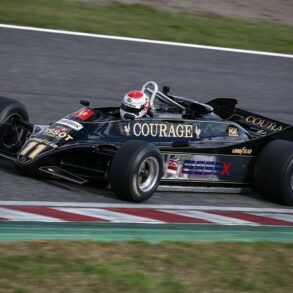
Lotus 88 (F1)
Season: 1981
The 88 had a twin chassis, one inside the other. The inner chassis would hold the cockpit and would be independently sprung from the outer one. Other teams complained and the FIA banned the car.
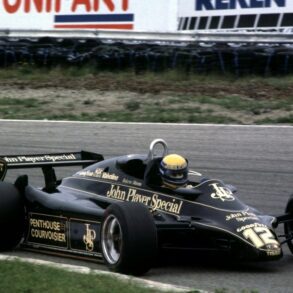
Lotus 91 (F1)
Season: 1982
Powered by the Ford Cosworth DFV the 91 was uncomplicated and was designed from scratch after Lotus had some bad years. The new car was the first Lotus chassis to use carbon brakes. The 91 was mostly competitive on ultra fast tracks.
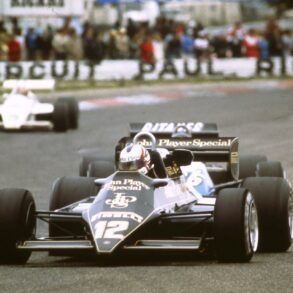
Lotus 92 (F1)
Season: 1983
The last Chapman era car. The 92 was used for the first part of the season. It was the last non-turbo car by Lotus (until the turbos were banned in 1990) and the first car to be fitted with active suspension.
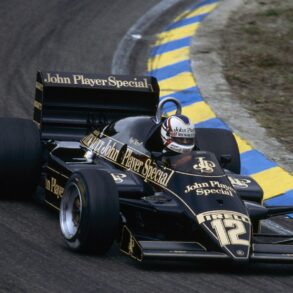
Lotus 93T (F1)
Season: 1983
The year that Lotus switched from Cosworth to Renault power (the first Lotus to use the Renault Gordini EF1 turbo). The 93T was replaced during the season with the Lotus 94T (Mansell drove it twice).
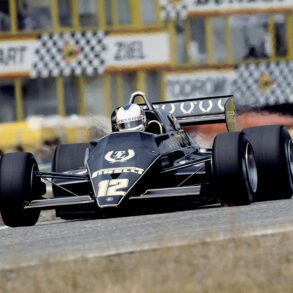
Lotus 94T (F1)
Season: 1983
This car was used in the second part of the ’83 F1 season. Powered by the Renault Gordini EF1 V6 turbo engine it was moderately successful and was able to get third place in the 1983 European grand prix.
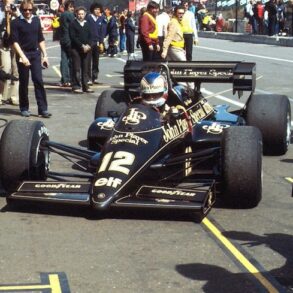
Lotus 95T (F1)
Season: 1984
Built for the 1984 season, the 95T was powered by the Renault Gordini EF4 V6 turbo engine. The car was driven de Angelis and Mansell who were competitive in a season dominated by McLaren.
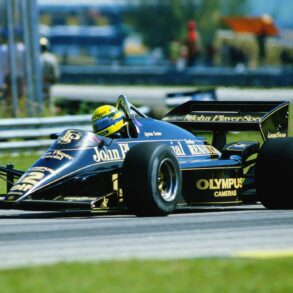
Lotus 97T (F1)
Season: 1985-1986
A development of the previous year’s 95T, the car was powered by the turbocharged 1.5-litre Renault EF15B V6 engine. The car was a success, taking 8 poles, (7 for Senna and 1 for de Angelis), and 3 wins.
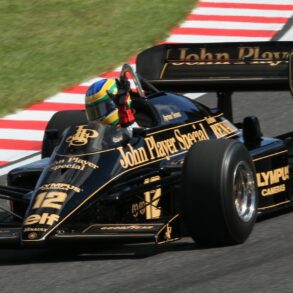
Lotus 98T (F1)
Season: 1986-1987
A development of the previous year’s 97T, the car was raced by Ayrton Senna and Johnny Dumfries. The engine was a Renault EF15B turbocharged V6 engine (one of the most powerful in the sport ever).
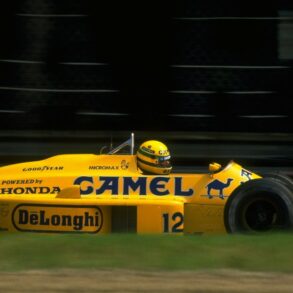
Lotus 99T (F1)
Season: 1987
John Player Special was replaced by Camel as title sponsor for 1987. The 99T was the second Lotus chassis to be fitted with electronic active suspension and won multiple races at the hands of Ayrton Senna.
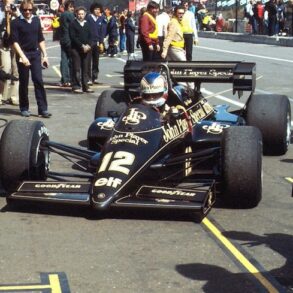
Lotus 100T (F1)
Season: 1988
Used during the 1988 F1 season the Lotus 100T was an updated version of the 99T below. Technically the car was virtually unchanged, except for redesigned nose and rear bodywork.
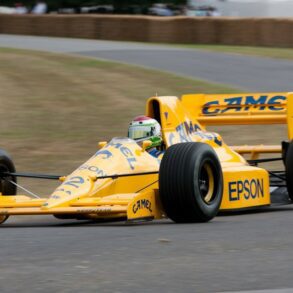
Lotus 101 (F1)
Season: 1989
The Lotus 101 was Team Lotus’s entry for the 1989 Formula One season. While the team was optimistic the 101 was a poor racing car and was very underpowered compared to the Hondas of the era.
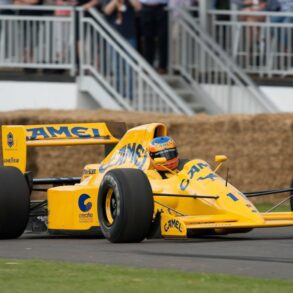
Lotus 101 (F1)
Season: 1989
The Lotus 102 was a F1 car for use in the 1990 season. The 102 was an evolution of the Lotus 101 and would eventually go on to compete in 37 races spanning three seasons from 1990 until 1992.
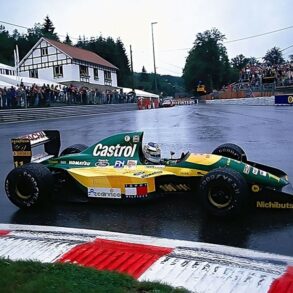
Lotus 107 (F1)
Season: 1992-1994
The Lotus 107 was designed for the 1992 Formula One season, and used throughout most of 1992, 1993 and part of 1994, it brought in a final, short-lived period of competitiveness for the team in F1.
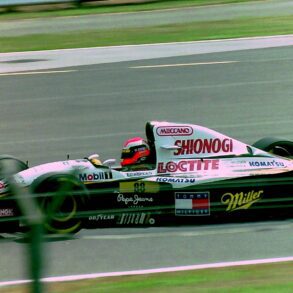
Lotus 109 (F1)
Season: 1994
The Lotus 109 was a Formula One car used by Team Lotus in the latter part of the 1994 Formula One season. It was designed by Chris Murphy who based the car on his Lotus 107 model.
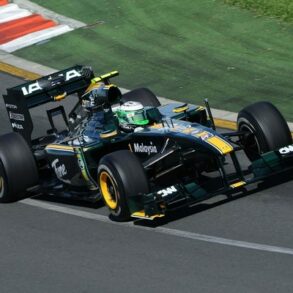
Lotus T127 (F1)
Season: 2010
Team Lotus F1 car, made for 2010 season. An average year in 2010 when it raced but it did show that it was faster than the other new teams of the same year which was a big win.
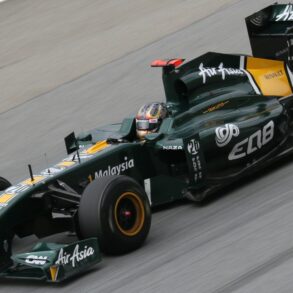
Lotus T128 (F1)
Season: 2011
Team Lotus F1 car, made for 2011 season. 2011 saw the car abandon its Cosworth engine in favour of one developed by Renault. The T128 was faster than the Virgin cars and HRTs.
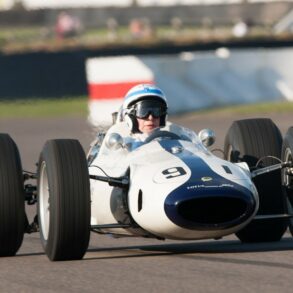
Lotus 29 (IndyCar)
Season: 1963
Lotus’s first Indycar was a development of the Formula 1 Lotus 25. It had a Ford V8 engine. Two 29s raced in the 1963 Indy 500, one finished second. The Lotus 29 dominated at Milwaukee later in ’63.
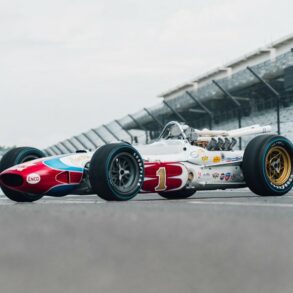
Lotus 34 (IndyCar)
Season: 1964
With experience under their belts and more time to prepare, the new-for-1964 Lotus 34 Ford looked set to finally take it all. While they didn’t win due to a failure, they get four USAC victories and two Indy 500 poles.
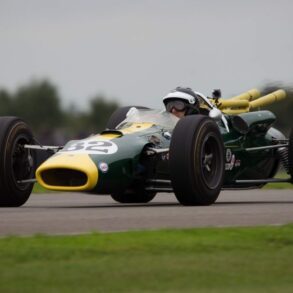
Lotus 38 (IndyCar)
Season: 1965
The 1965 Lotus 38 finally won the Indy 500 for Colin Chapman and Jim Clark after Clark had finished second in 1963 in the Lotus 29 and had retired after leading from pole in 1964 in the Lotus 34.
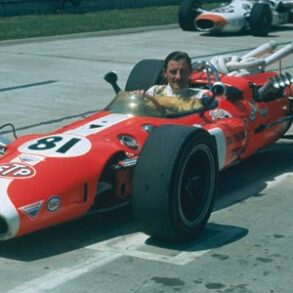
Lotus 42 (IndyCar)
Season: 1966-1967
The Lotus 42B was originally designed as an Indianapolis car but would do most of its racing in F5000. A Ford V8 was fitted to the first Lotus 42, which Graham Hill raced at Indianapolis in 1967.
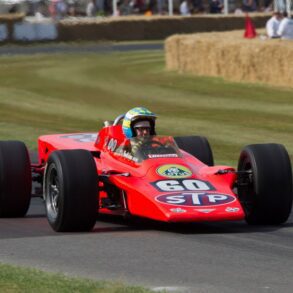
Lotus 56B (IndyCar)
Season: 1968
The all-new Indy racer was built around an aluminium monocoque chassis. The new Lotus was powered by a Pratt & Whitney turbine. At the end of the year, both turbine engines and four-wheel drive were outlawed.
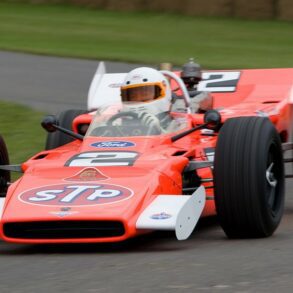
Lotus 64 Ford (IndyCar)
Season: 1969 Season (Didn't race)
Lotus retained much of the Lotus 56 chassis which had worked so well in 1968. A failure in one car lead to the cars being withdrawn from the race. Further controversy followed the remaining cars.
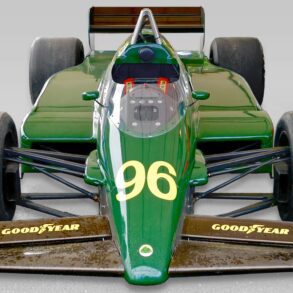
Lotus 96T (IndyCar)
Season: 1984
The Lotus type 96T was Team Lotus’s last Indycar. Despite the project’s promising beginnings, CART did not support a Works team and that meant no sponsorship and the end of the program.
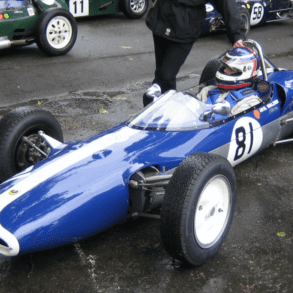
Lotus 27
Season: 1963
The Lotus 27 was a Formula Junior version of the Lotus 25 Formula One car for the 1963 Formula Junior season. Its body was aluminium monocoque with steel bulkheads.
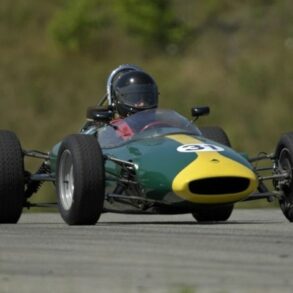
Lotus 31
Season: 1964-1965
The Lotus 31 was a racing car produced by Lotus for the new 1-litre Formula 3 introduced in 1964, replacing the expensive Formula Junior. It had 97hp from a Ford engine.
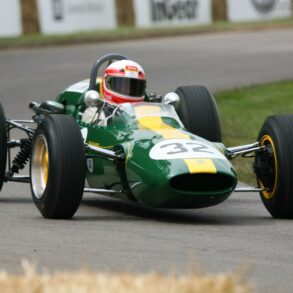
Lotus 32
Season: 1964-1965
The chassis of the 32 was an aluminium monocoque with steel front and rear bulkhead and centre section to bring it up to weight. Raced in F2 and Tasman Cup.
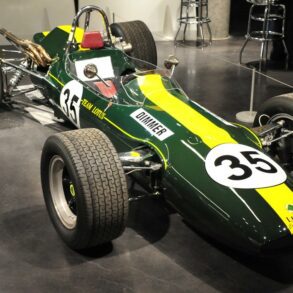
Lotus 35
Season: 1965
Chapman decided that for 1964 Lotus needed a versatile car based on the Lotus 25 and 33. Lotus 35 was the result. Could accommodate number of engines. Raced in F2, F3, FB.
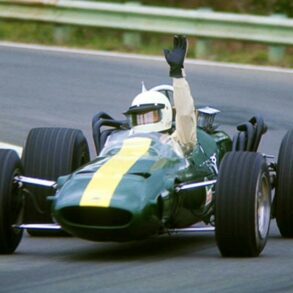
Lotus 39
Season: 1965-1966
Used as a Tasman Cup formula car (originally designed for F1), the Type 39 was powered by a Coventry Climax 2.5 L. Good enough for Clark to finish 3rd in 1966 Tasman Series.
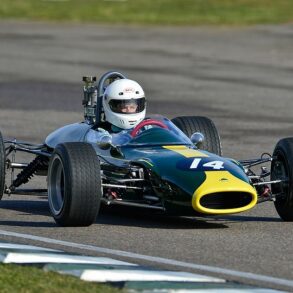
Lotus 41
Season: 1966-1968
The 41 was a multi-purpose machine, racing in Formula Three, Formula Two and Formula B. It was a clean-sheet car and they created a very stiff and cleverly designed race car.
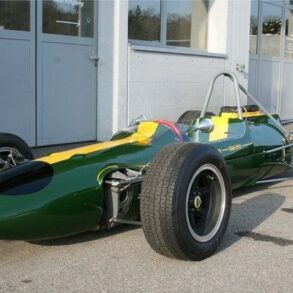
Lotus 44
Season: 1967
Formula two car built by Lotus. Unfortunately we could not find much public information about this car.
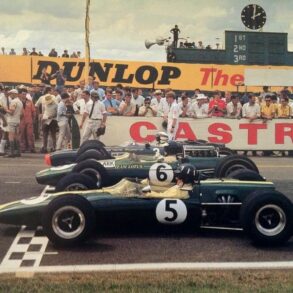
Lotus 48
Season: 1967
The Lotus 48 was a Formula 2 racing car designed by Colin Chapman. Bolted to the rear bulkhead was a steel tubular subframe, which housed the FVA engine and ZF gearbox.
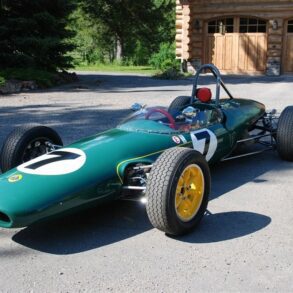
Lotus 51
Season: 1967-1969
Lotus built the Type 51, Type 51A and Type 51R during the 1967 and 1968 Formula Ford seasons. The Type 51 Series did very well in Formula Ford competition and this helped increase demand for the cars.
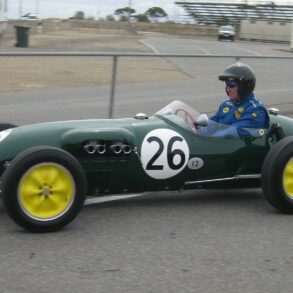
Lotus 12 (F2)
Season: 1958
The Lotus 12 was a Formula Two and Formula One racing car. Despite its engineering advances, the 12 was not a success in F1. In F2, the car won the class in the mixed F1/F2 1958 BRDC International Trophy.
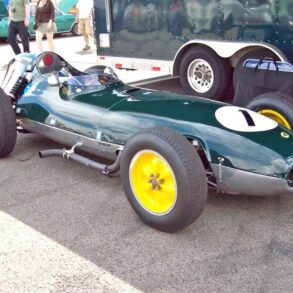
Lotus 16 (F2)
Season: 1960–1961
The Lotus 16 was constructed to compete in both the Formula One and Formula Two categories, and was the first Lotus car to be constructed for Formula One competition.
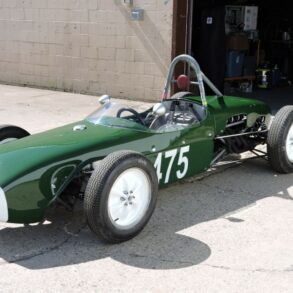
Lotus 18 (F3)
Season: 1960–1961
Lotus 18 was the first mid-engined car built by Lotus and was a marked improvement over Chapman’s early and only moderately successful front-engined formula cars.
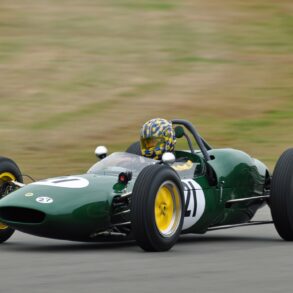
Lotus 20 (F3)
Season: 1961
Successor to the Lotus 18, the Lotus 20 was a Formula Junior car built for the 1961 season. The 20B was mostly the same as the 20, but with sway bar and stock inboard drum brakes in the rear.
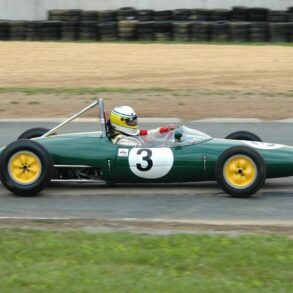
Lotus 22 (F3)
Season: 1962-1965
The 22 is a single-seat race car primarily for the Formula Junior series and most had a 1,098 cc (67.0 cu in) Cosworth Mk.IV or Mk.XI engine with about 100 hp.
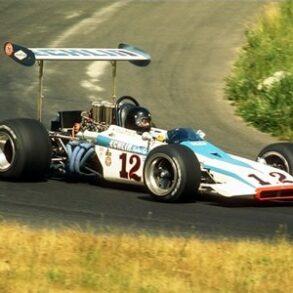
Lotus 70 (F5000/Form A)
Season: 1970
The Lotus 70 was a race car designed by Lotus for the Formula 5000 races. Originally designated the Lotus 68, the car was designed by Martin Waide and introduced at the end of the 1969 racing season.
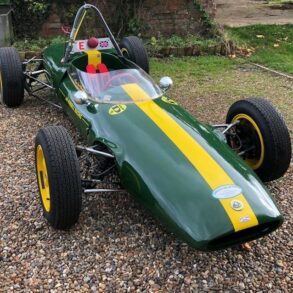
Lotus 31 (F3)
Season: 1964
The first F3 Lotus was the 31 which was basically a minor rework of the 1962 F Junior 22. In the year of Jackie Stewart and the Tyrrell-Coopers the 31 was very much an also ran with just one win.
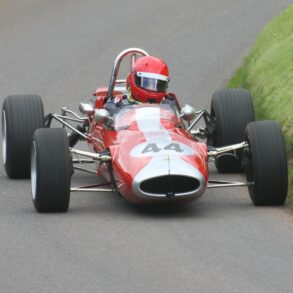
Lotus 35 (F3)
Season: 1965
There was no specific F3 model for 1965 but several teams modified the F2 Type 35 to F3 spec. The lack of any interest by Lotus showed and the there was only one win for Lotus.
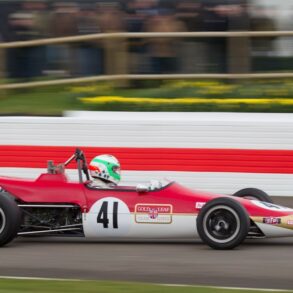
Lotus 41 (F3)
Season: 1966
The 41 was the result of a major rethink by Lotus. Results were at best reasonable. There were several victories in the season but once again Brabham was the leader by a mile and dominated.
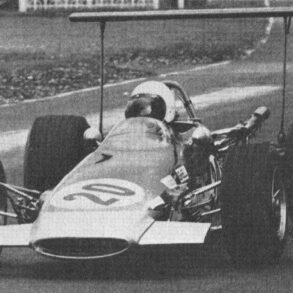
Lotus 55 (F3)
Season: 1968
Lotus took a 41C and modified the front suspension. In addition a dramatic (for the time) wedge shaped body was fitted. Only the one car was built and average performance meant Lotus moved to 59.
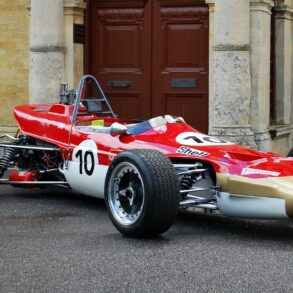
Lotus 59 (F2/F3)
Season: 1969-1970
The Lotus 59 was a dual purpose F2/F3 spaceframe chassis. The car proved a success, its chunky body hampered it a little on fast circuits but it had a reputation for putting the power down very well.
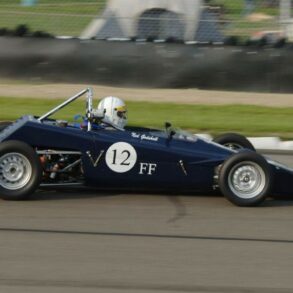
Lotus 61 (F Ford)
Season: 1969
Formula Ford, “the wedge”. The Lotus 61 was used all over Europe and America in Formula Ford. The car had Removable fiberglass nose, bellypan, and engine cover. It was moderately successful in Formula Ford.
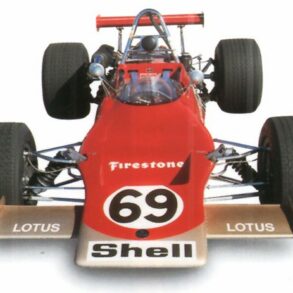
Lotus 69 (F2/F3/F Ford)
Season: 1970
The Lotus 69 was designed by Dave Baldwin for use in F2, F3, F Ford and FB/ Atlantic. The Novamotor twin-cam Ford powered car winning no less than 25 races out of 32 entered.
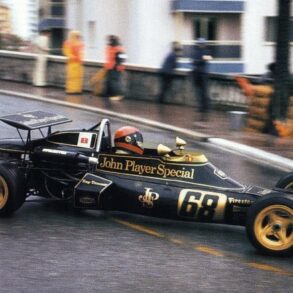
Lotus 73 (F3)
Season: 1972-1973
The 73 was the F3 answer to the F1 Championship winning 72. Built for use as a works car, it was designated a “John Player Special”. The car was ultimately too complex to be set up quickly for short F3 races.
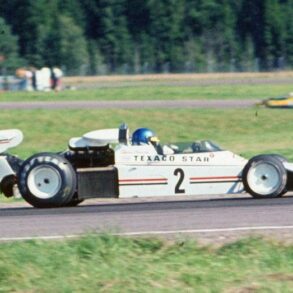
Lotus 74 (F2)
Season: 1973
The Texaco Stars were first shown to the public at the Belgian GP. The 16-valve racing version of the Lotus engine was developed by Novamotor (Gianni Pedrazzani) and it was claimed it would develop 275 bhp.
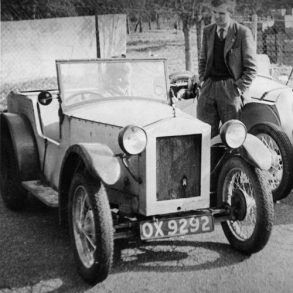
Lotus Mark I
Season: 1969
The first car designed and built by Colin Chapman in 1948 (while still a student at the University of London). Designed to compete as a trials car. Austin 7 chassis and running gear.
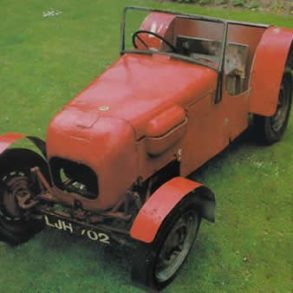
Lotus Mark II
Season: 1949-1950
Improved on the Mark I. Austin 7 body and now with a Ford engine and transmission. Had a cigar-shaped body with a rounded nose. Designed to compete in Trials events, it also won its class at Silverstone.
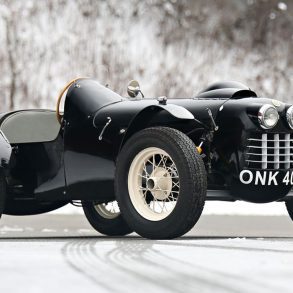
Lotus Mark III
Season: 1951
Colin got serious by building a single-seater sports car. This was the first “Lotus” branded car and it marked a change of focus for Chapman who built the Mark III to focus on road racing rather than trials.
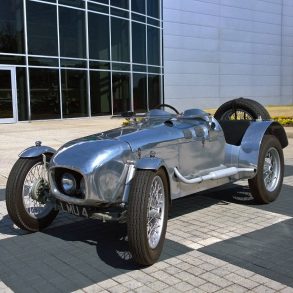
Lotus Mark IV
Season: 1952
Chapman went back to focusing on trials for the Mark IV. Once again it was based on the Austin 7 chassis with a Ford 4 cylinder engine. Immediately successful it won its class on its first attempt.
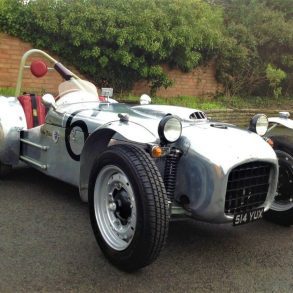
Lotus Mark VI
Season: 1953-1957
Chapman’s first production race car. Essentially a kit car that customers would buy and add whatever engine and gearbox they wanted. This flexibility meant it could be used in a lot of race series’.
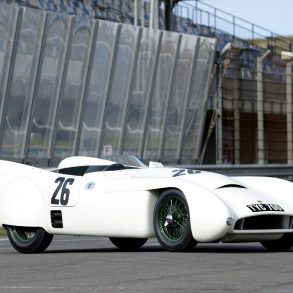
Lotus Mark VIII
Season: 1953-1955
The Lotus Mark VIII car was Colin Chapman’s first fully enclosed aerodynamic design. It was a lightweight 1100 lbs powered by an 85 bhp engine and a maximum speed of 125 mph.
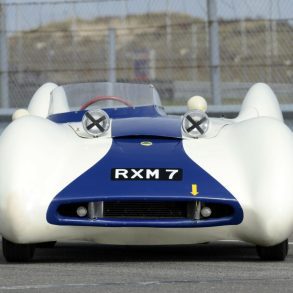
Lotus Mark IX
Season: 1954-1955
A total of about thirty of the Mark IX sports racing cars were produced in various forms, and these were successfully raced in both Europe and the US. It had a new chassis compared to the Mark VIII.
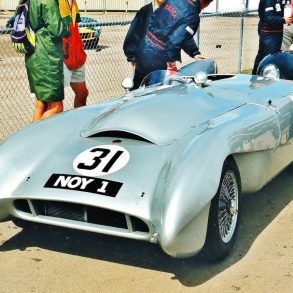
Lotus Mark X
Season: 1956-1958
The Lotus Mark X was an aluminium-bodied sports racing car manufactured by Lotus Engineering Ltd. The X was almost identical to the Mark VIII but made use of the larger 2.0-litre Bristol engine.
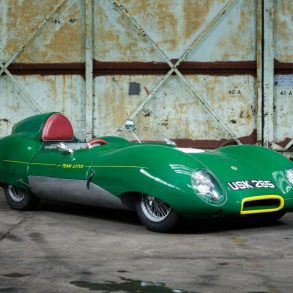
Lotus Eleven
Season: 1956-1957
The Lotus Eleven was a small displacement sports racer (750 – 1500 cc) made by Lotus in 1956. The car’s most notable race result was 7th overall at the 1956 Le Mans. A design update happened in 1957.
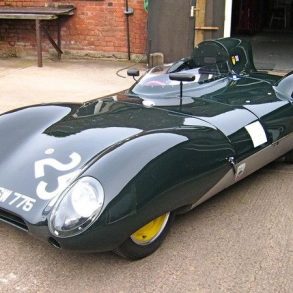
Lotus 13 (Eleven Series 2)
Season: 1956-1958
The later versions of the Lotus Eleven (built in 1958) were officially called Eleven Series 2, but were informally referred to as Lotus 13 because they were made between the 12 and 14 (13 was not used by Lotus).
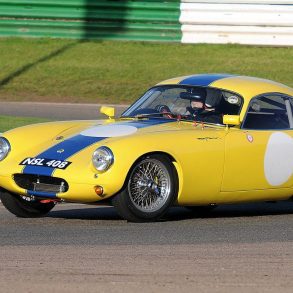
Lotus 14 (Elite)
Season: 1957-1963
The Lotus Elite was the first production street car. Like its siblings, the Elite was run in numerous formulae, with particular success at Le Mans and the Nürburgring. We are adding it here because it raced.
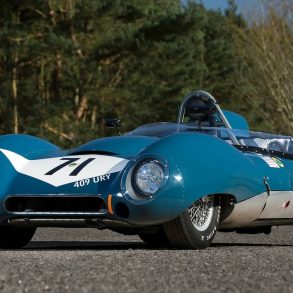
Lotus 15
Season: 1958-1960
This Group 4 Lotus racer was a two-seater, front-engine, rear wheel drive sports racer with an aluminium body over a space frame configuration. It was an update of the Mark X, Climax 1.5 – 2.5 L.
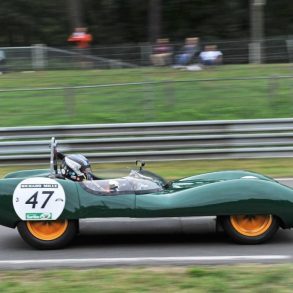
Lotus 17
Season: 1959
The Lotus 17 was Chapman’s answer to the Lola Mk 1. It was essentially a smaller, even lighter, even more aerodynamic sports racer update of the Eleven which was being beaten by the Lola Mk I.
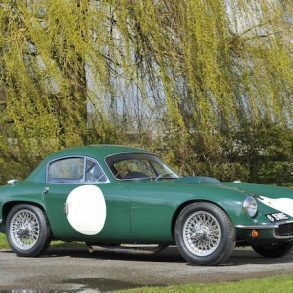
Lotus LX (Le Mans)
Season: 1960
Lotus Elite road car built to win at Le Mans with a 2.0 L FPF engine. However, its Le Mans foray was ill-starred from the beginning. A number of issues lead to the Le Mans entry being cancelled.
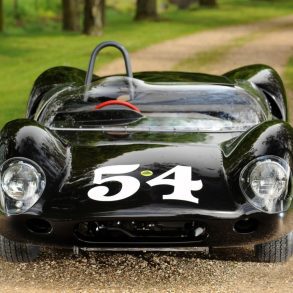
Lotus 19
Season: 1960-1962
Mid-engined larger displacement sports racer, “Monte Carlo”. The 19 and 19B were mid-engine, rear wheel drive sports racer with a fiberglass body over a space frame. The car raced in Group 4.
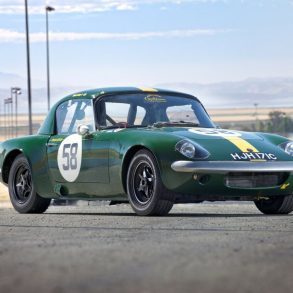
Lotus 26R
Season: 1962-1966
The Elan 26R was fully homologated racing version of Elan. The racing car weighed in at around 600 kg while the 1558 cc could produce anywhere between 160 and 175 bhp depending on state of tune.
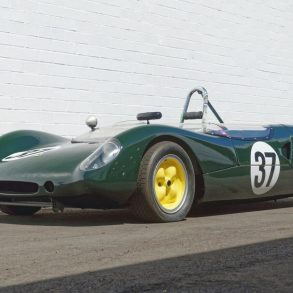
Lotus 23
Season: 1962-1963
Small displacement mid-engined sports racer. Nominally a two-seater, it was purpose-built for FIA Group 4 racing in 1962–1963. To comply with FIA, it had a regulation trunk space to the right-rear of the driver.
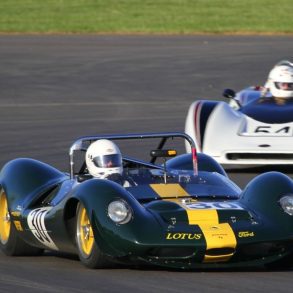
Lotus 30
Season: 1964
This was Chapman’s first attempt at a large displacement sports car. With a Ford small block V8 it races in both British and international races. Fun fact is that it was originally equipped with headlights and tail lights.
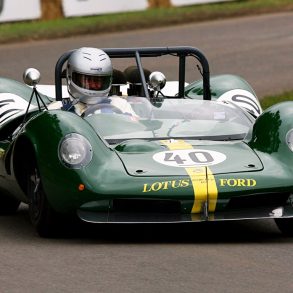
Lotus 40
Season: 1965
The Lotus 40 was a further development of the Lotus 30. Equipped with 15in wheels and vented disc brakes as well as a larger engine, the 40 was just as recalcitrant as the 30. Tough race car.
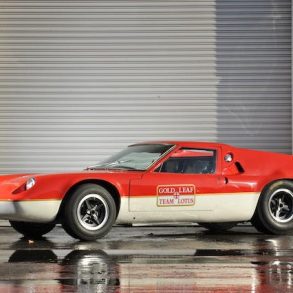
Lotus 47
Season: 1966-1970
Racing version of Europa. The very first Type 47 was based on a modified Europa while all subsequent cars were produced entirely by Lotus Components rather than the main factory.
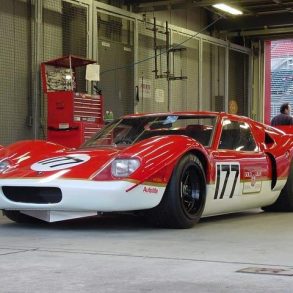
Lotus Europa Type 62
Season: 1969
A tubular space framed Europa coupe with a 1990cc 220bhp Vauxhall based slant four engine and used double wishbone suspension at both front and rear. Only 2 built.

Lotus Esprit X180R
Season: 1991-1994
In 1990 Lotus needed a race program to promote the Esprit in the US market. To do this they upgraded an Esprit SE to race in the SCCA series. The new car, strictly race prepared, was called the Type 105.
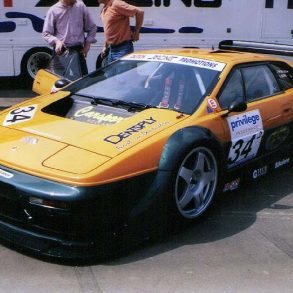
Lotus Esprit Type 114
Season: 1996-1997
The 73 was the F3 answer to the F1 Championship winning 72. Built for use as a works car, it was designated a “John Player Special”. The car was ultimately too complex to be set up quickly for short F3 races.
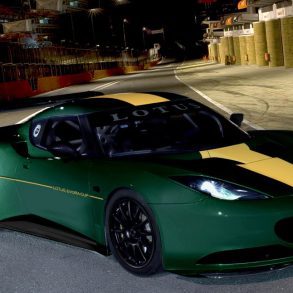
Lotus Evora GT4/Cup
Season: 2010
The Evora Cup race car was designed to offer a level of performance that would make it competitive in GT4 racing. The car was eligible to compete in a number of different national and international serie
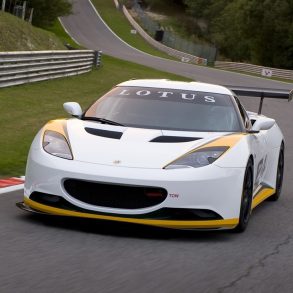
Lotus Evora Type 124
Season: 2010
The Lotus Evora Type 124 Endurance Racecar has been developed from the award-winning Evora road car and is built to FIA regulations and safety standards.
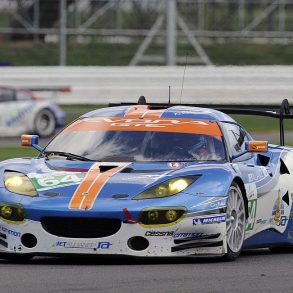
Lotus Evora GTE
Season: 2011
In 2011 Lotus re envisioned their Evora into the GTE race car. It was made for outright endurance racing at events like the 24 Hours of Le Mans. The body is entirely new and constructed from carbon fiber.
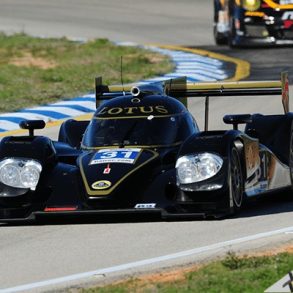
Lotus T128 (Le Mans)
Season: 2012
Race car built for 24 Hours of LeMans. Lotus publicly announced its T128 programme on the weekend of the 2012 24 Hours of Le Mans. It did not have much success in prototype racing.
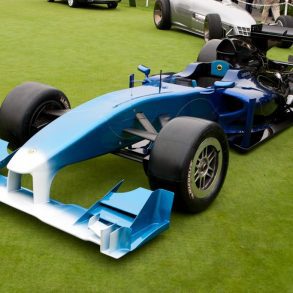
Lotus Exos T125
Season: 2010
The Type 125 Exos is the third of a batch of competition cars. The T125 is powered by a Cosworth 3.5 litre GP V8 engine producing 640bhp linked to a six-speed semi automatic gearbox with paddle shift.



